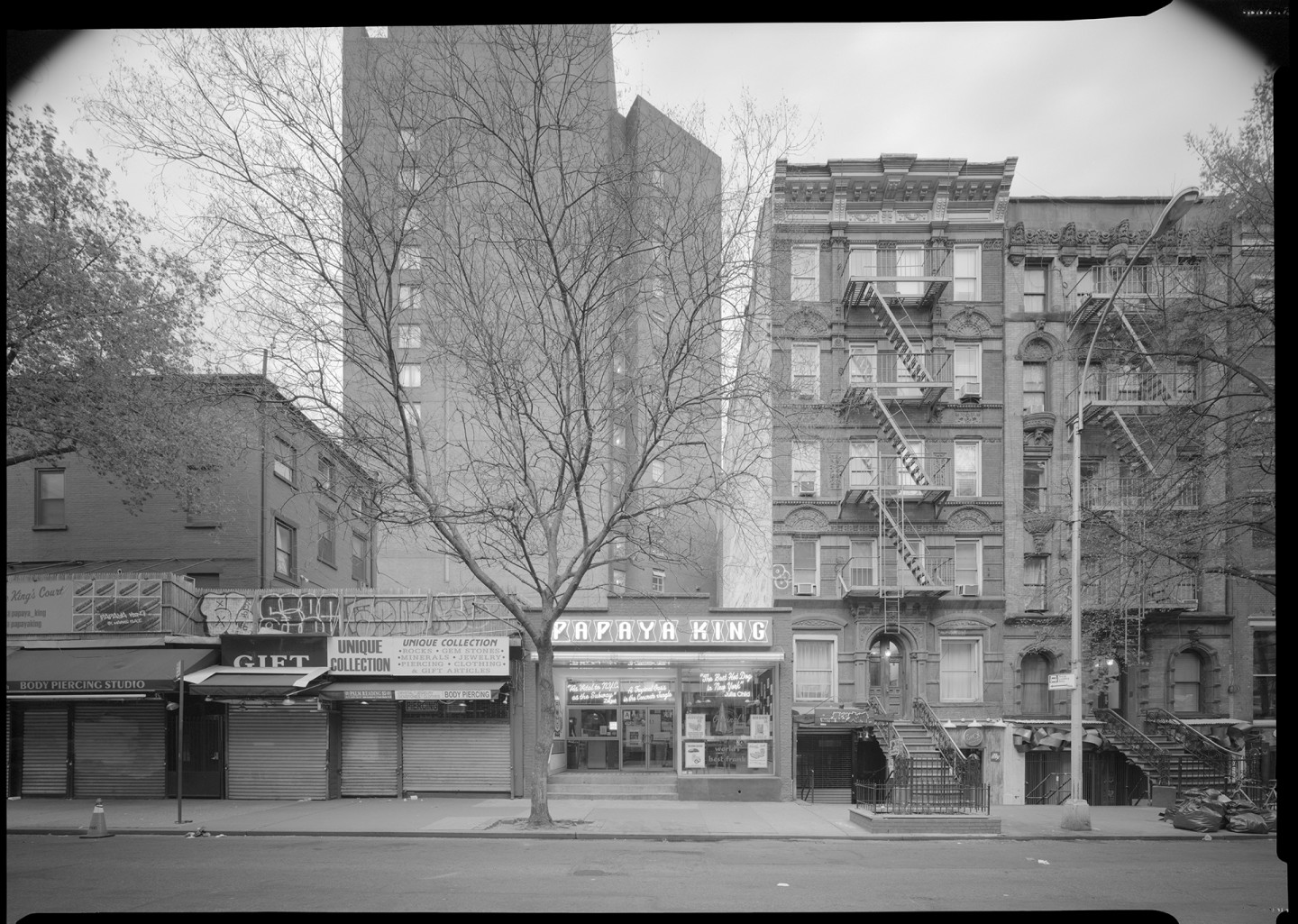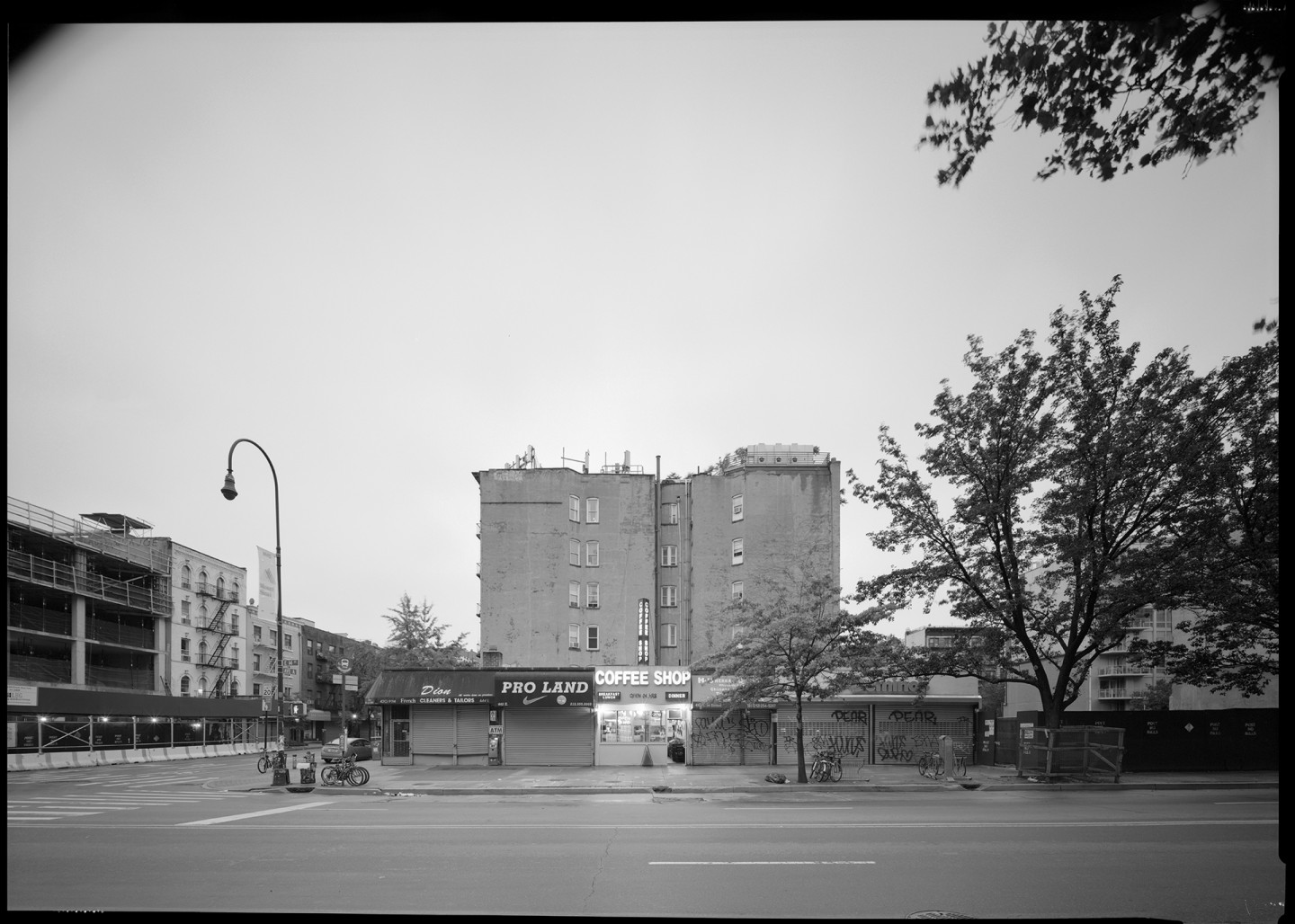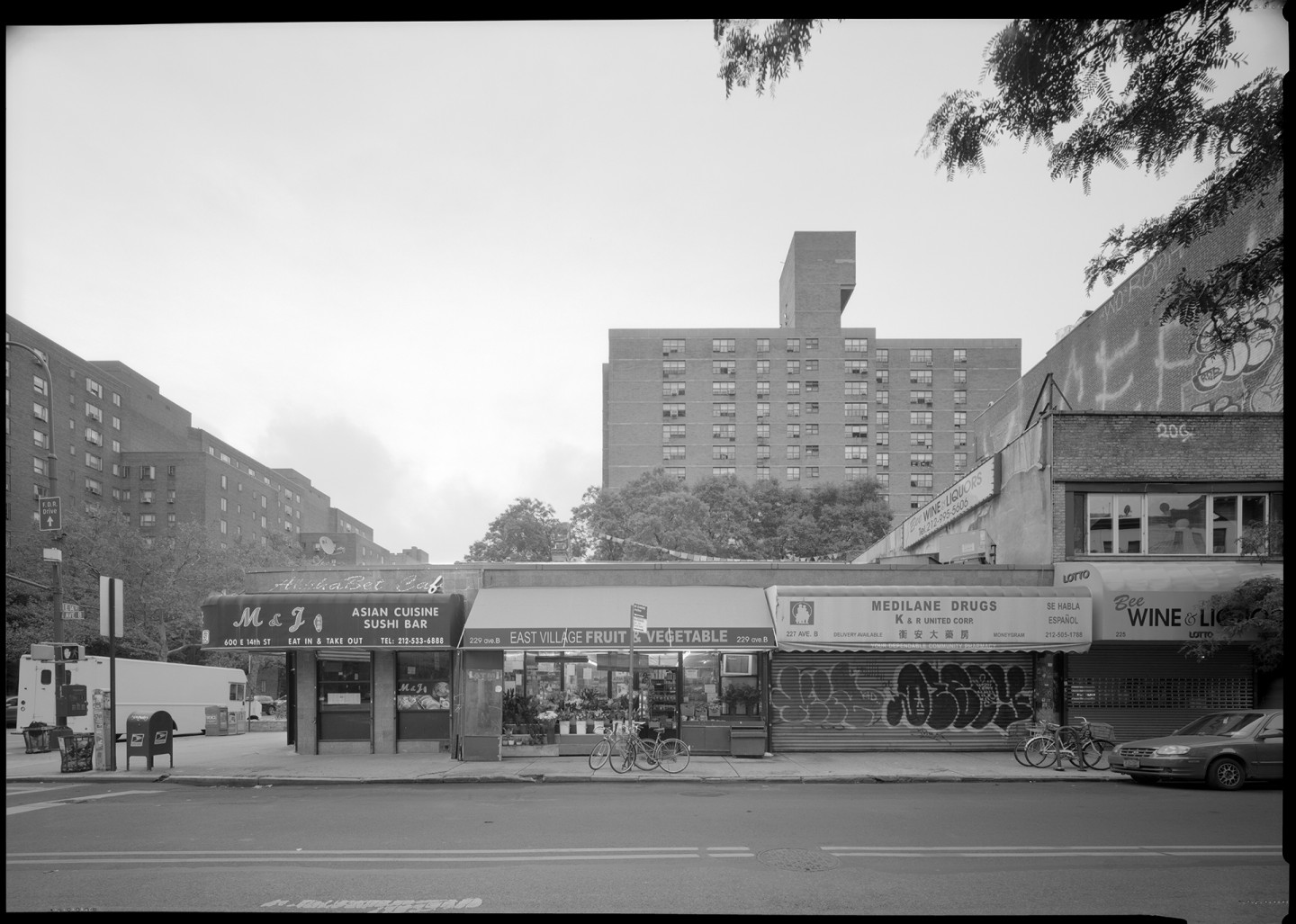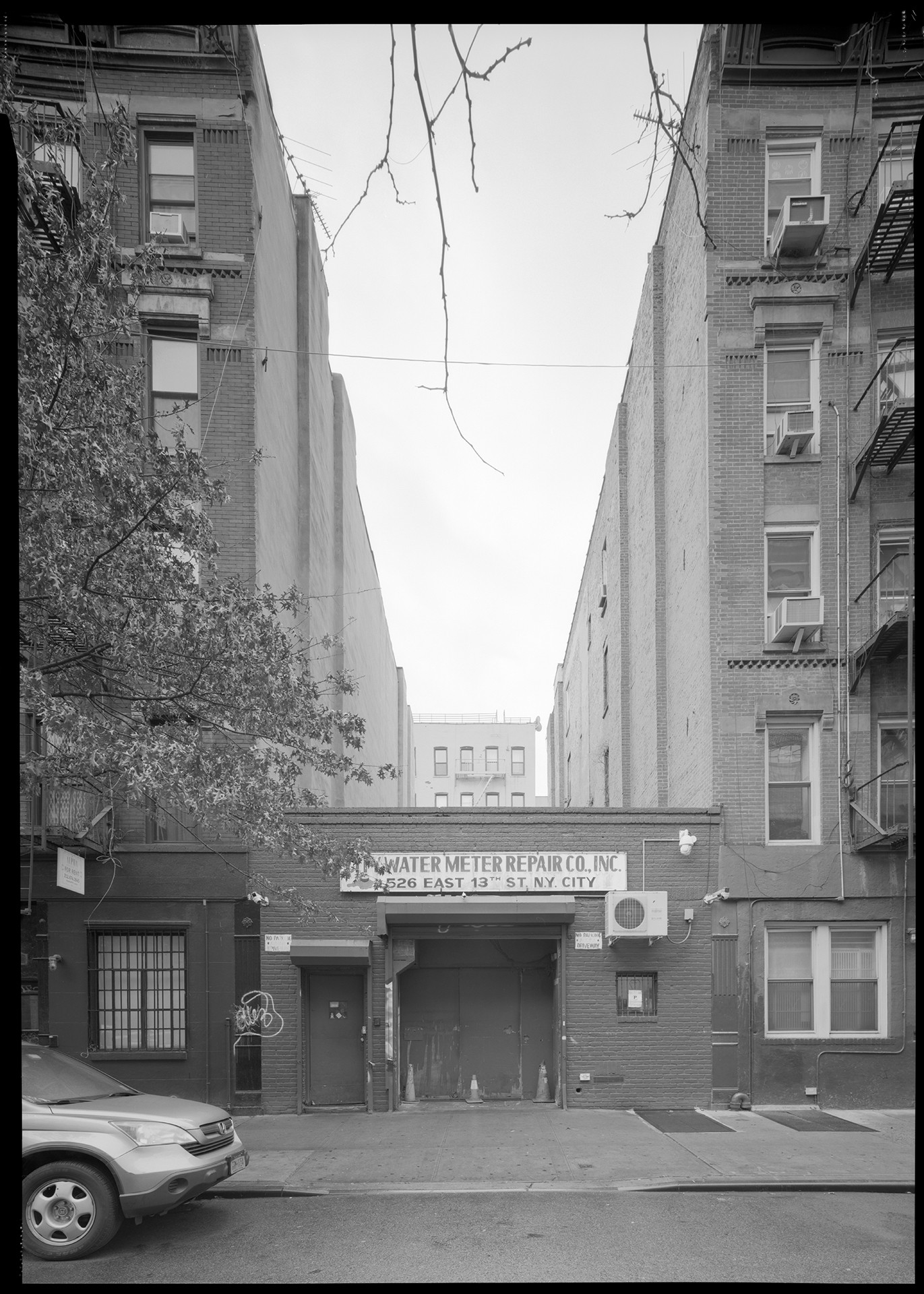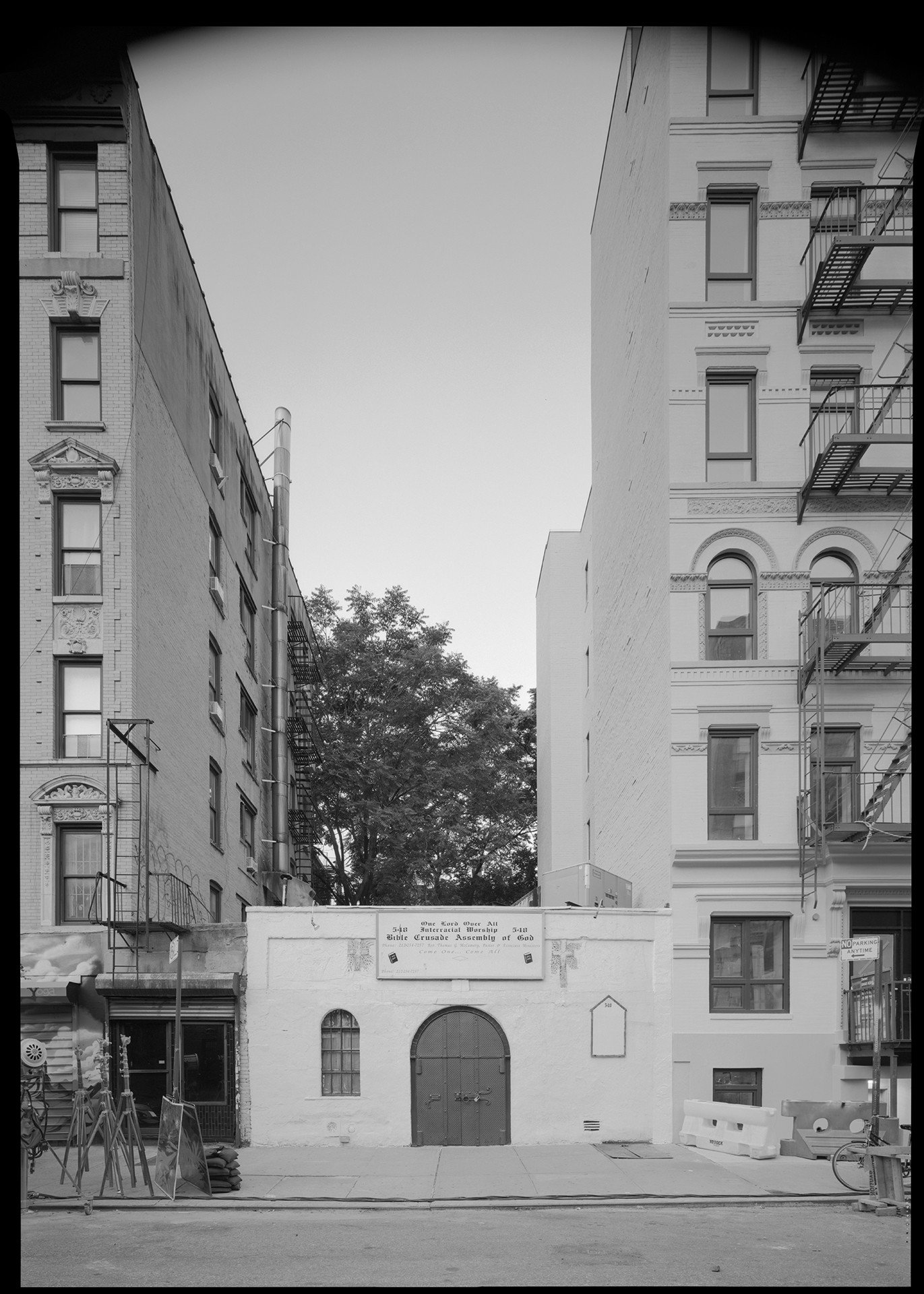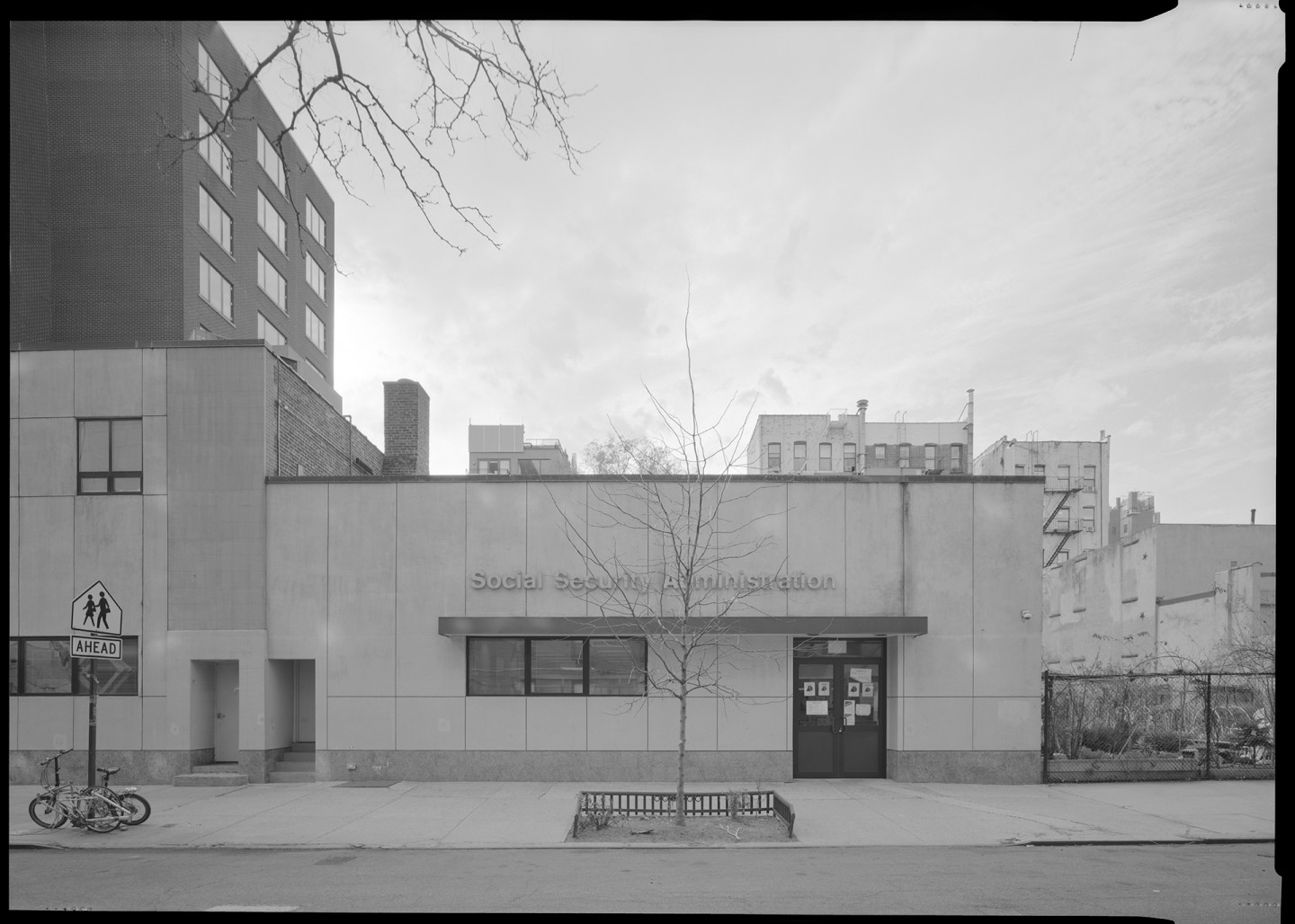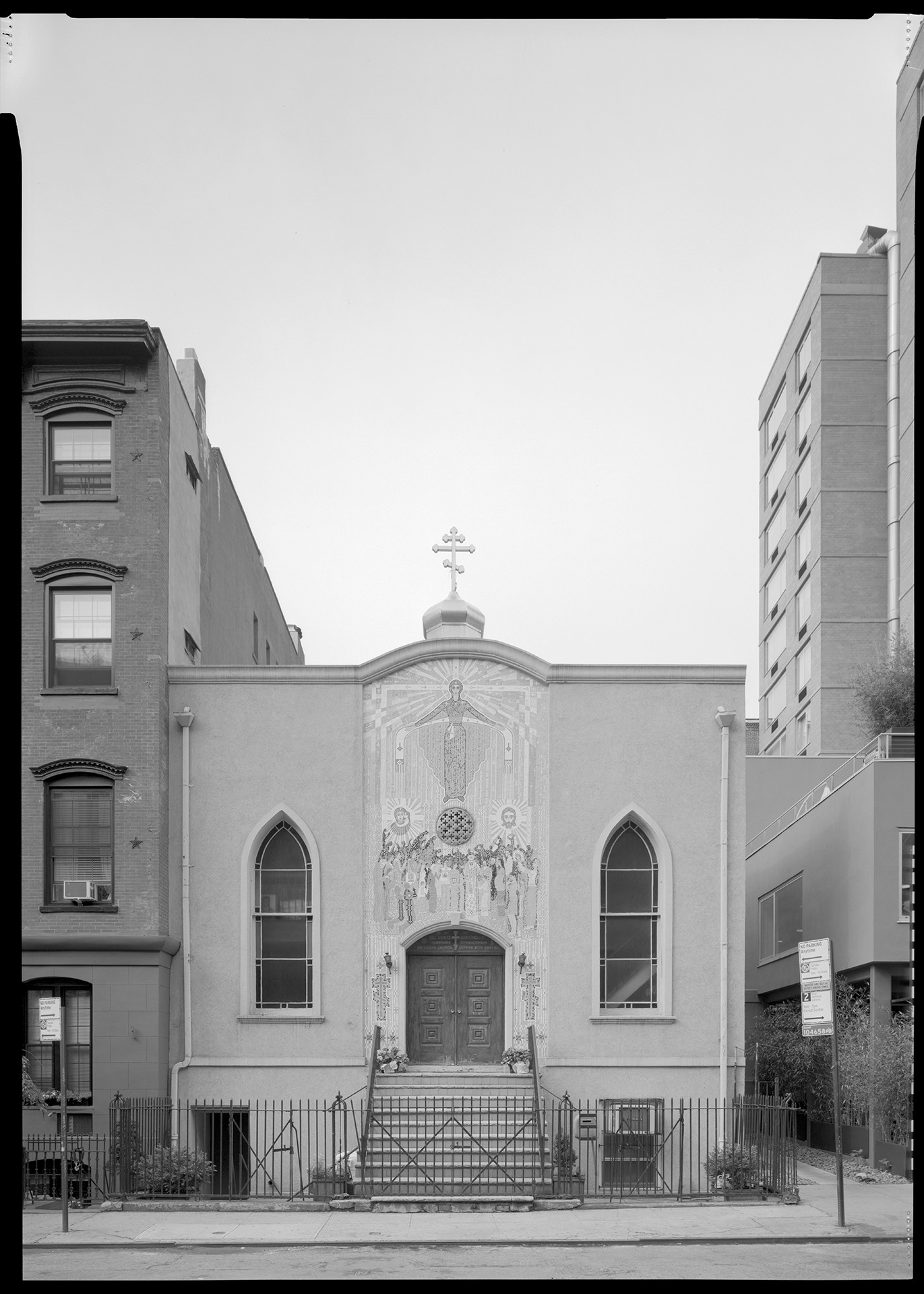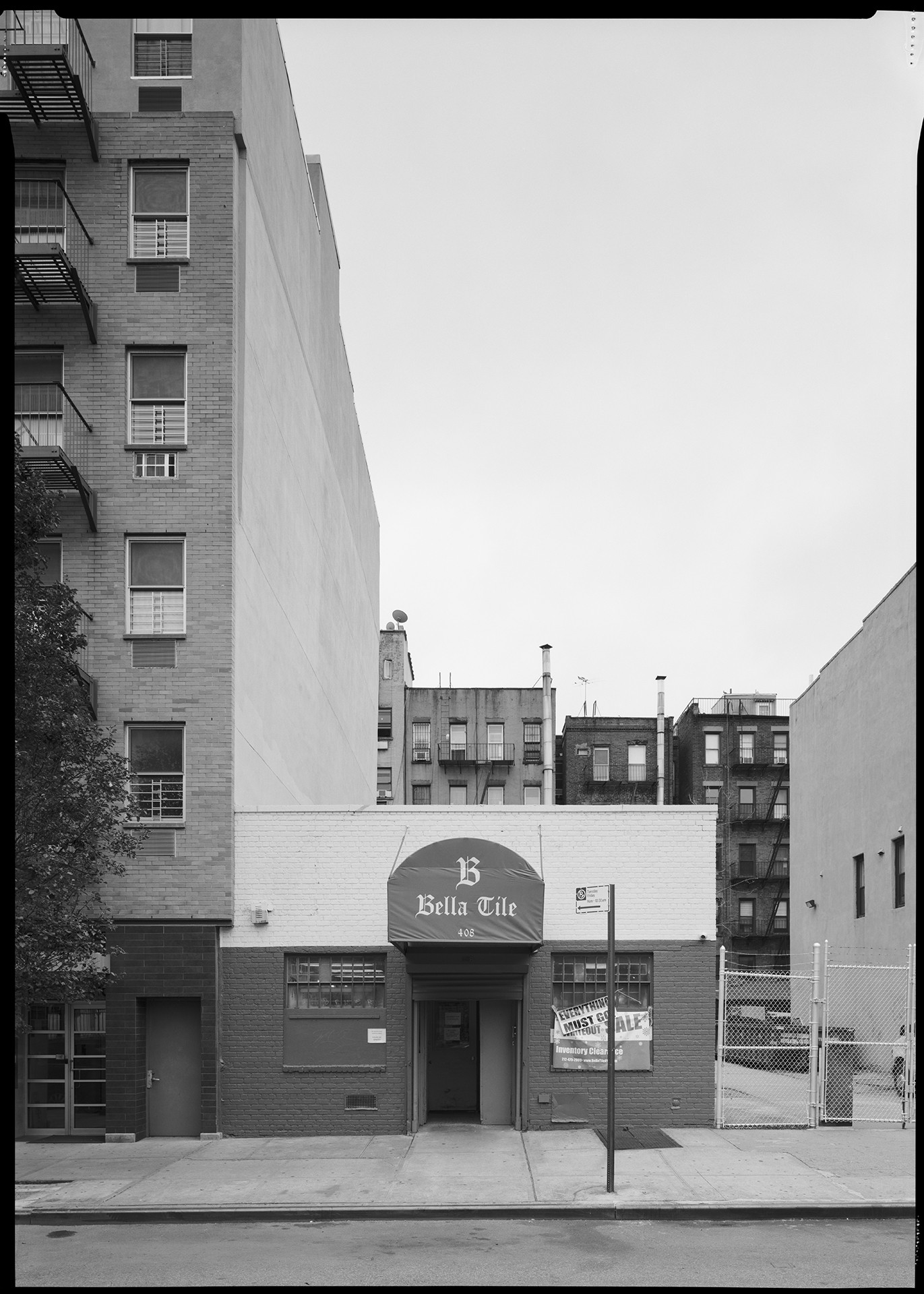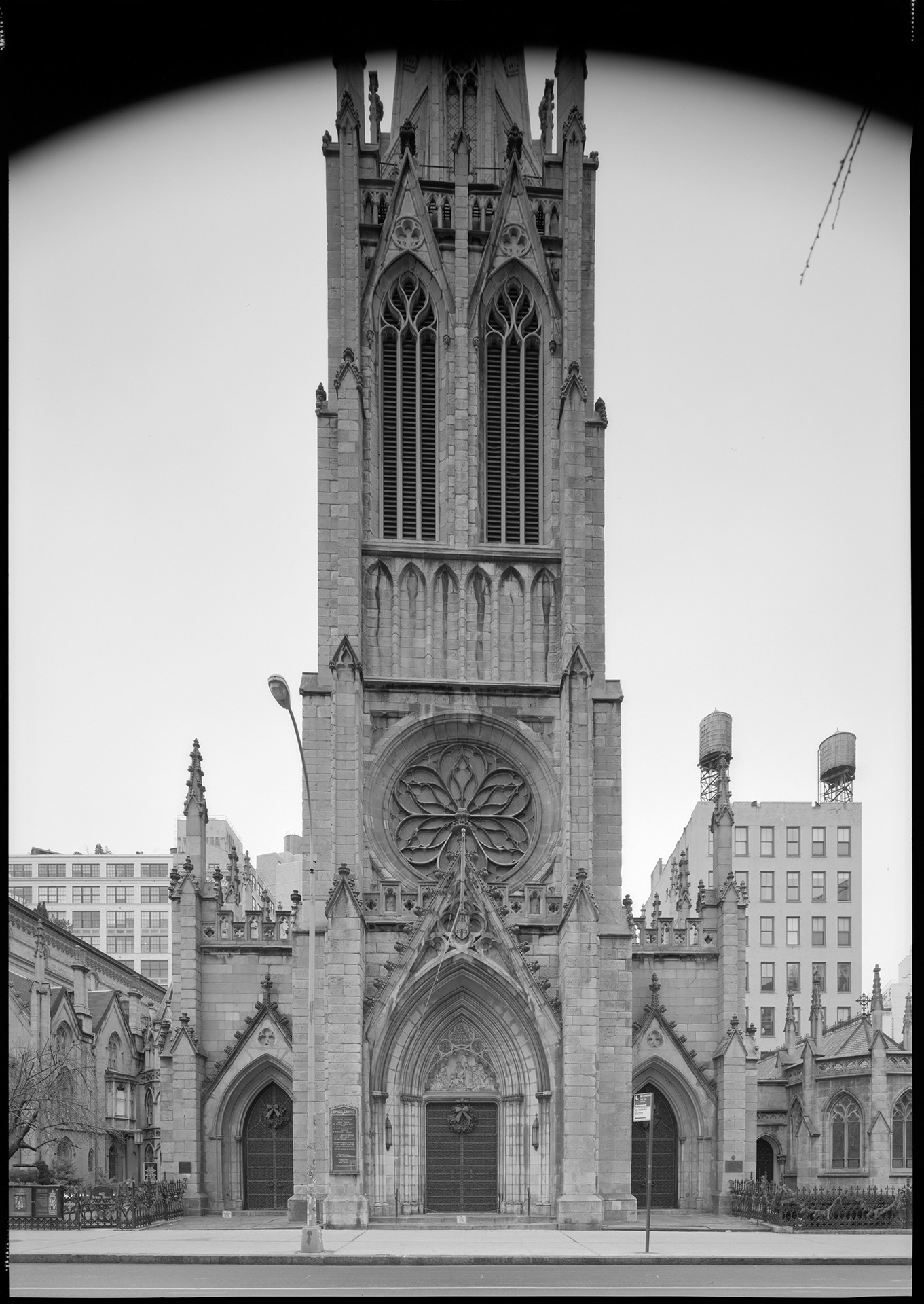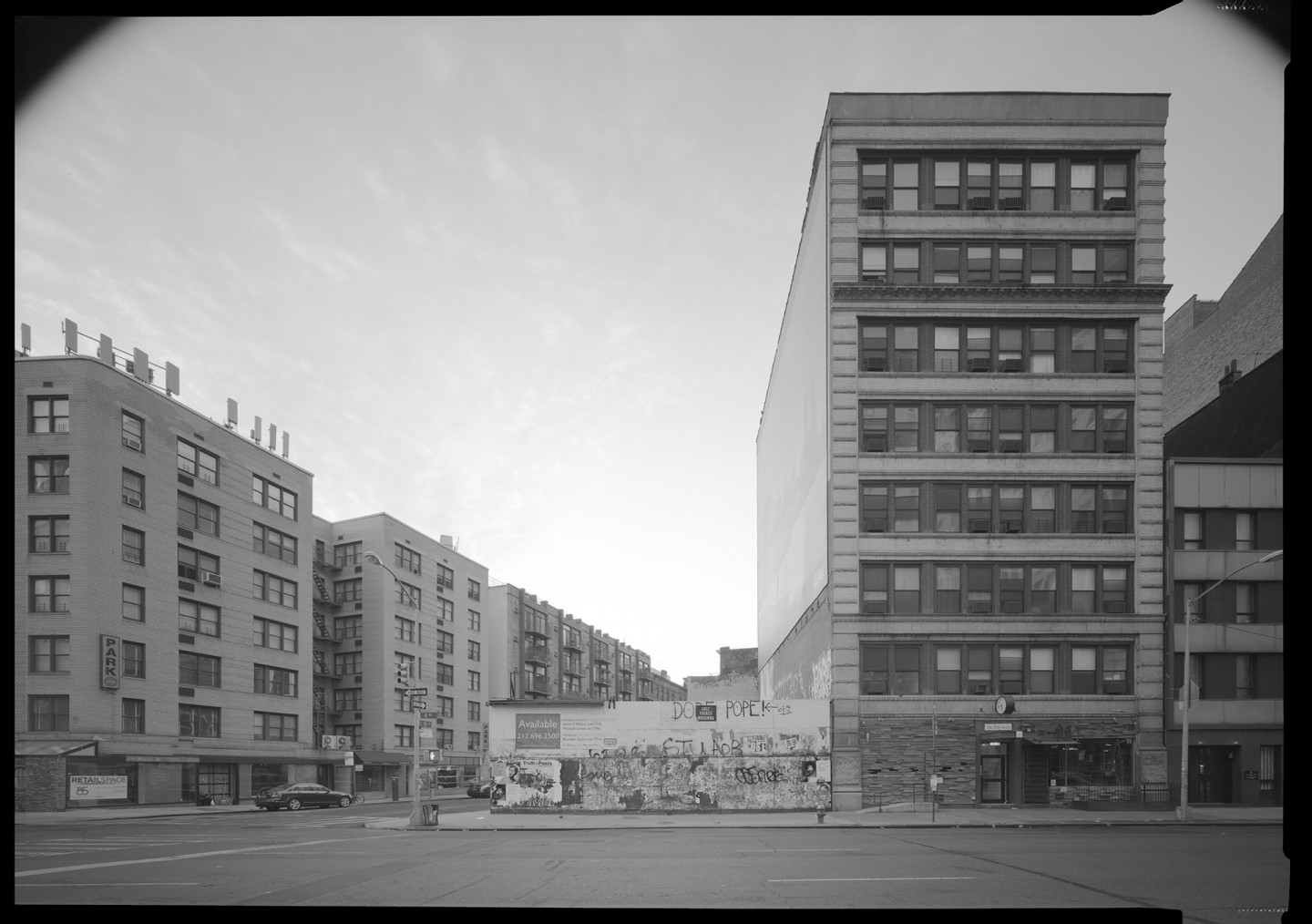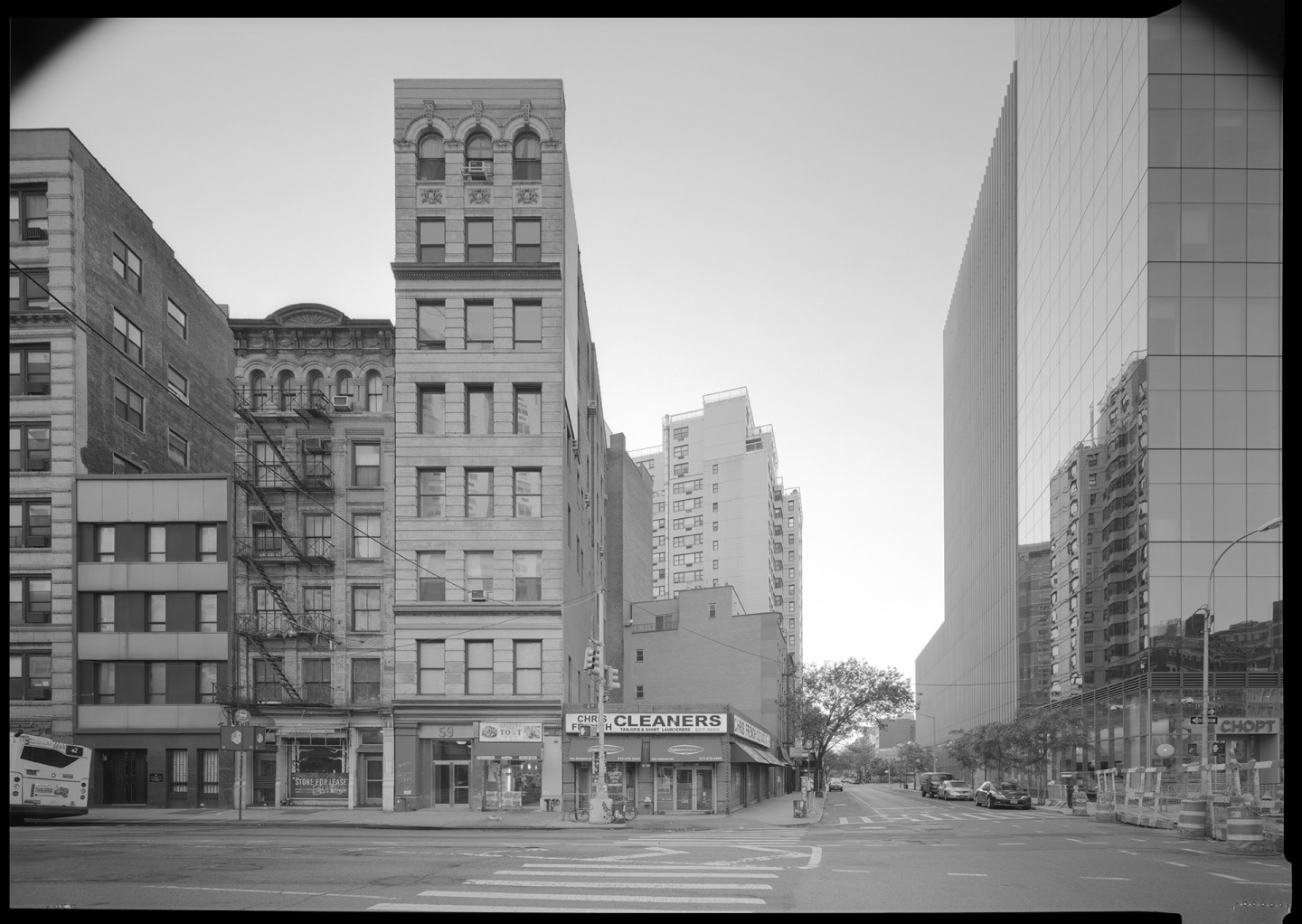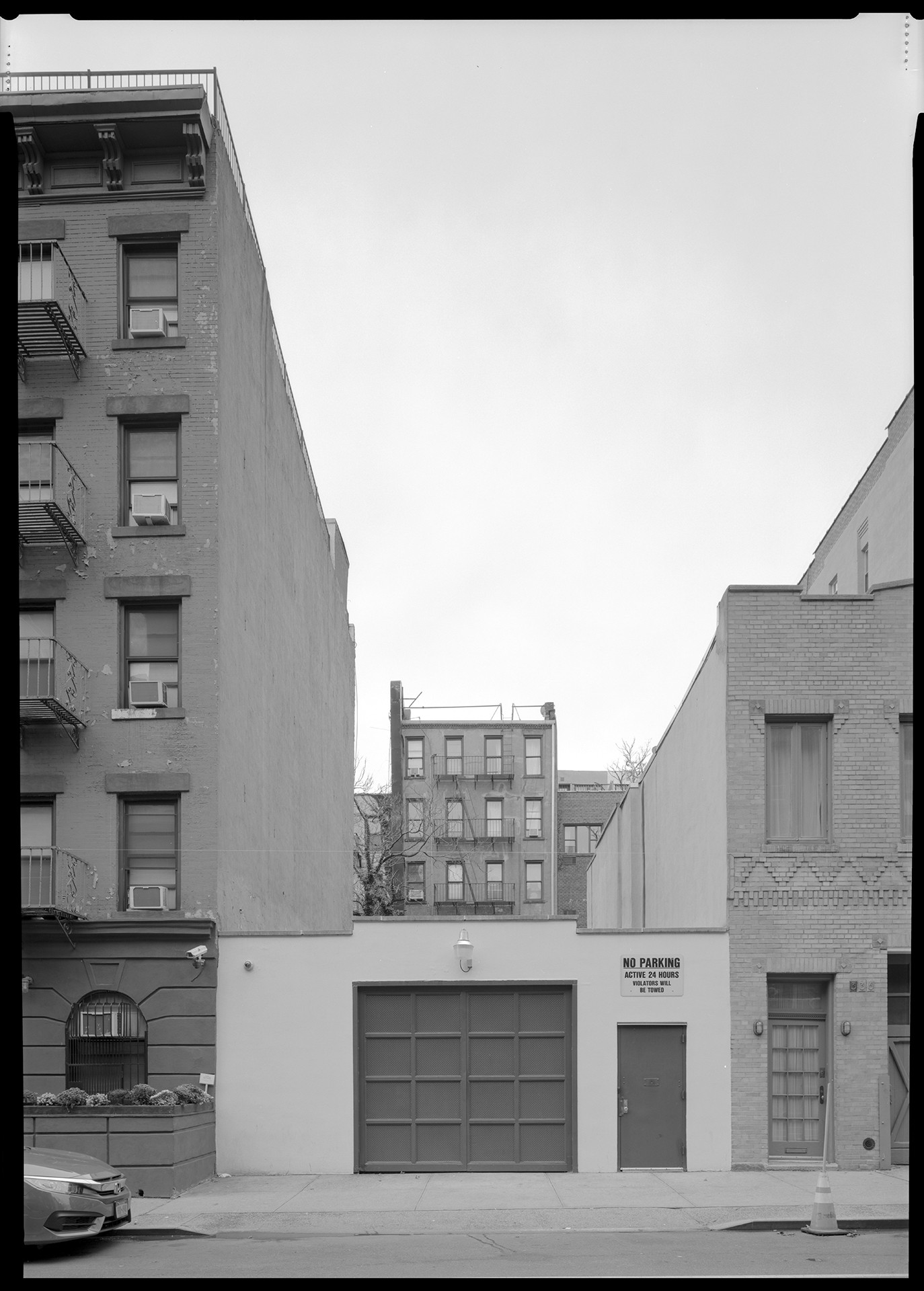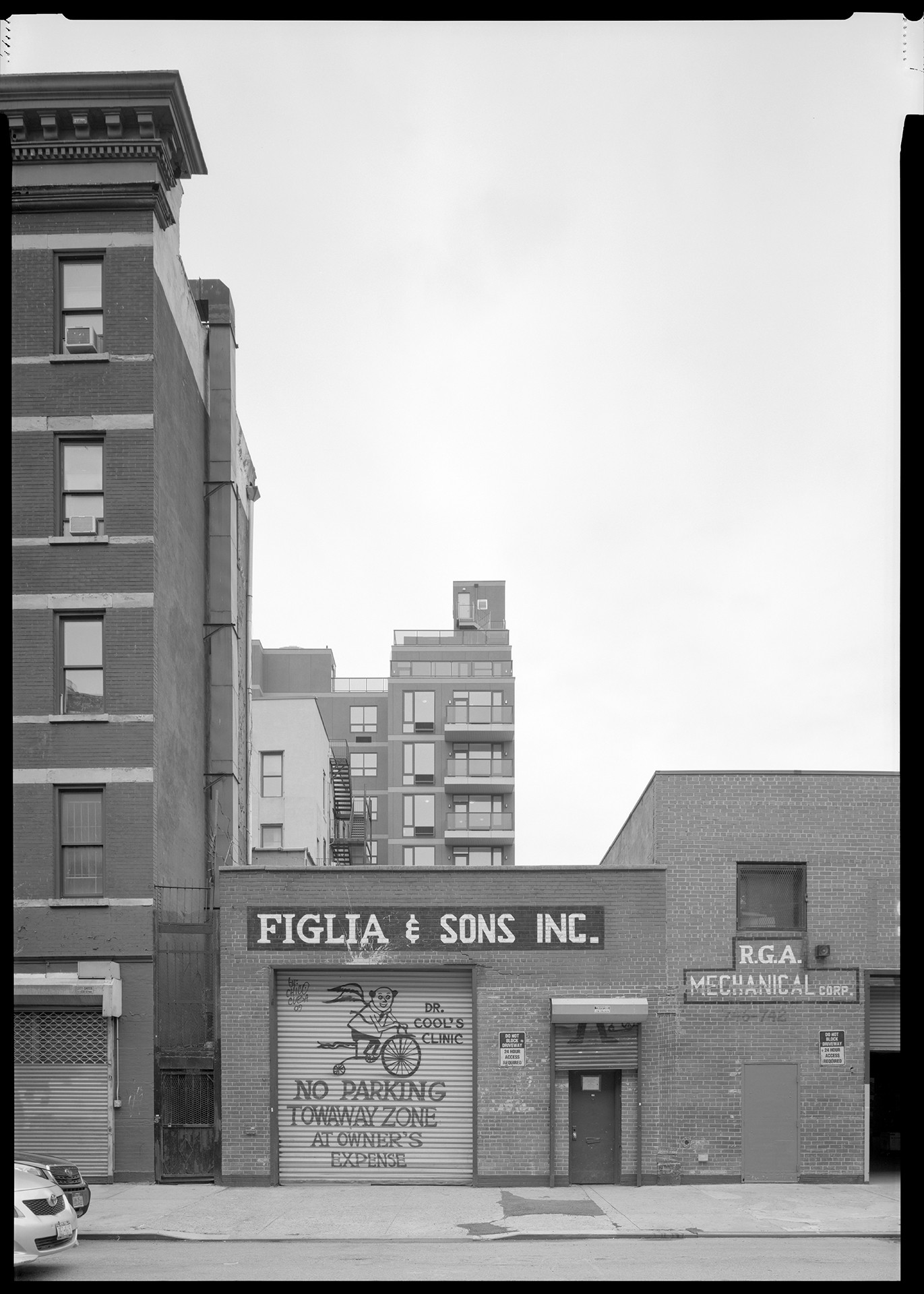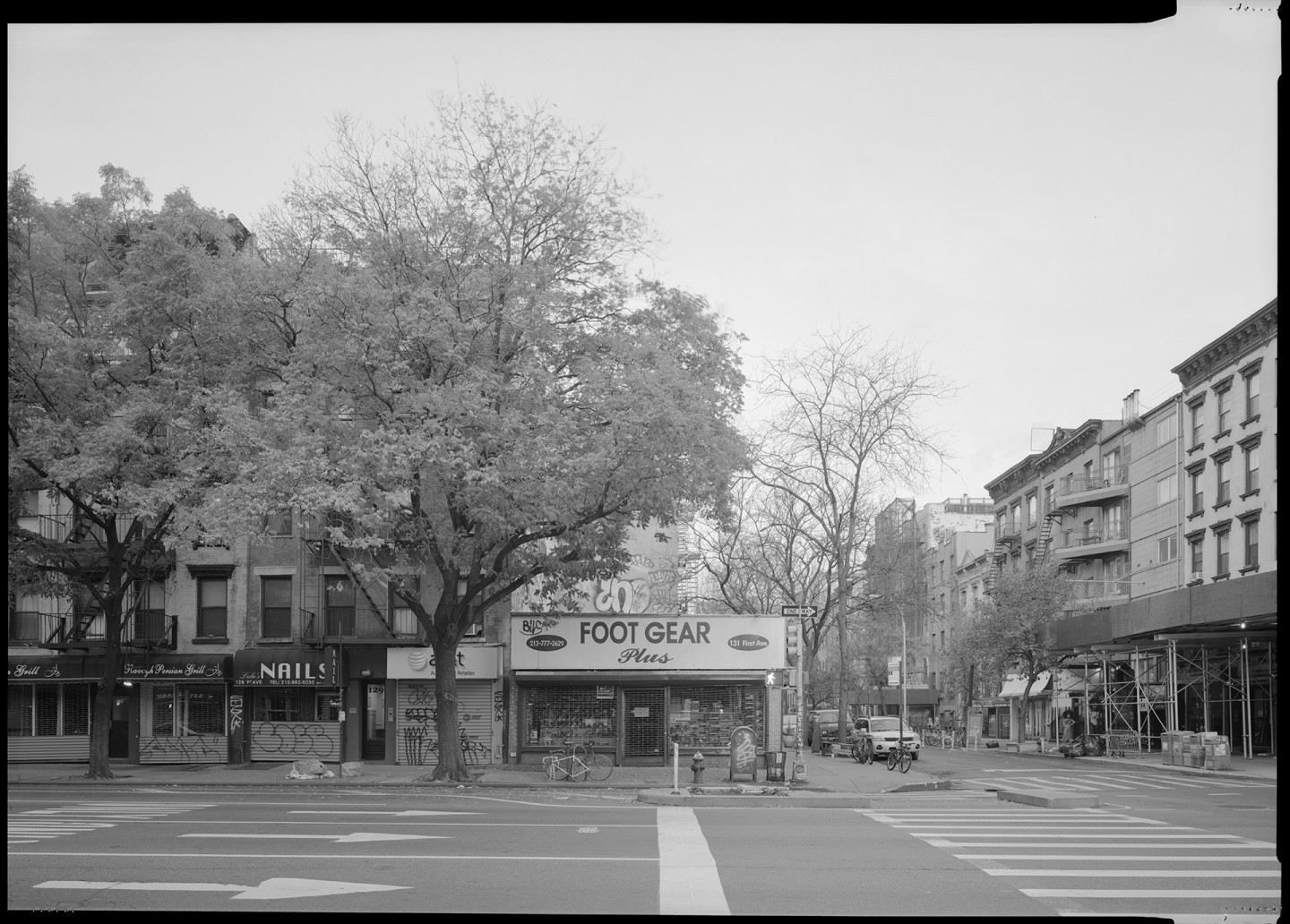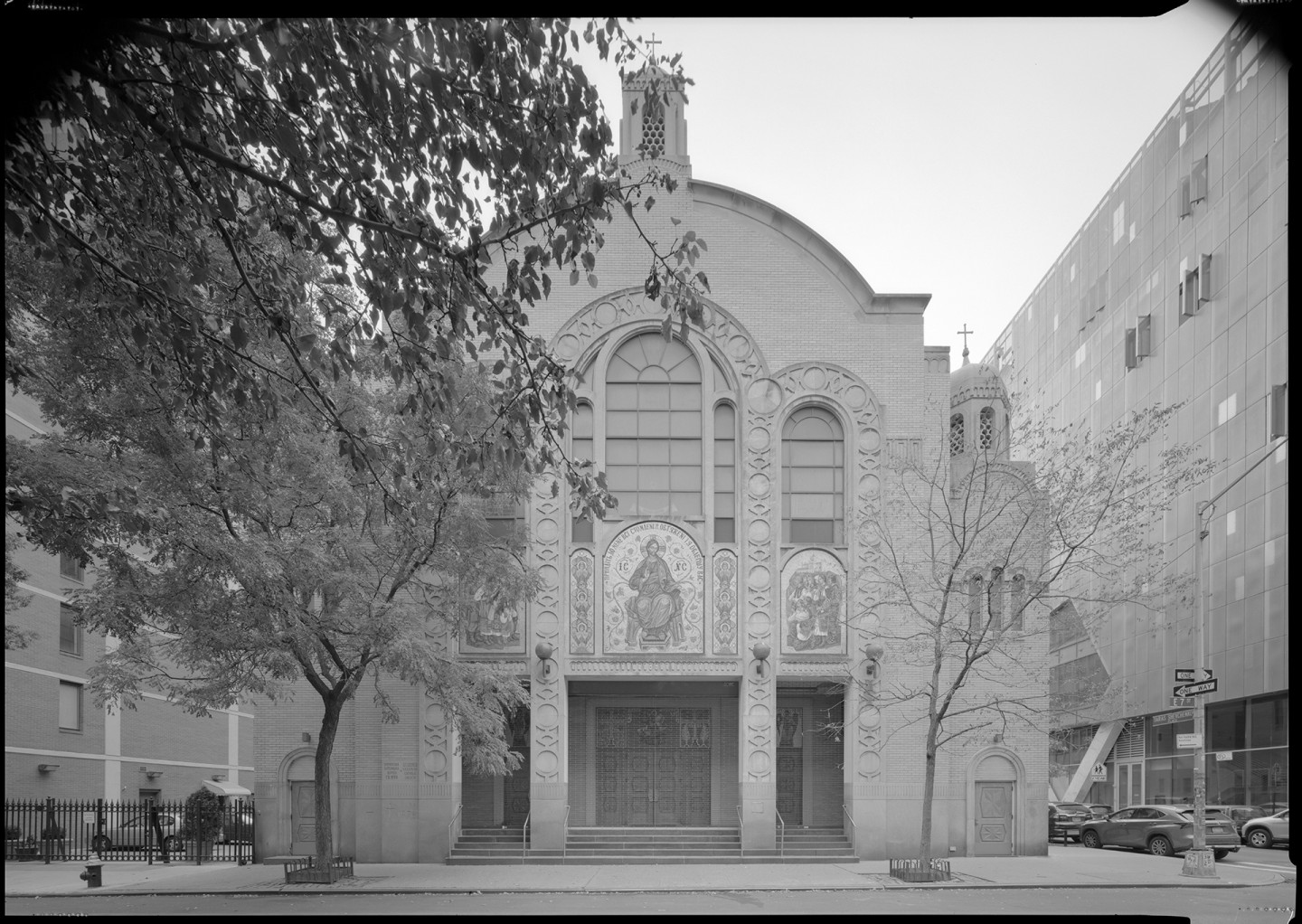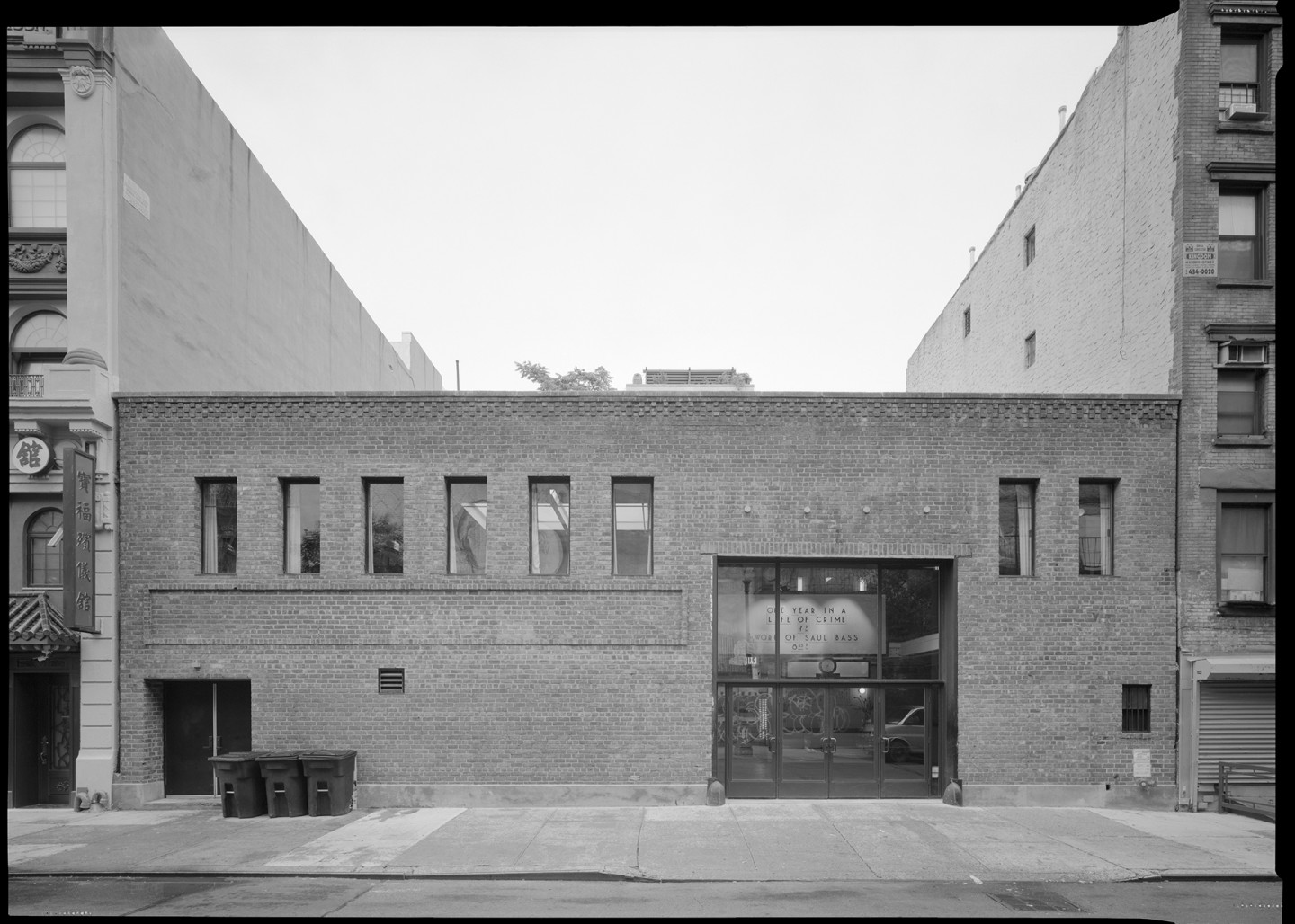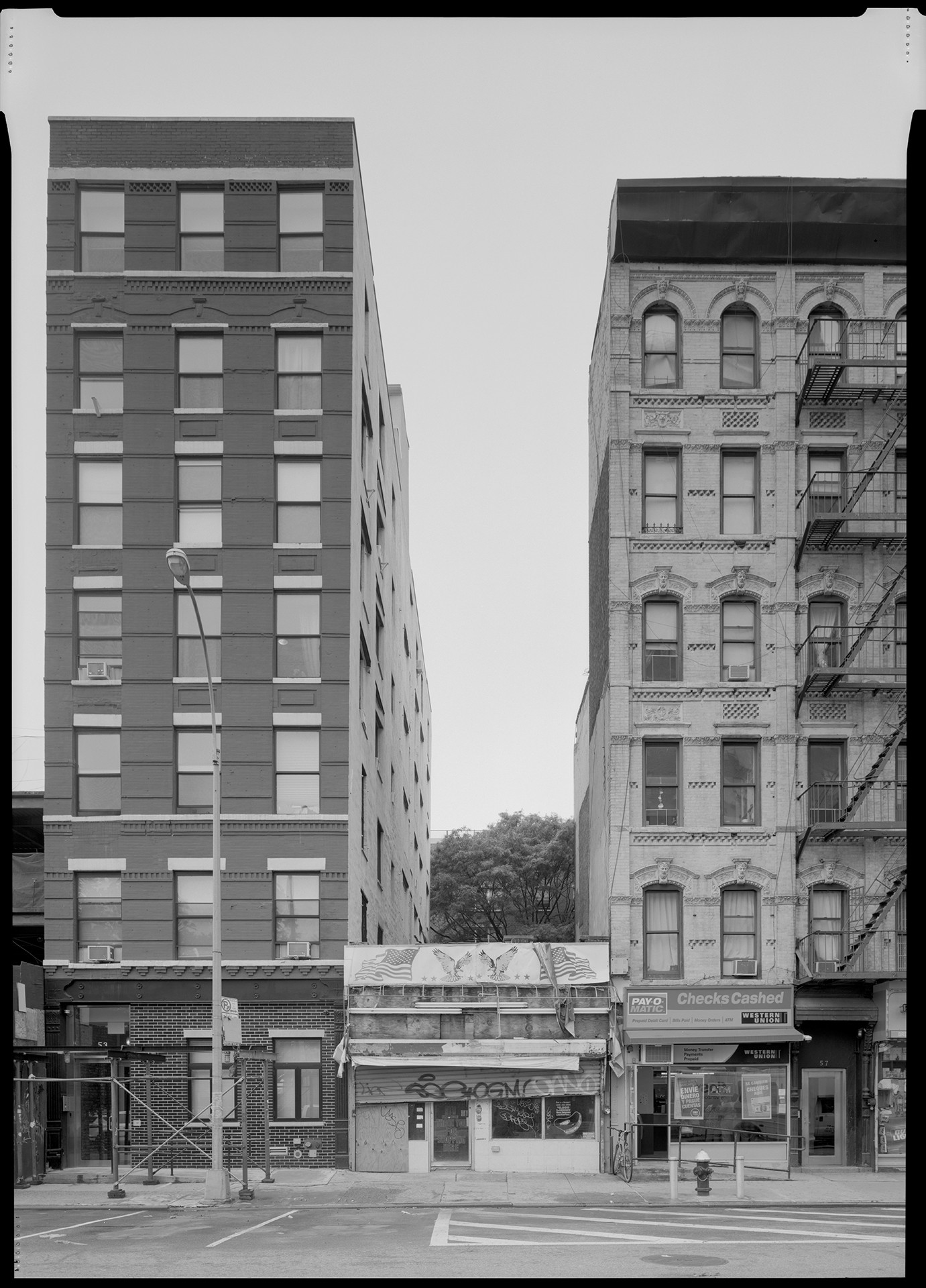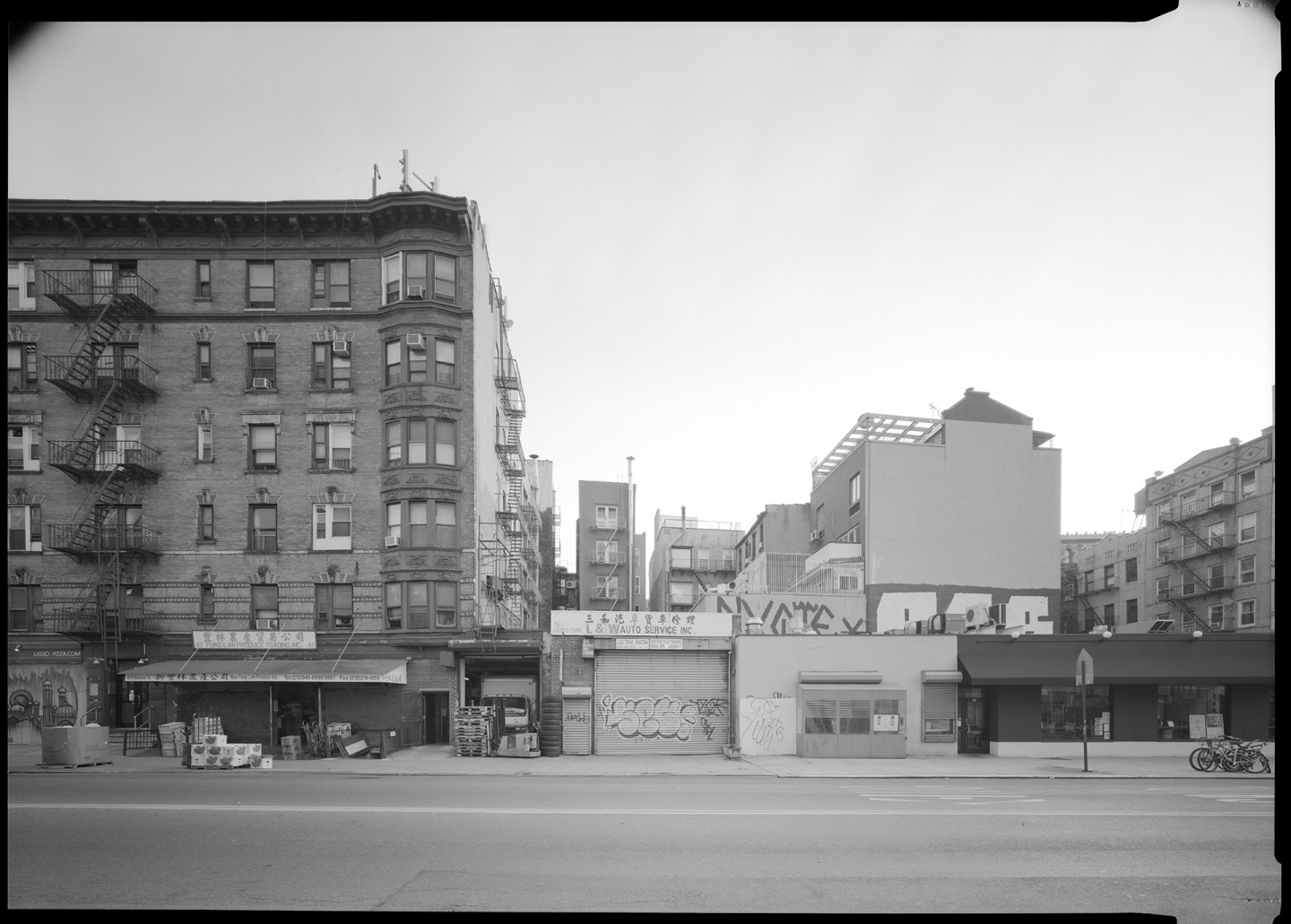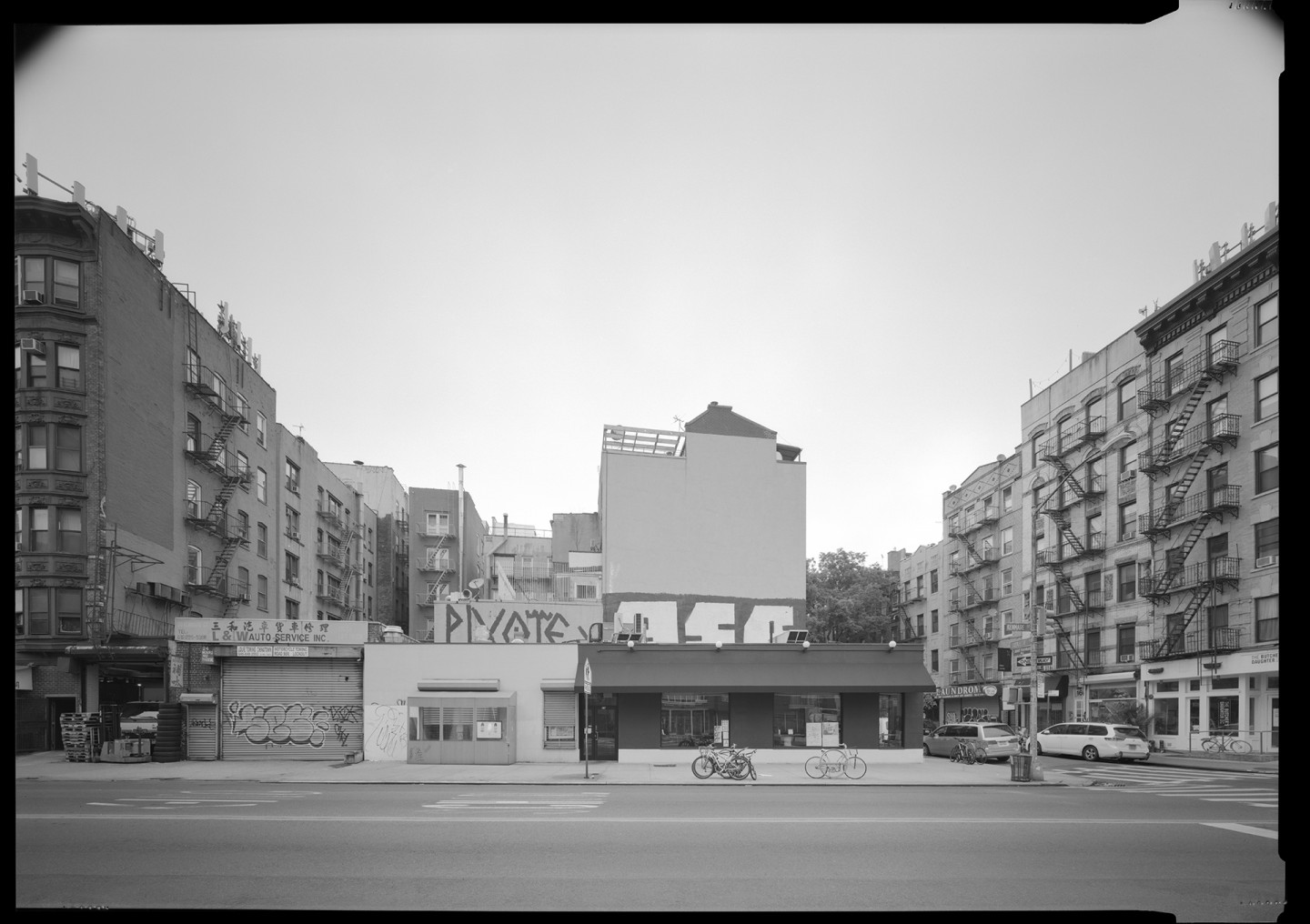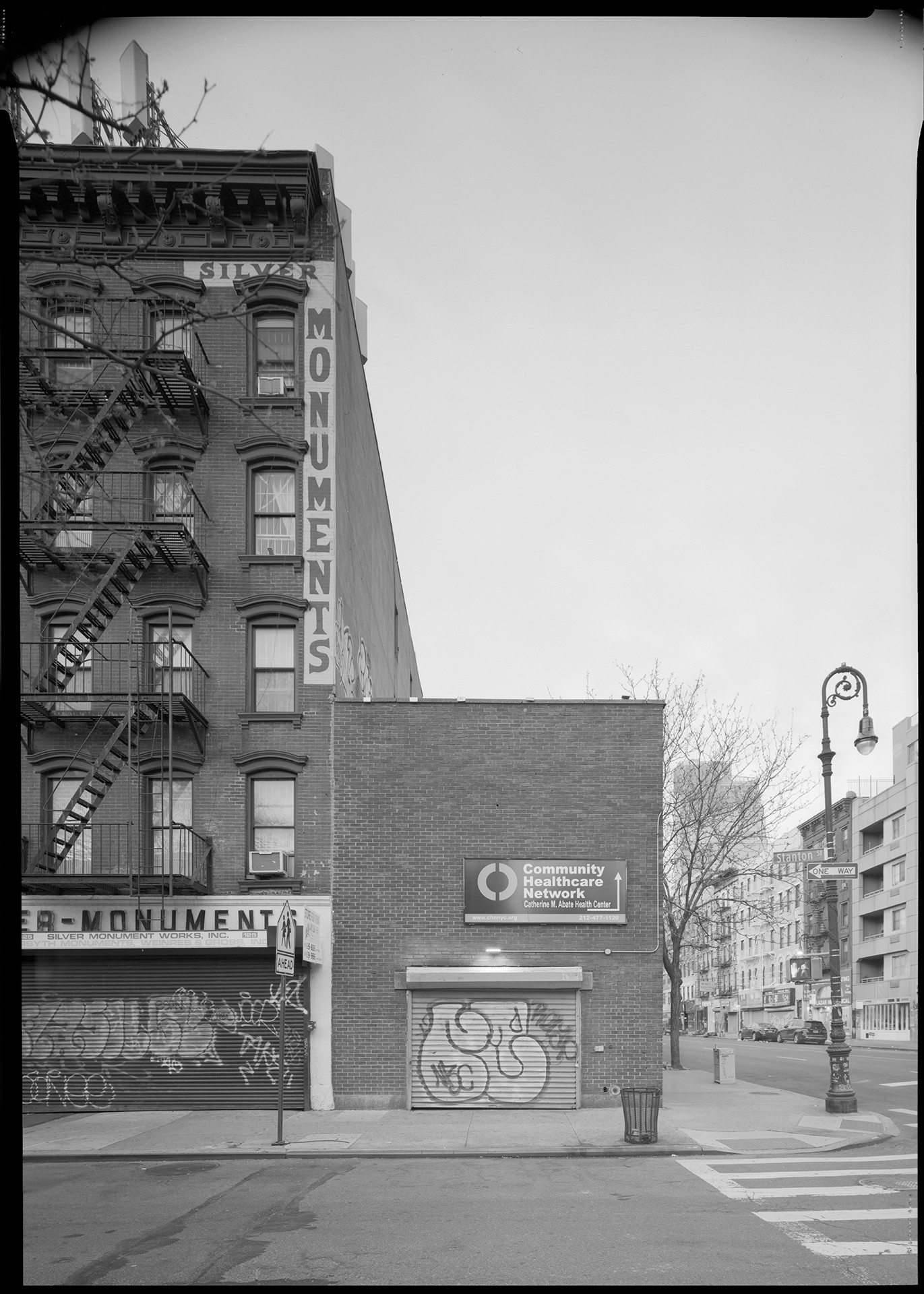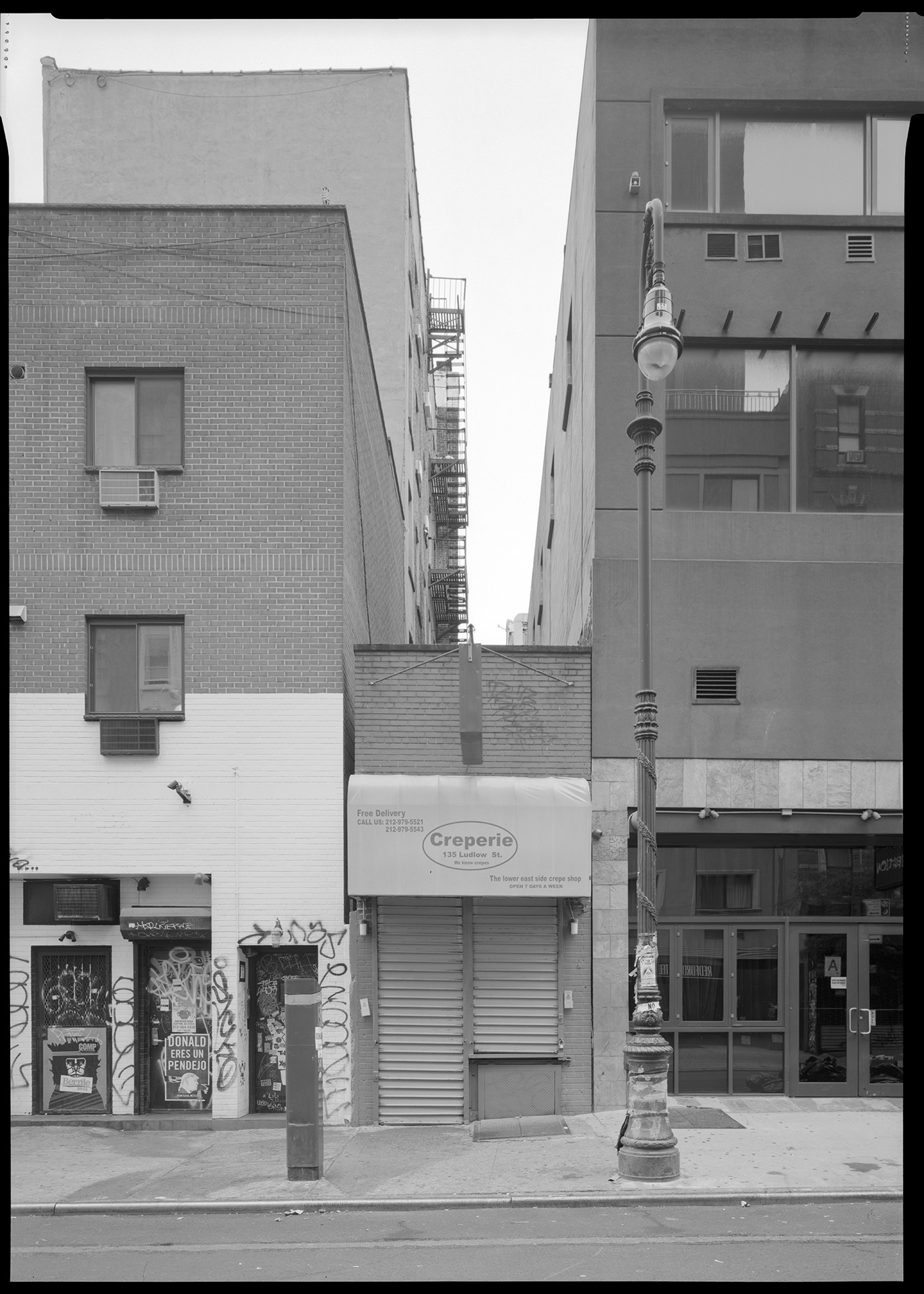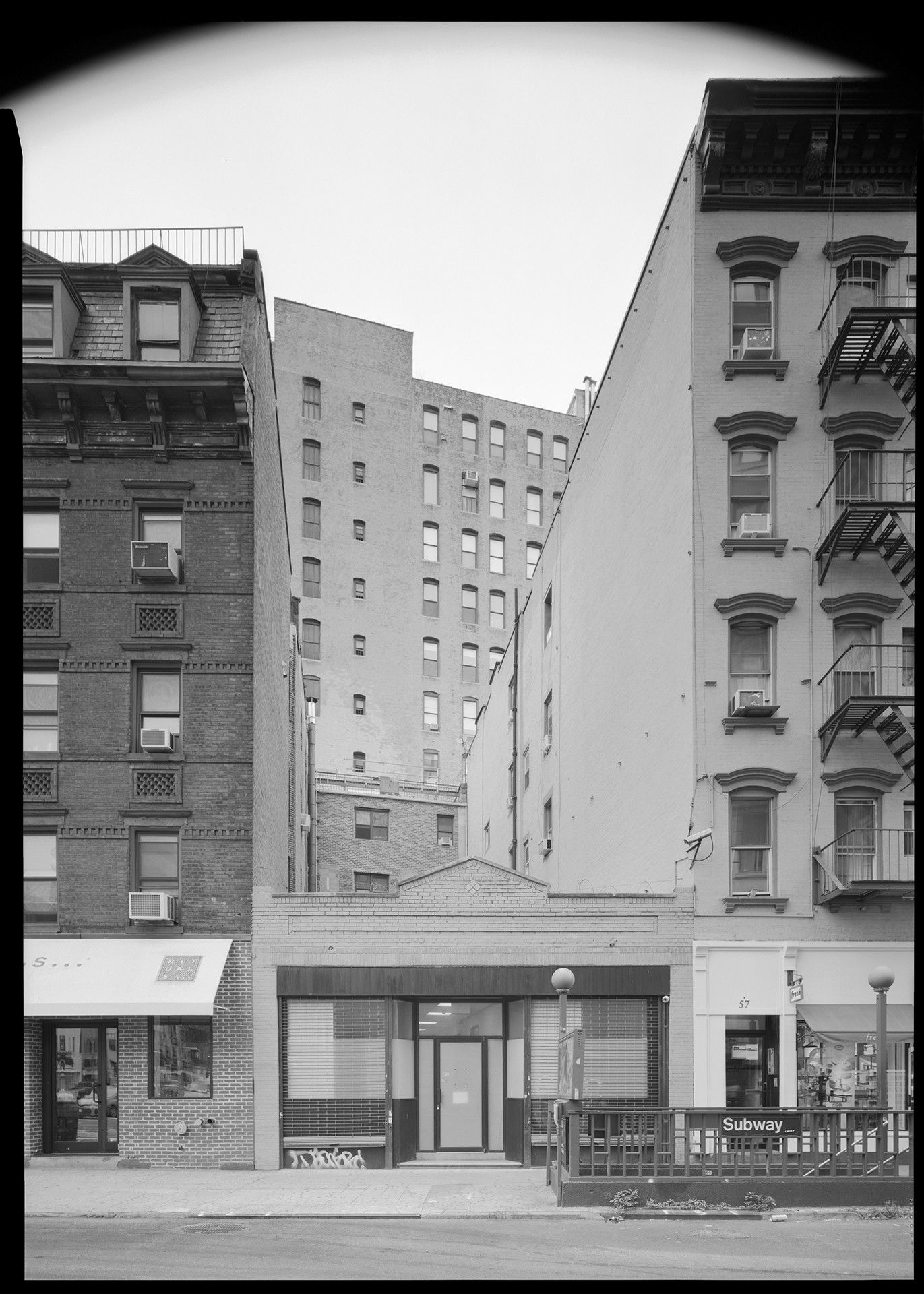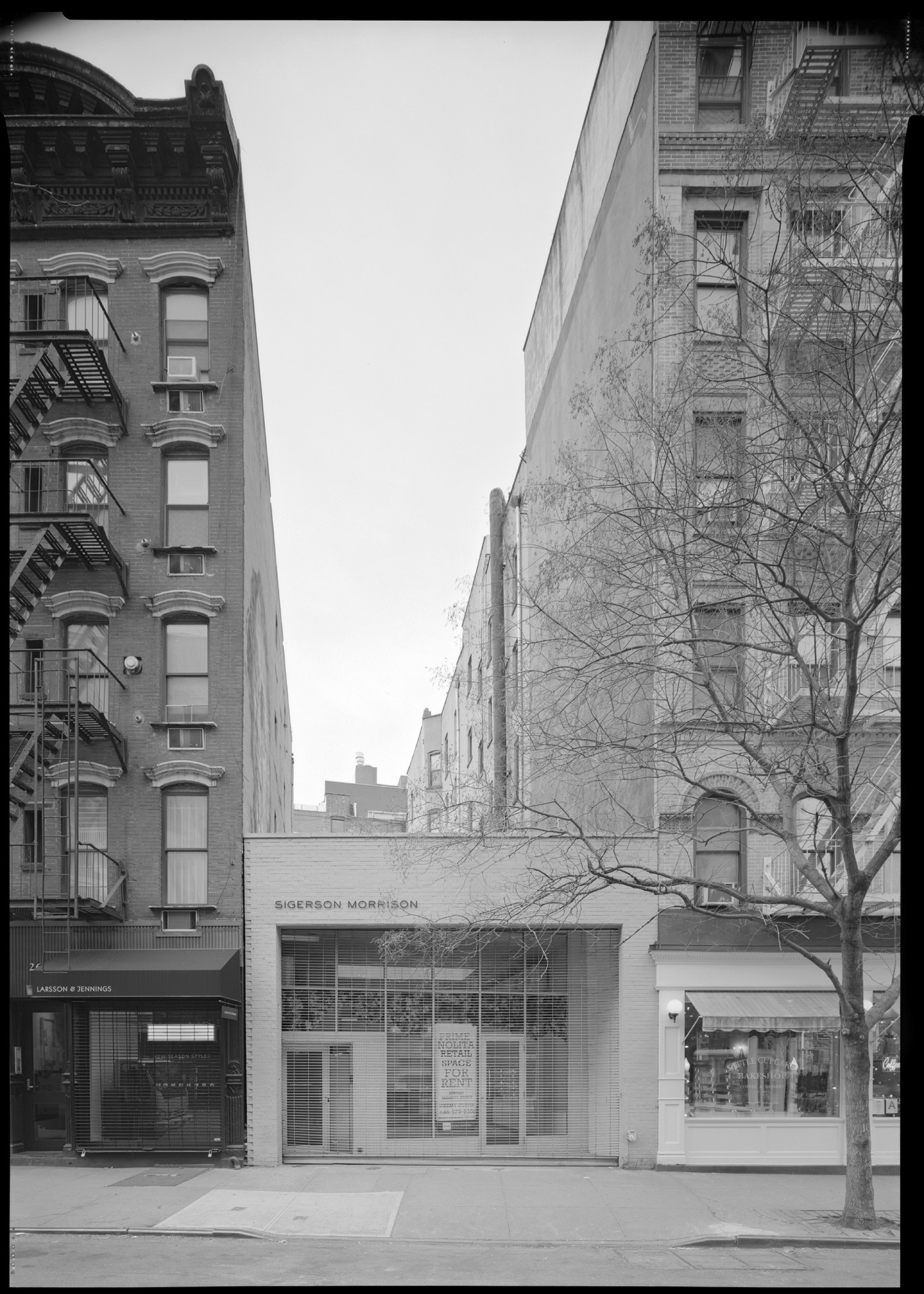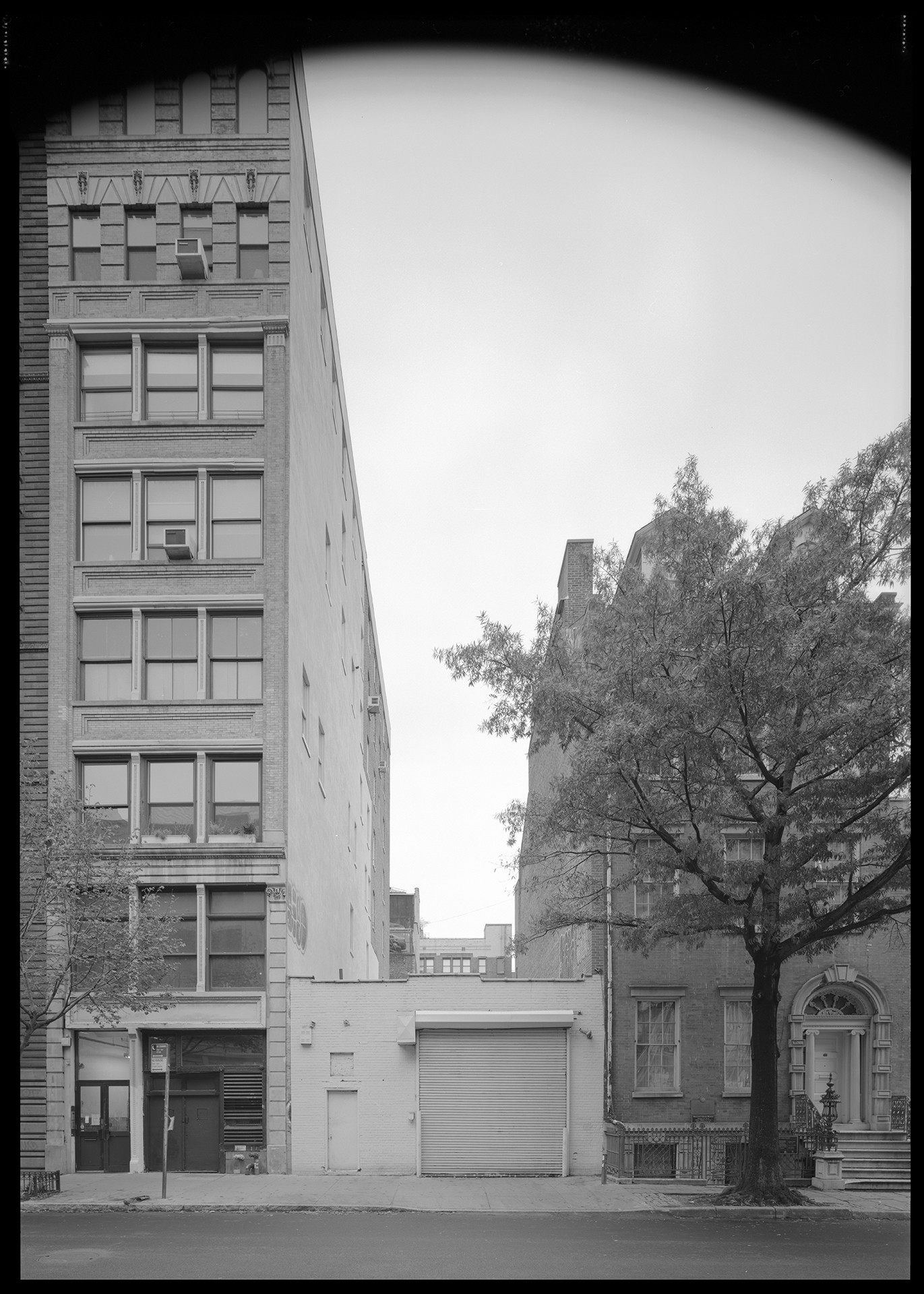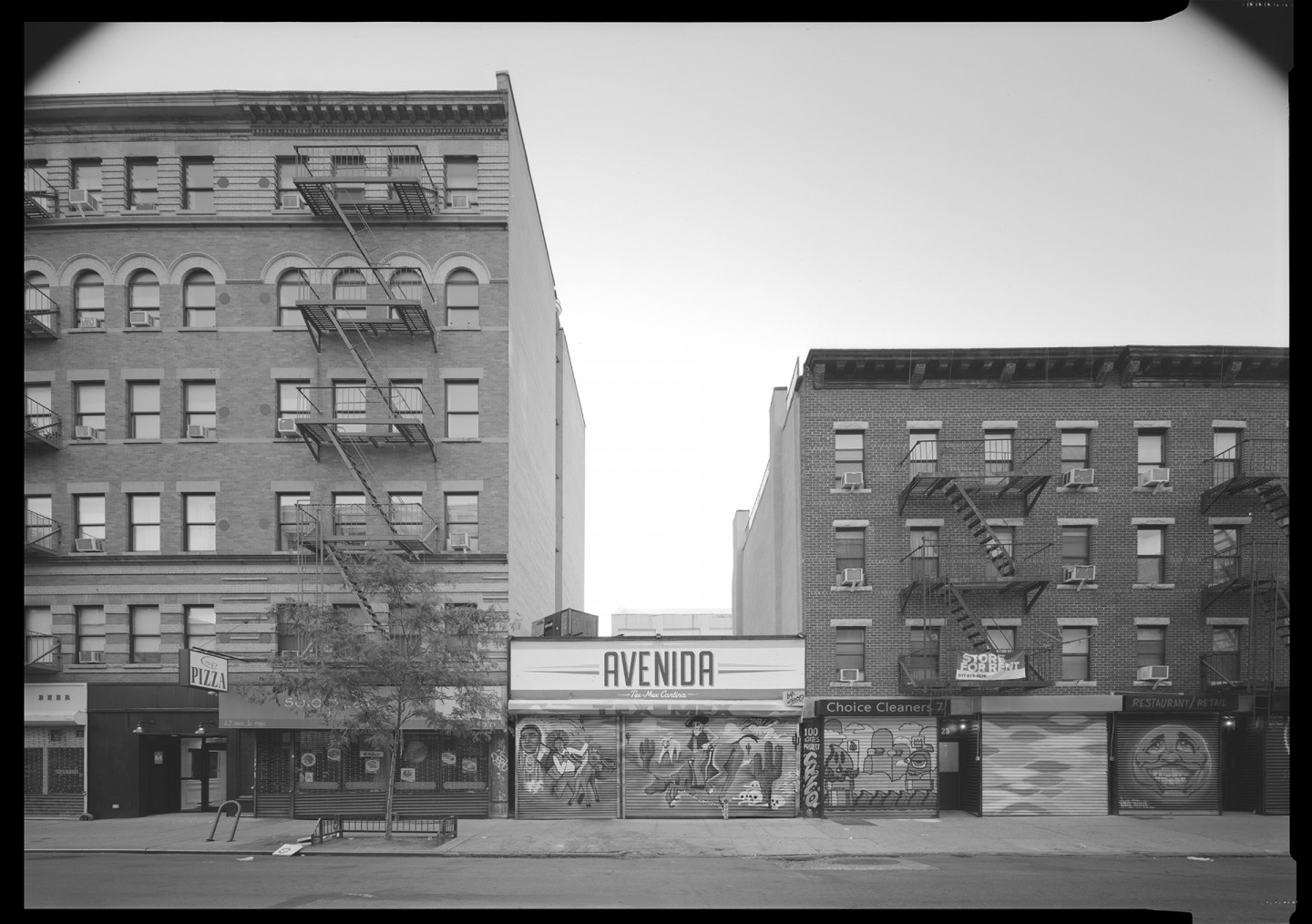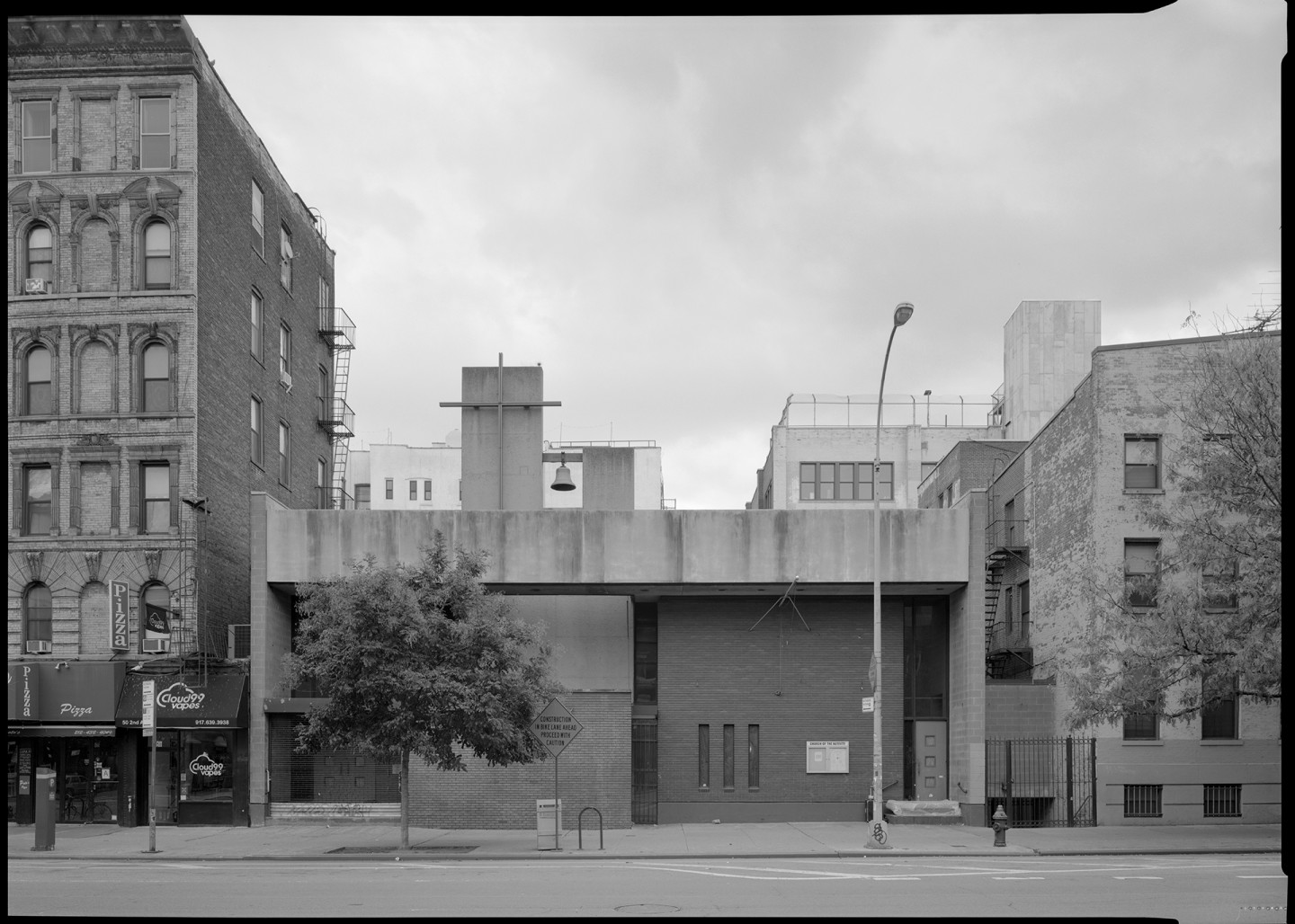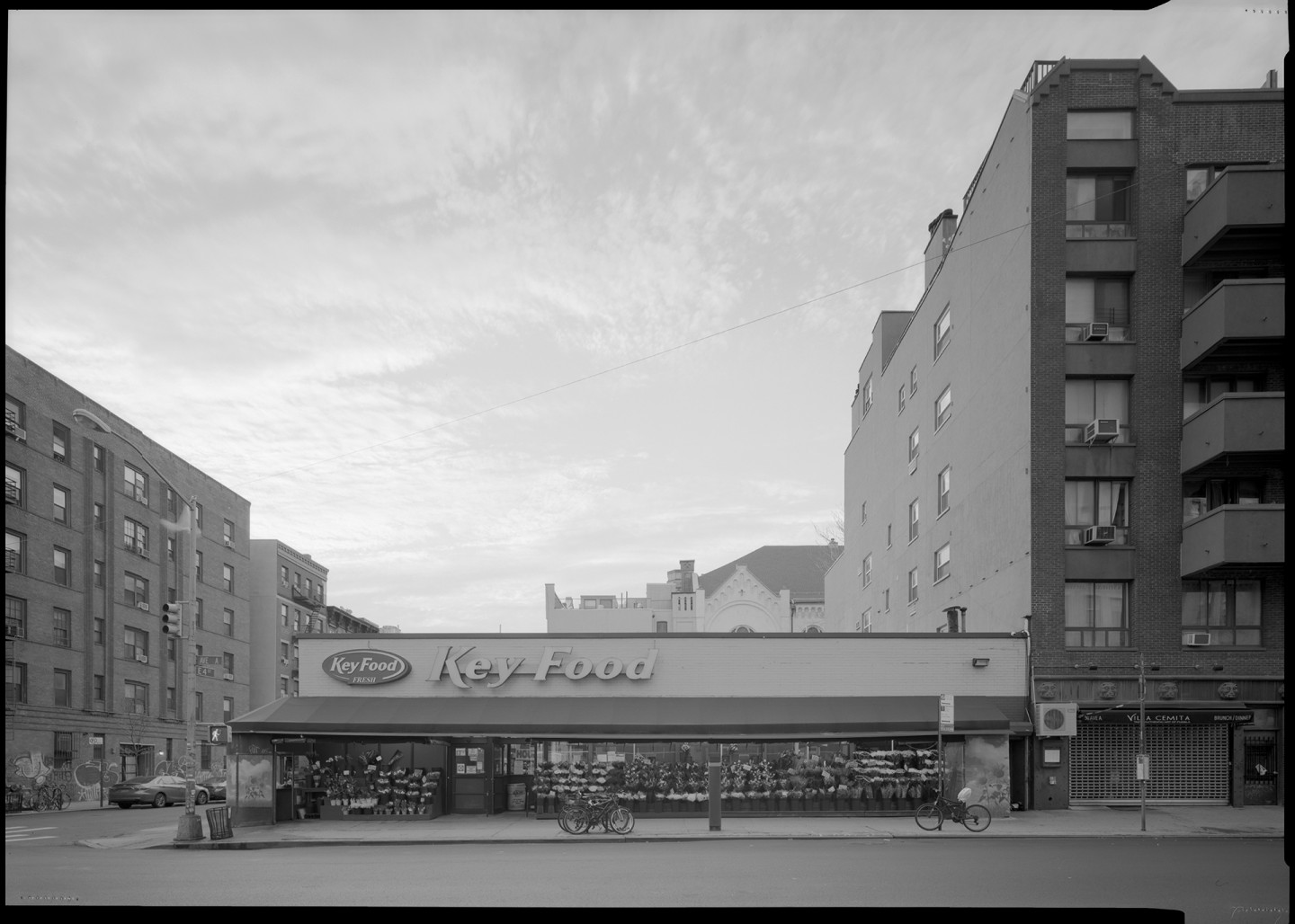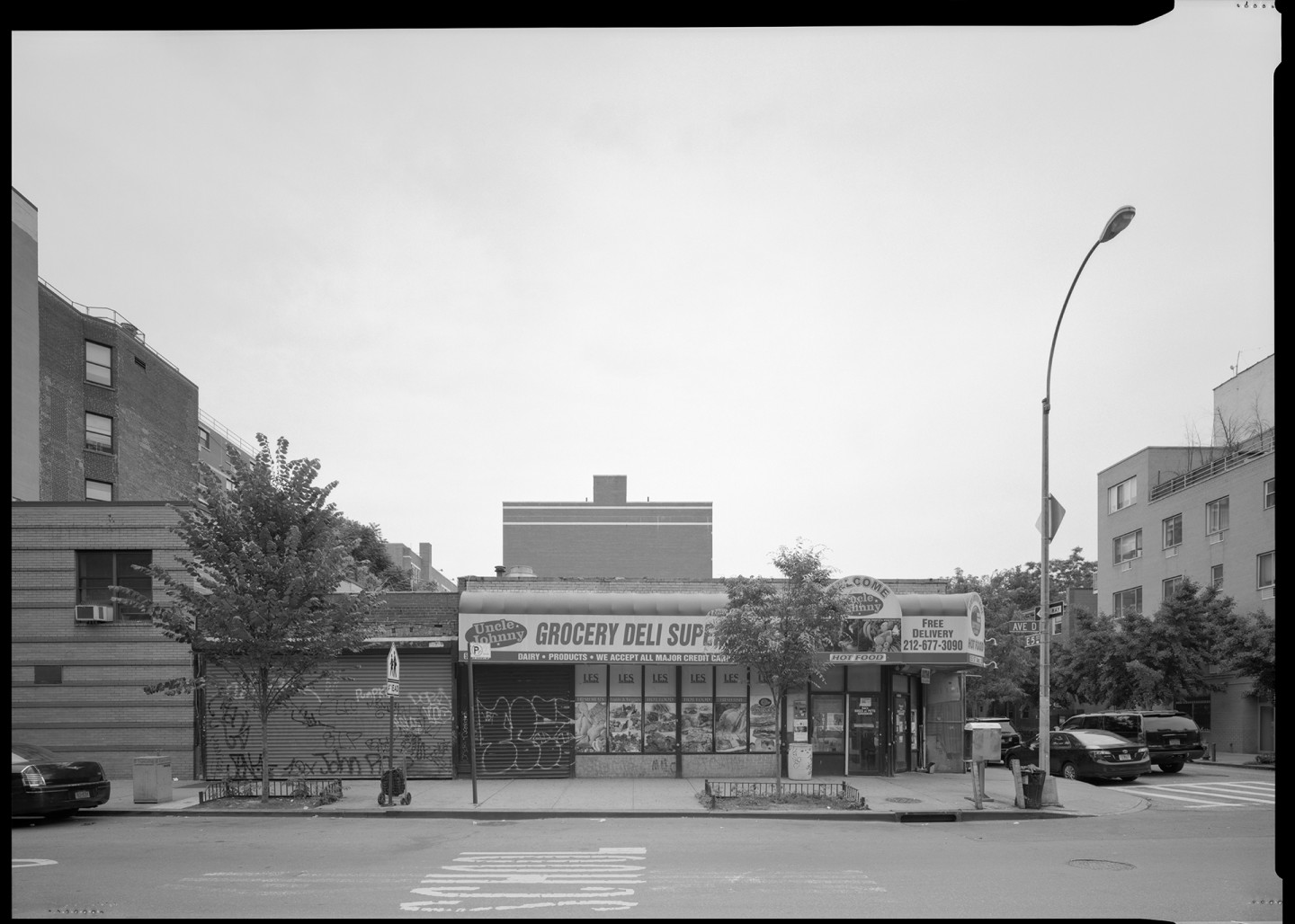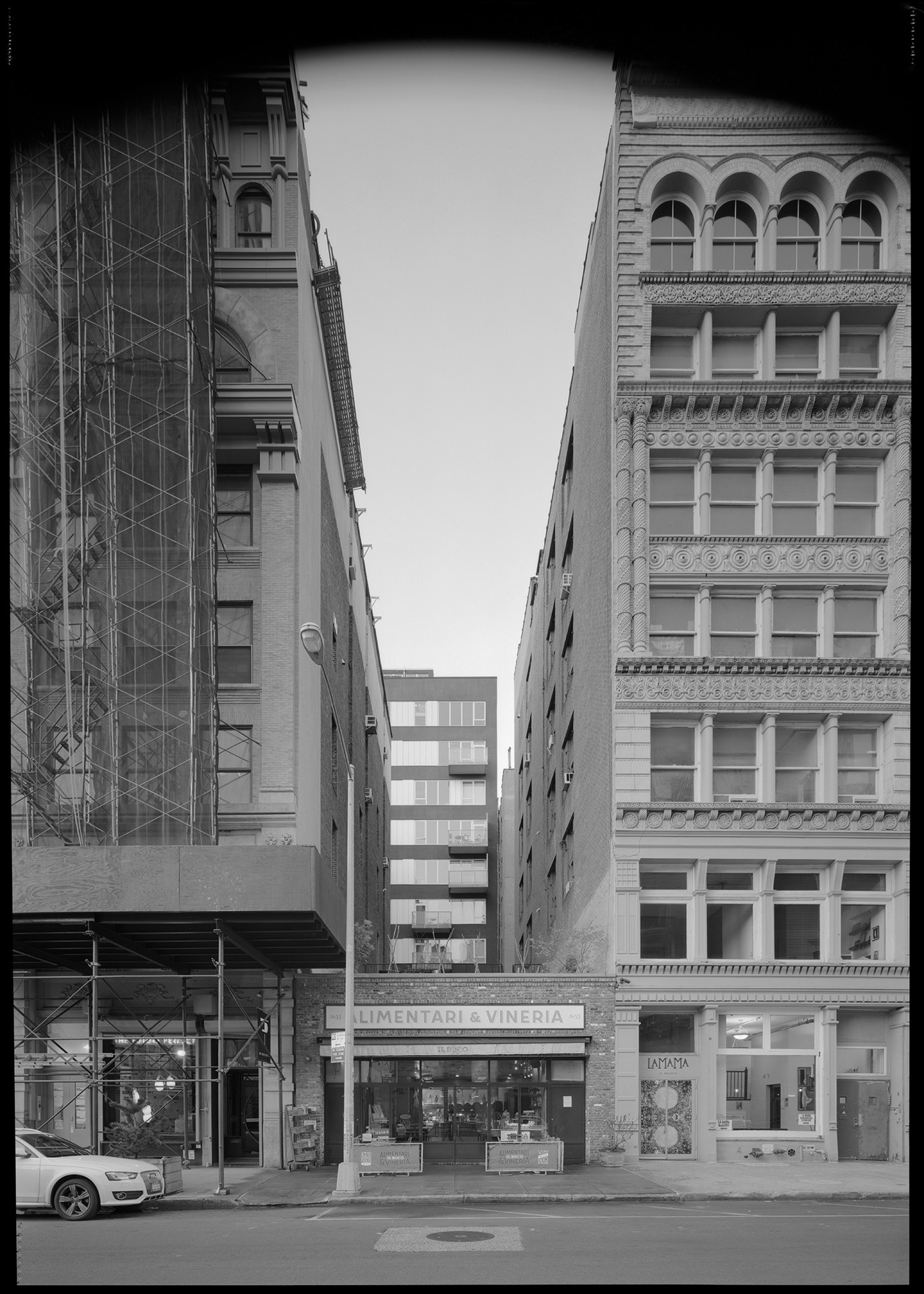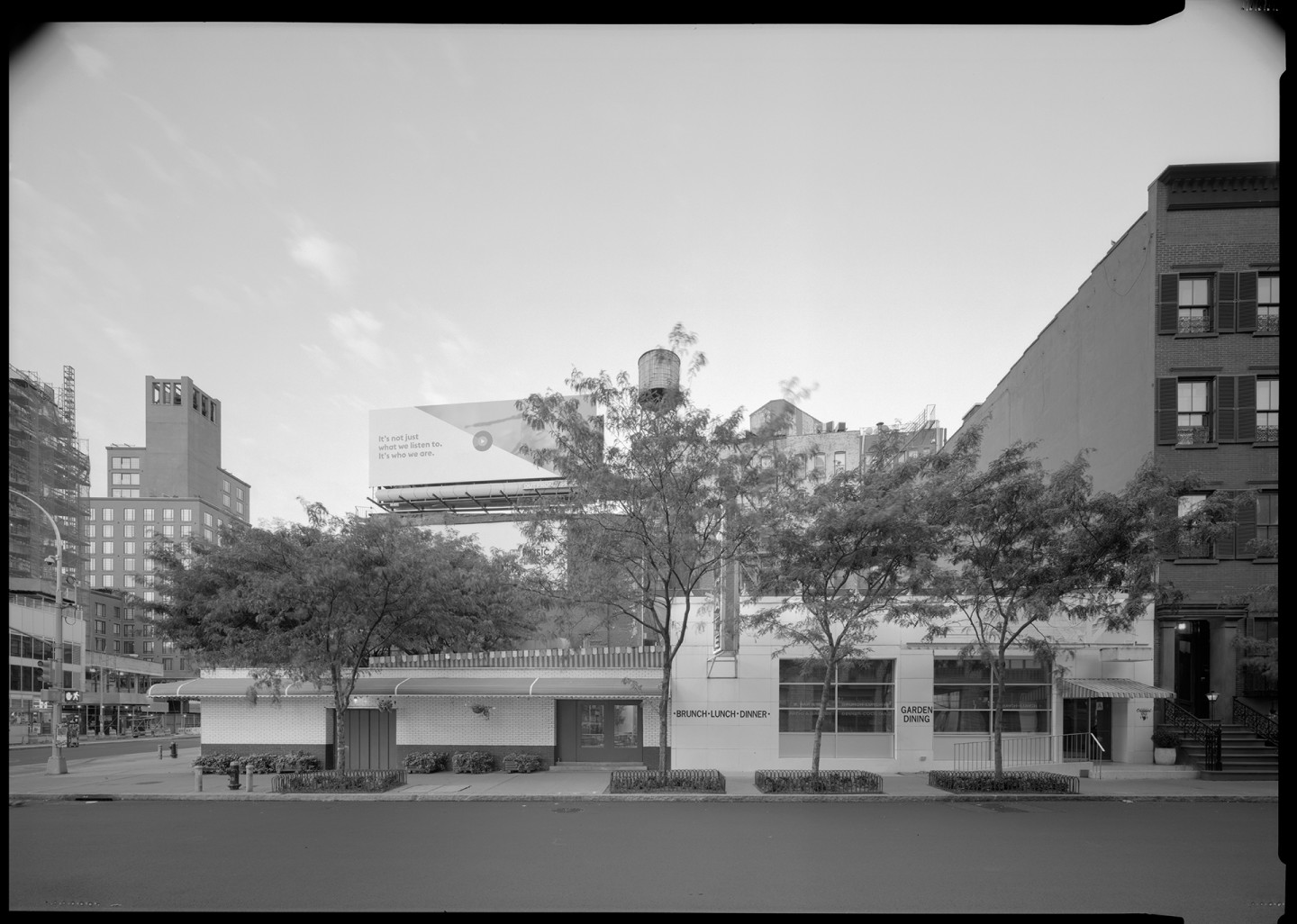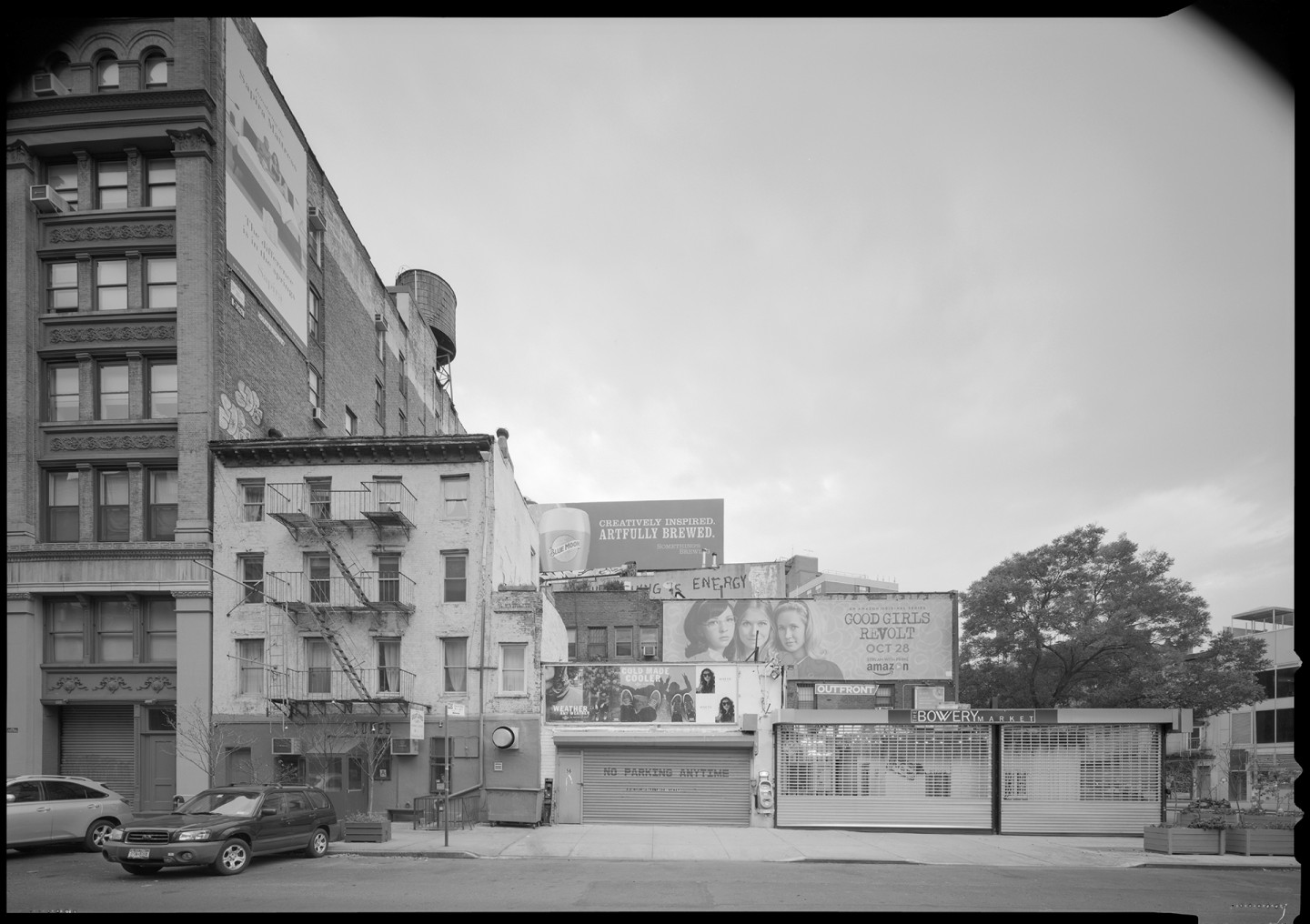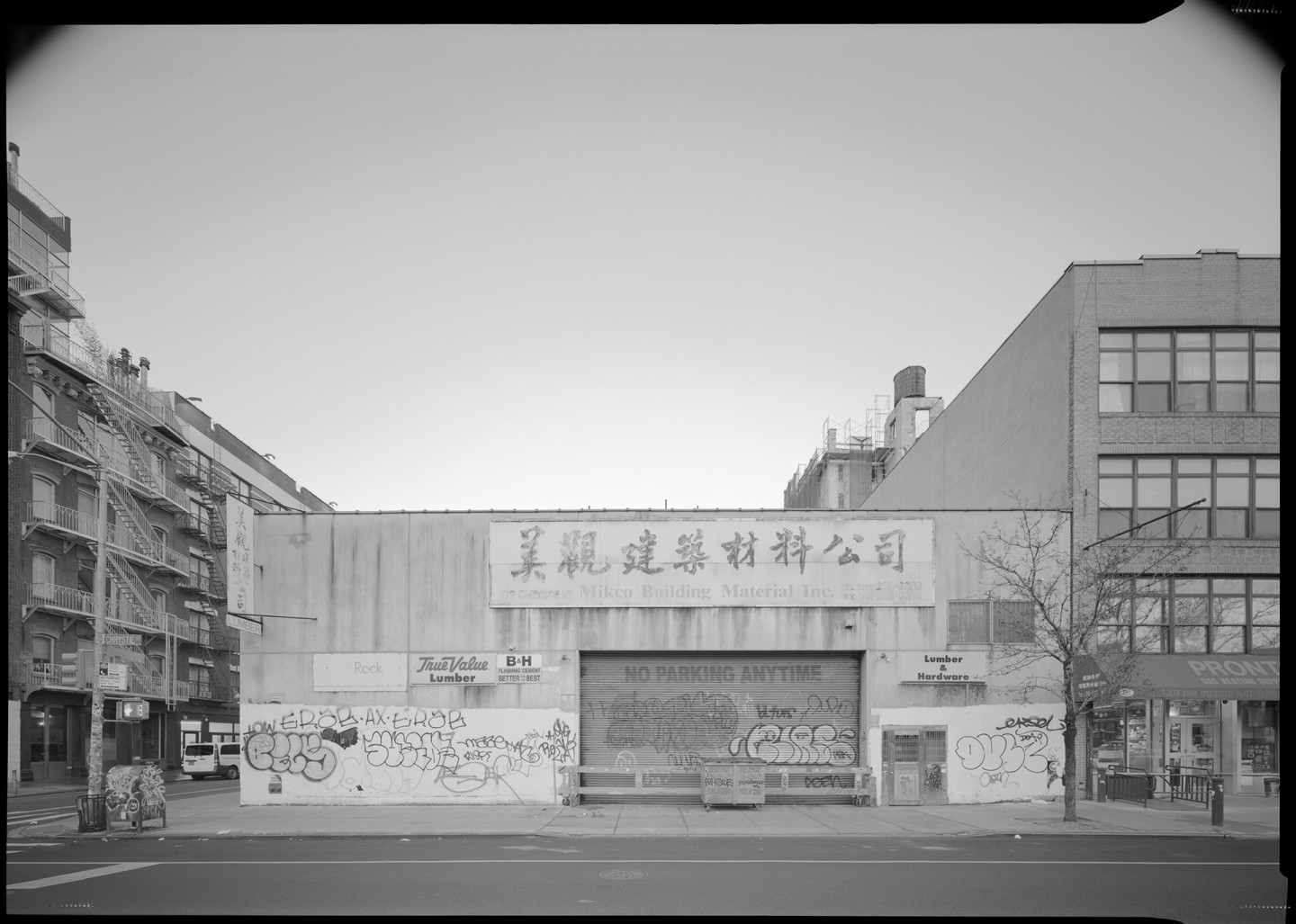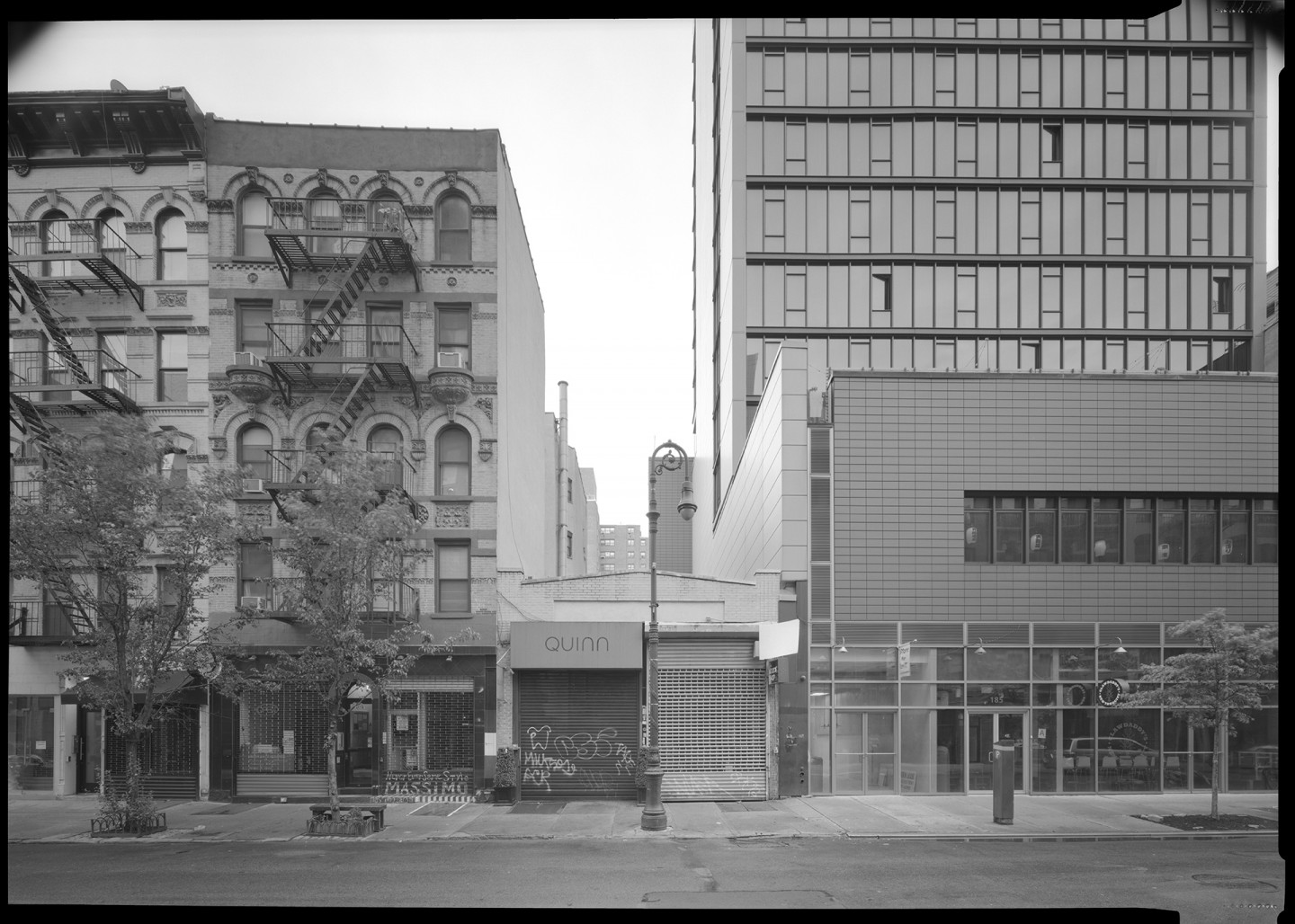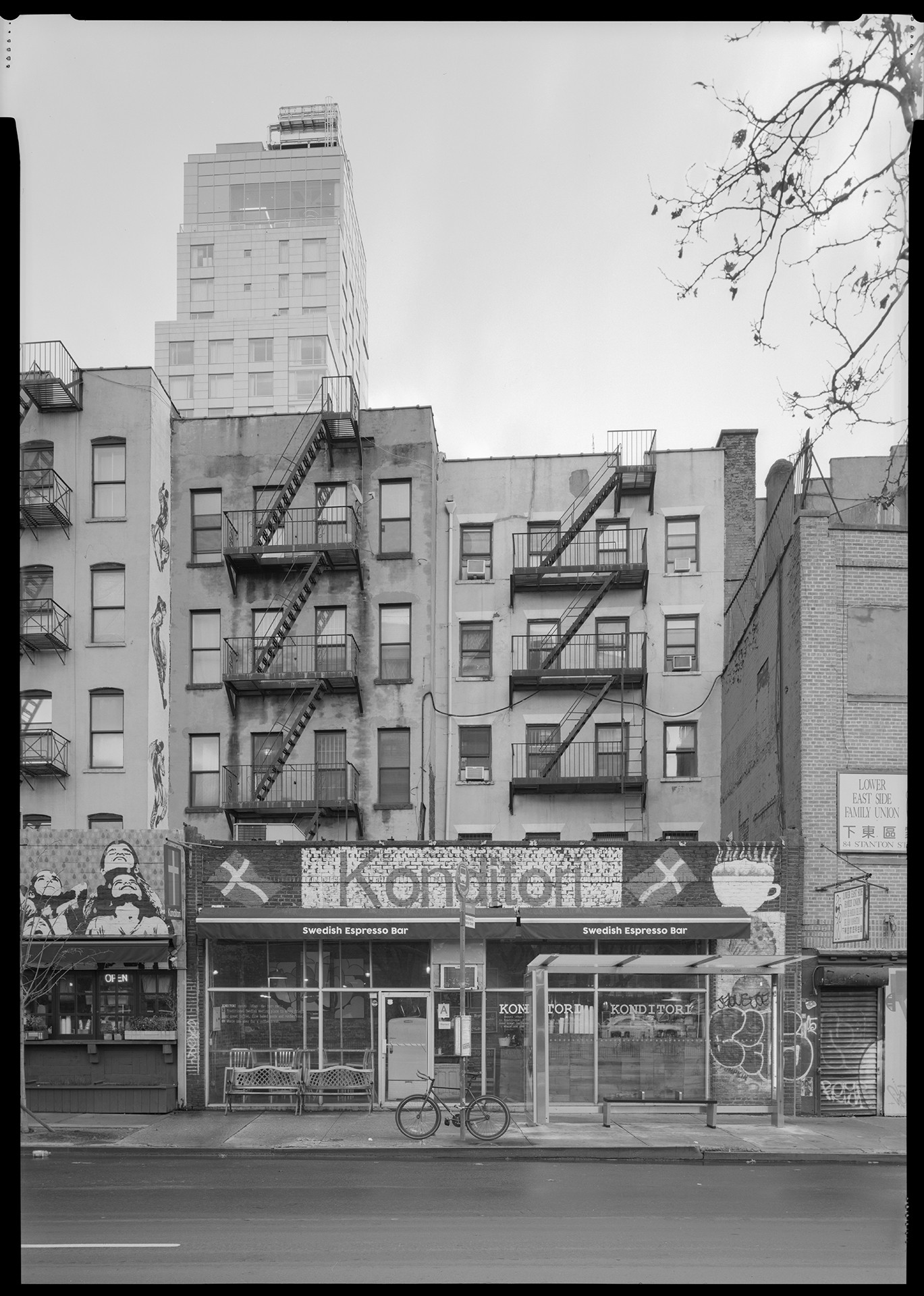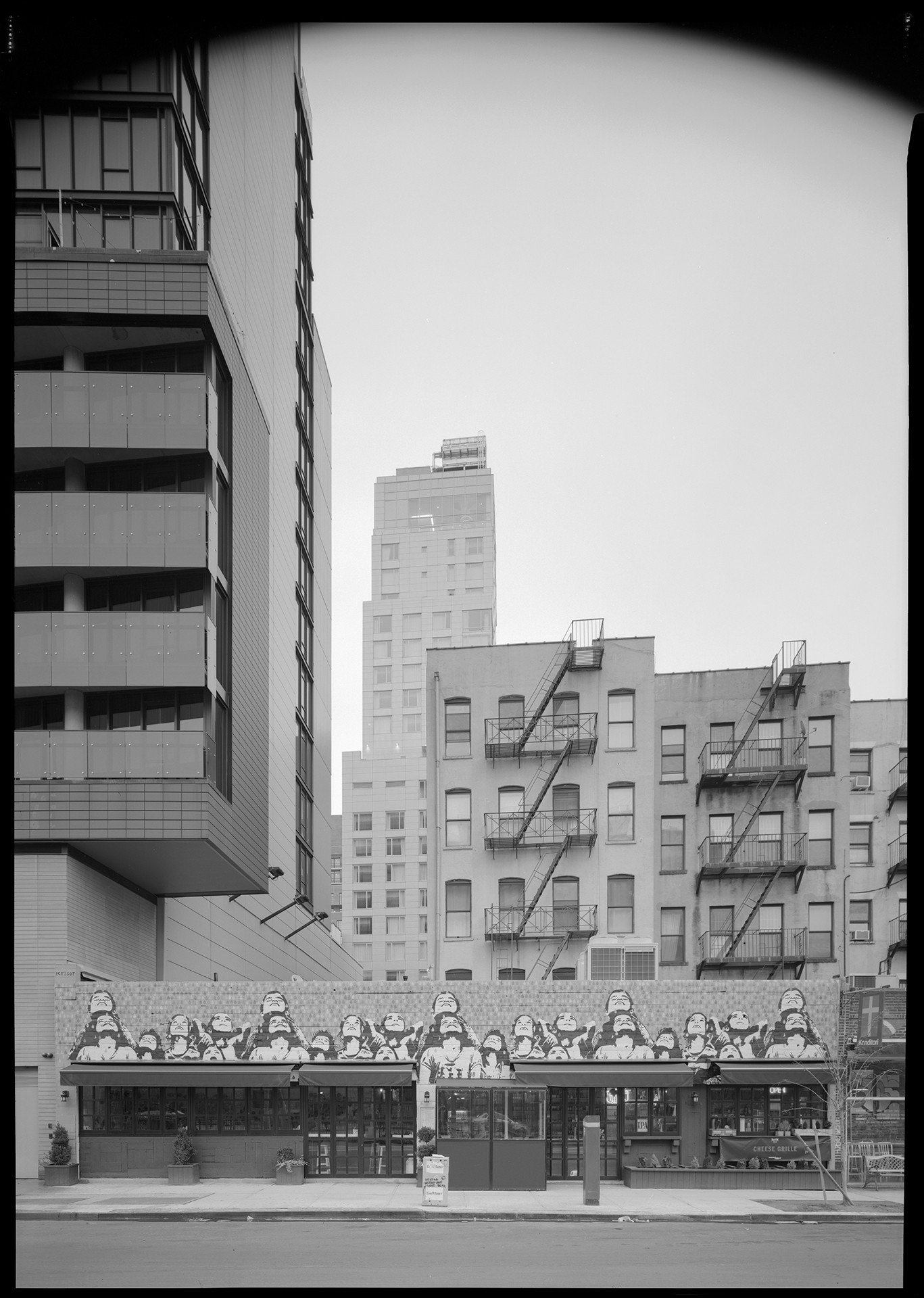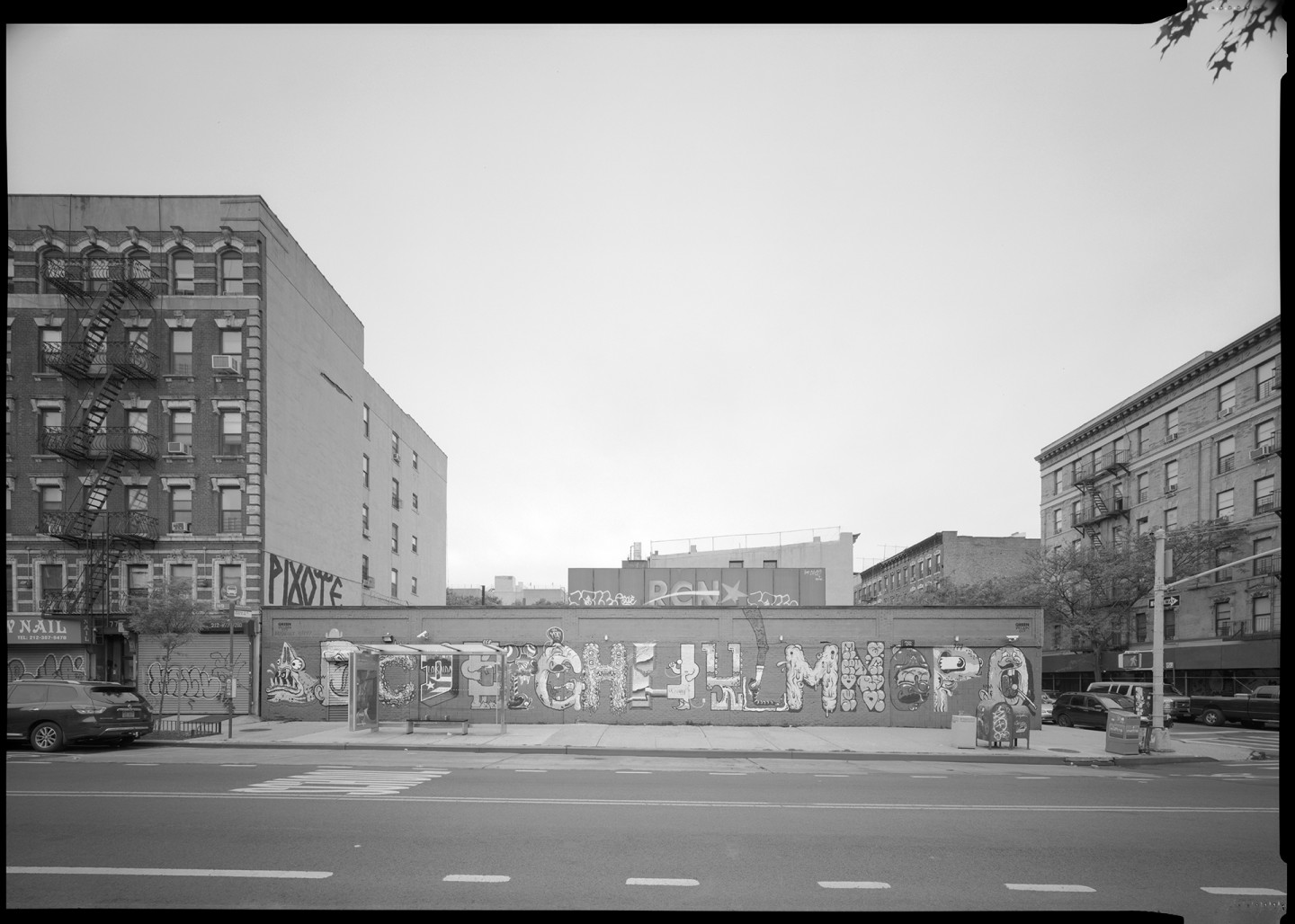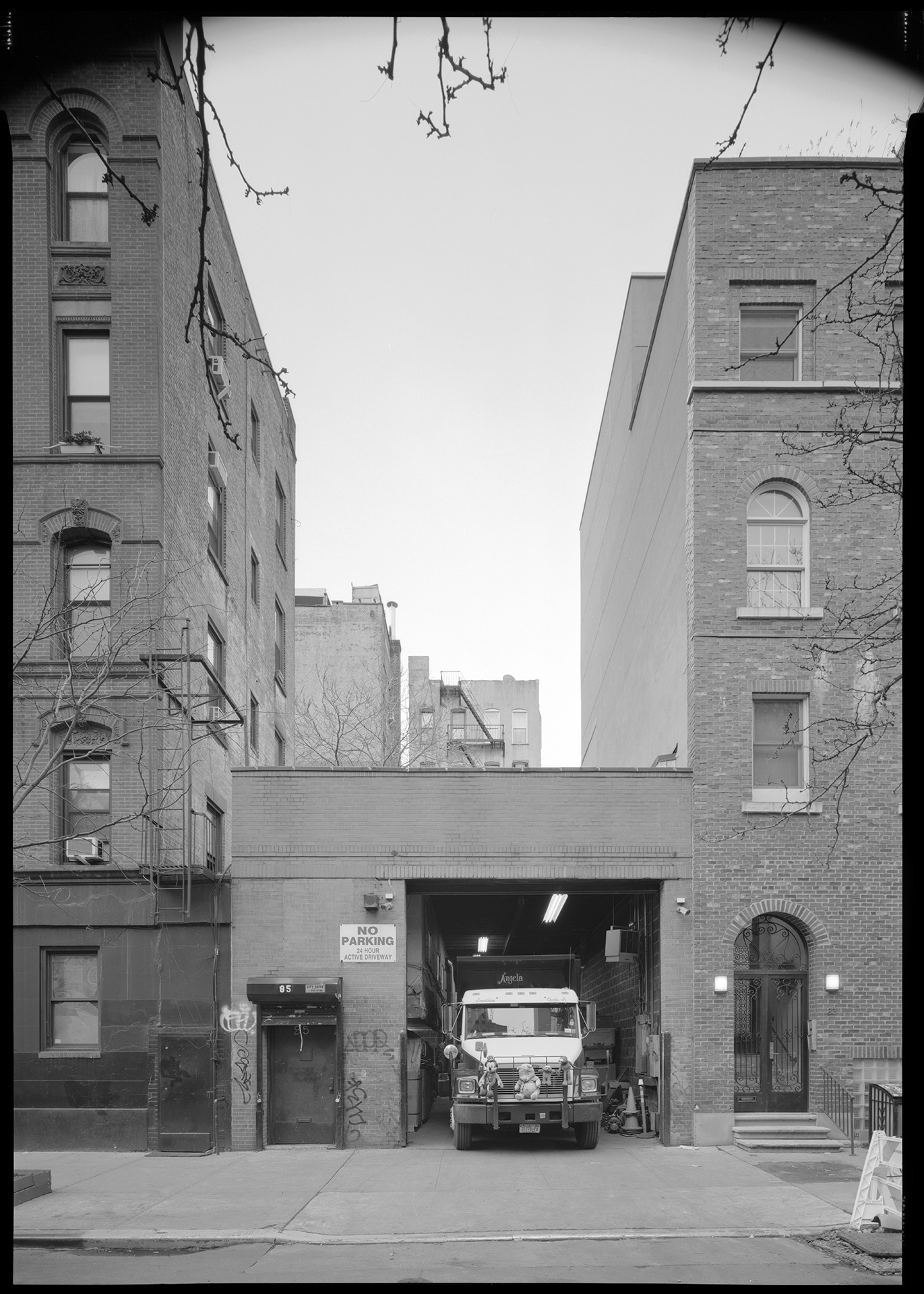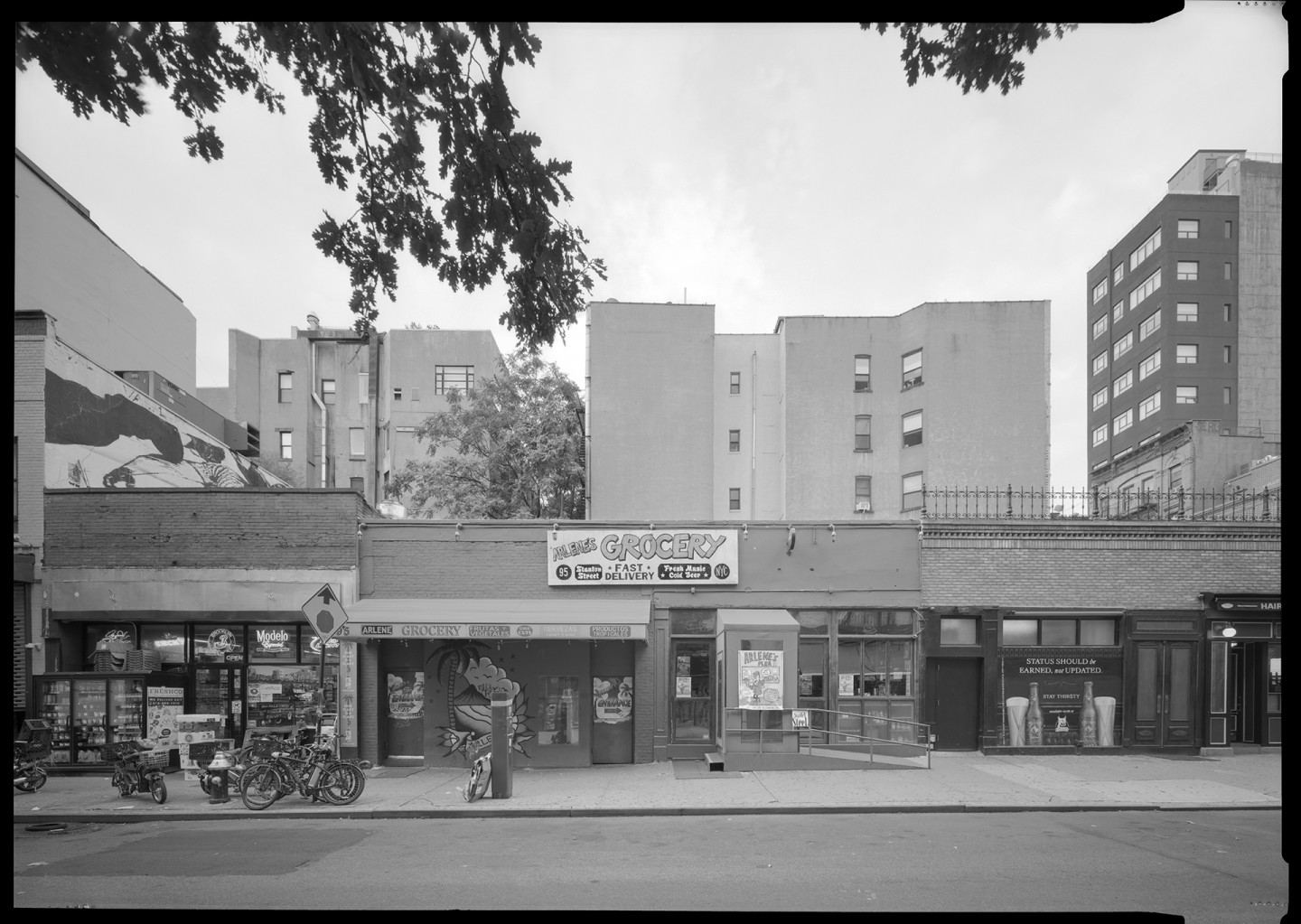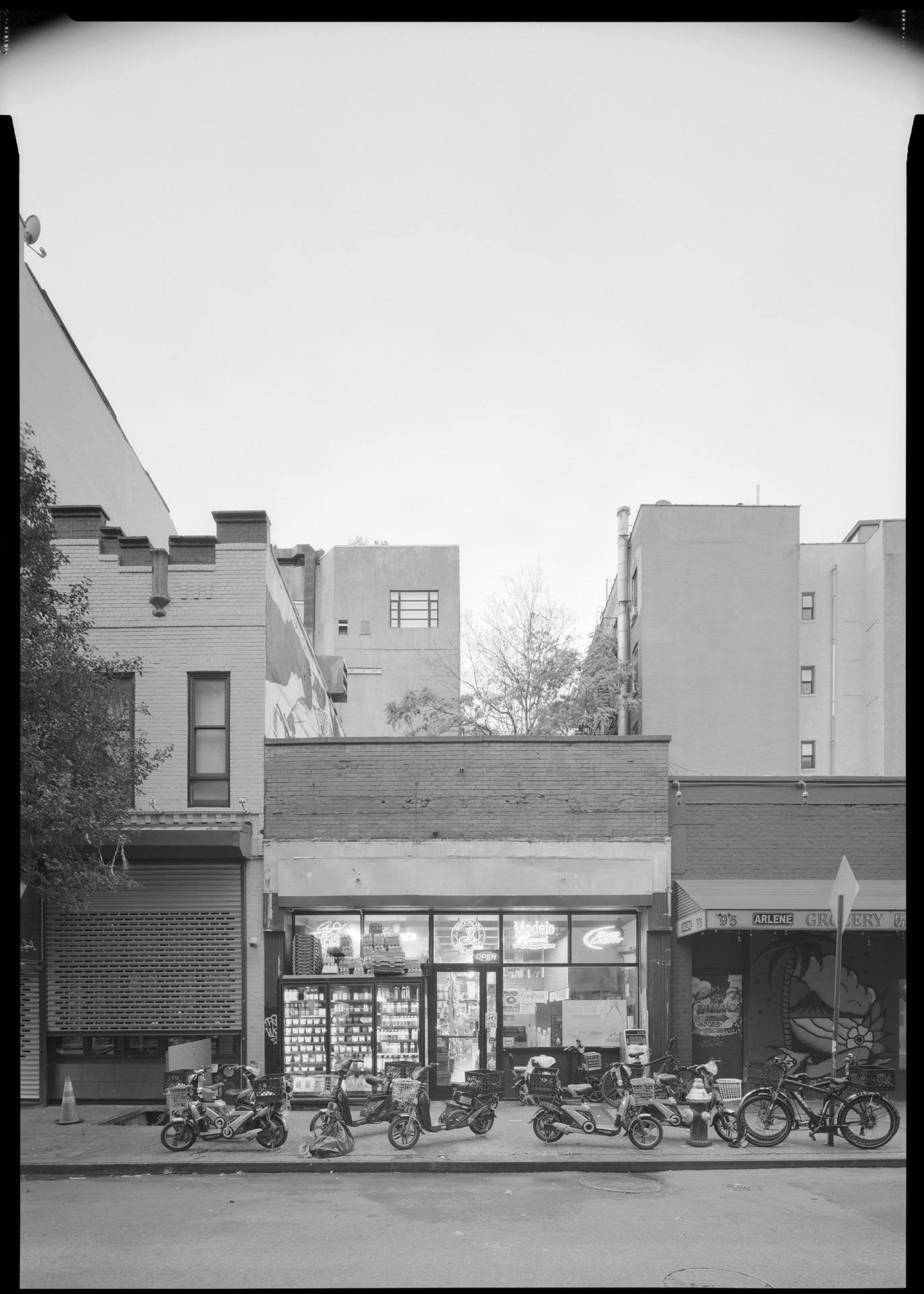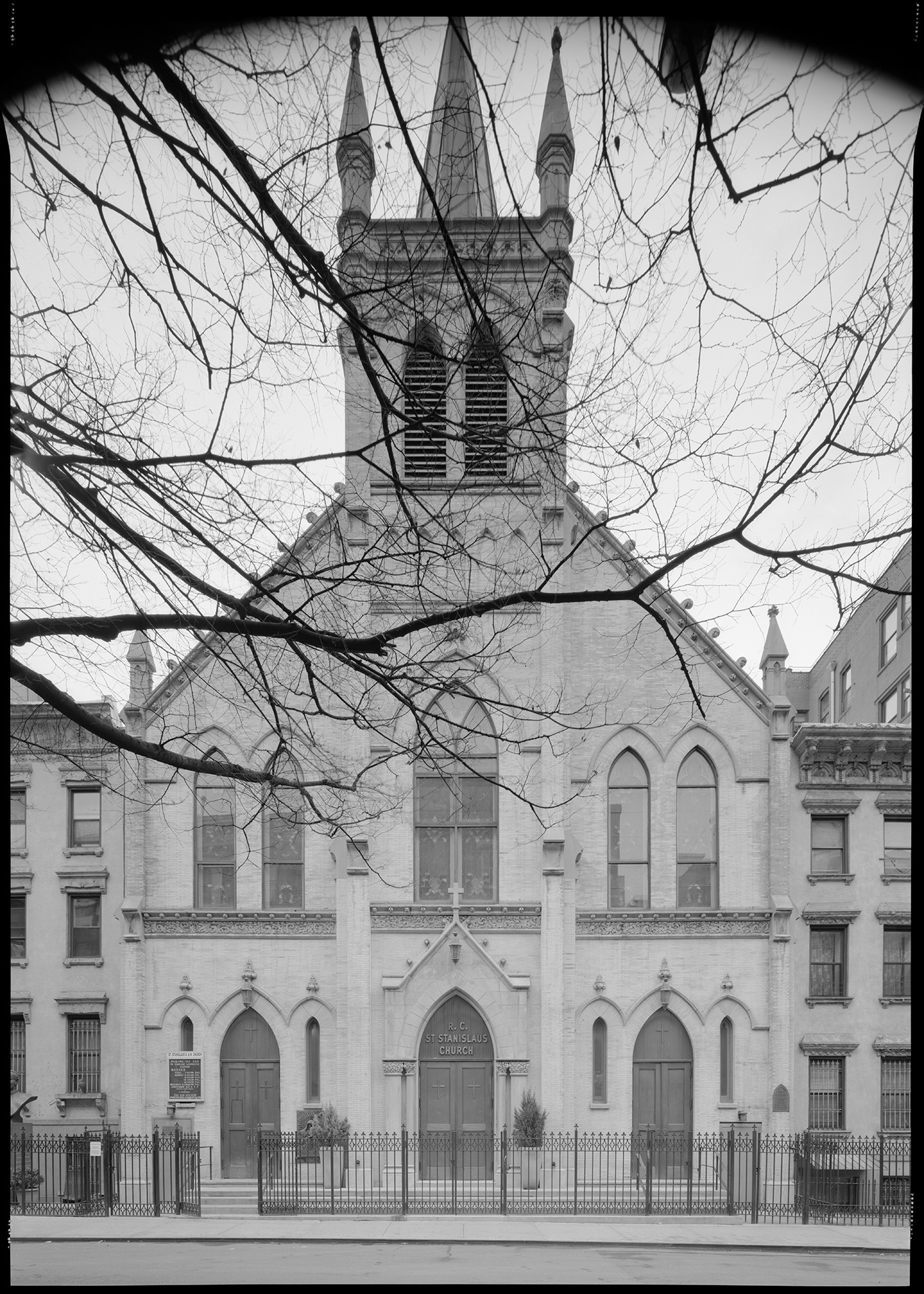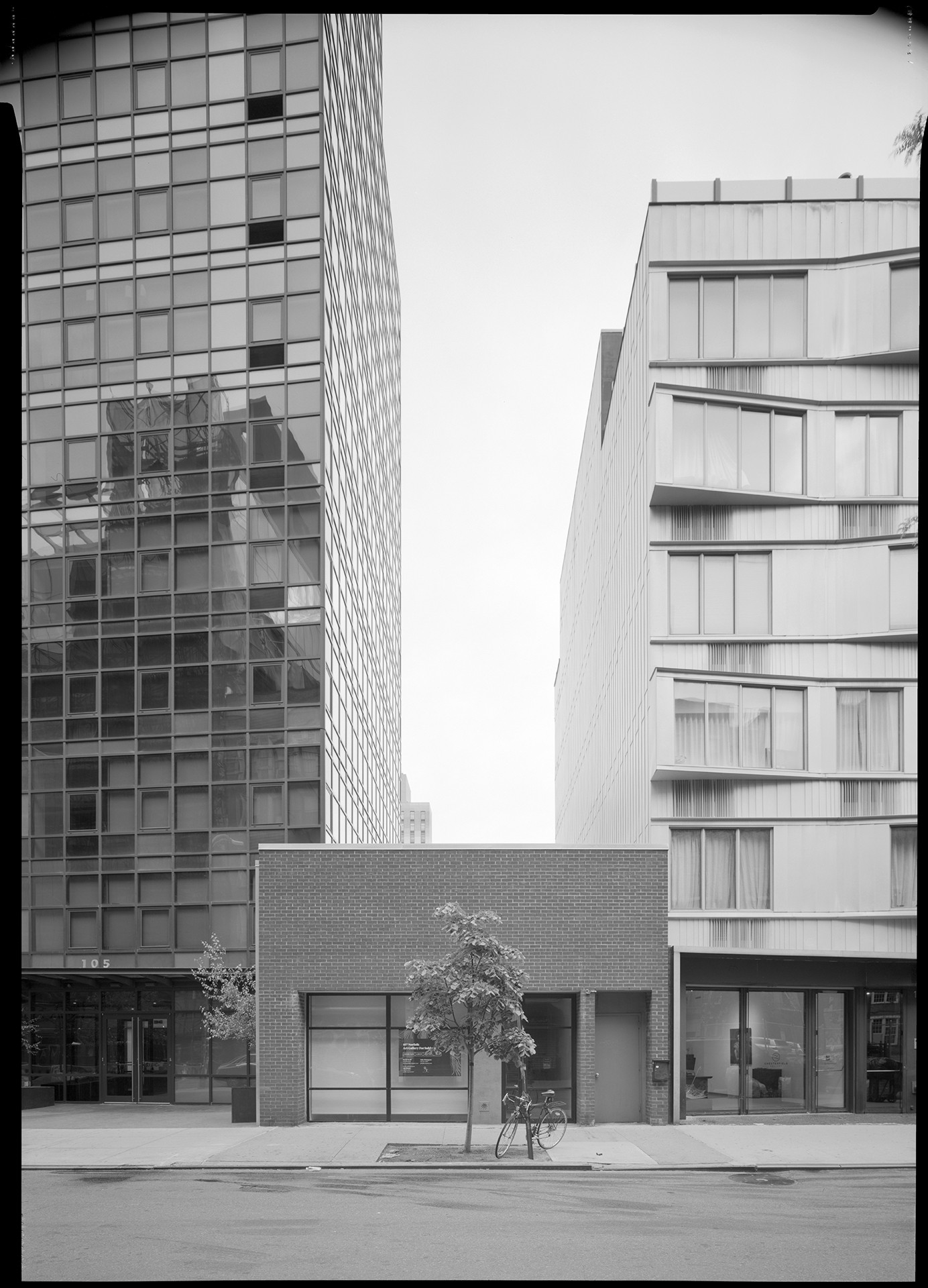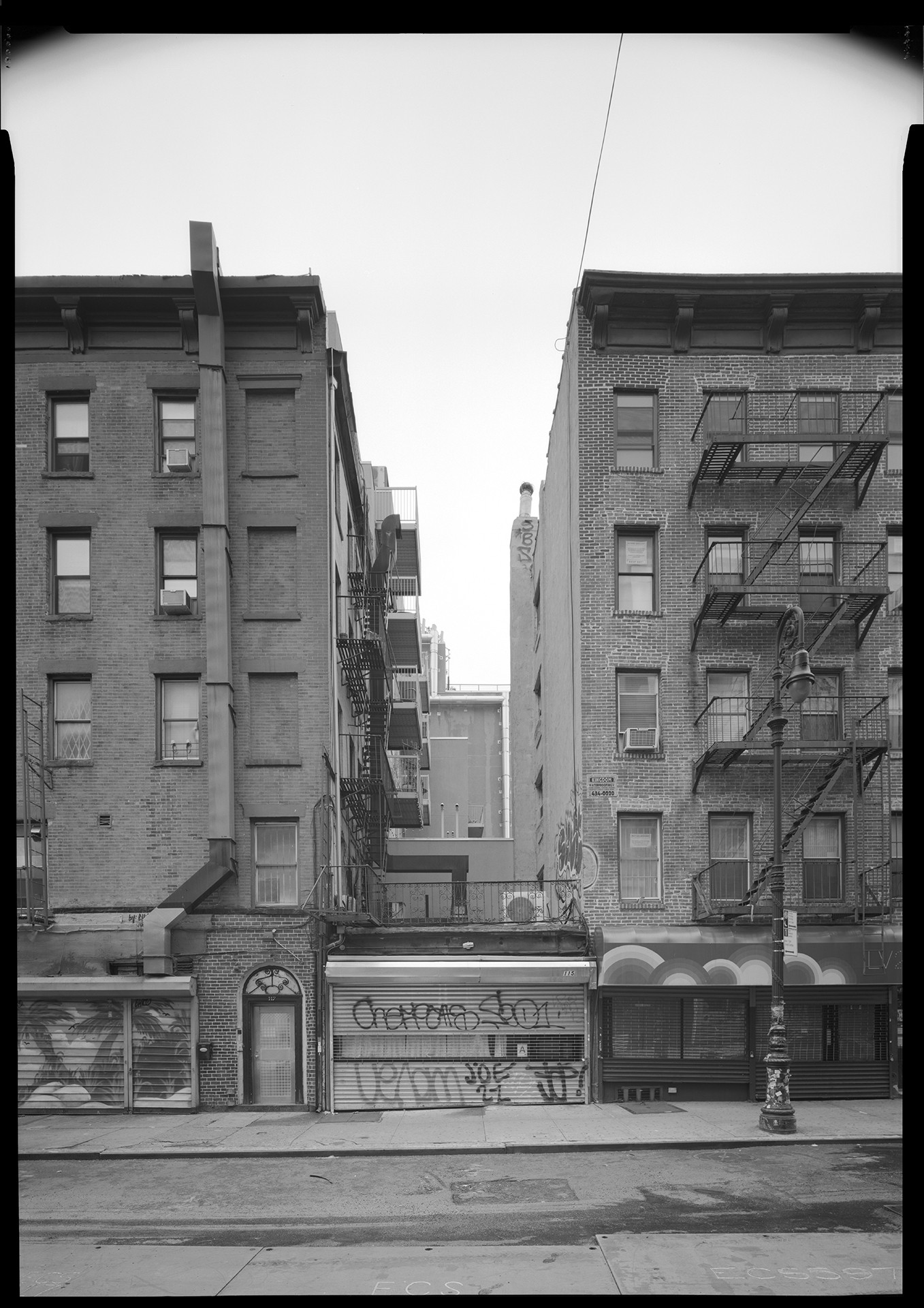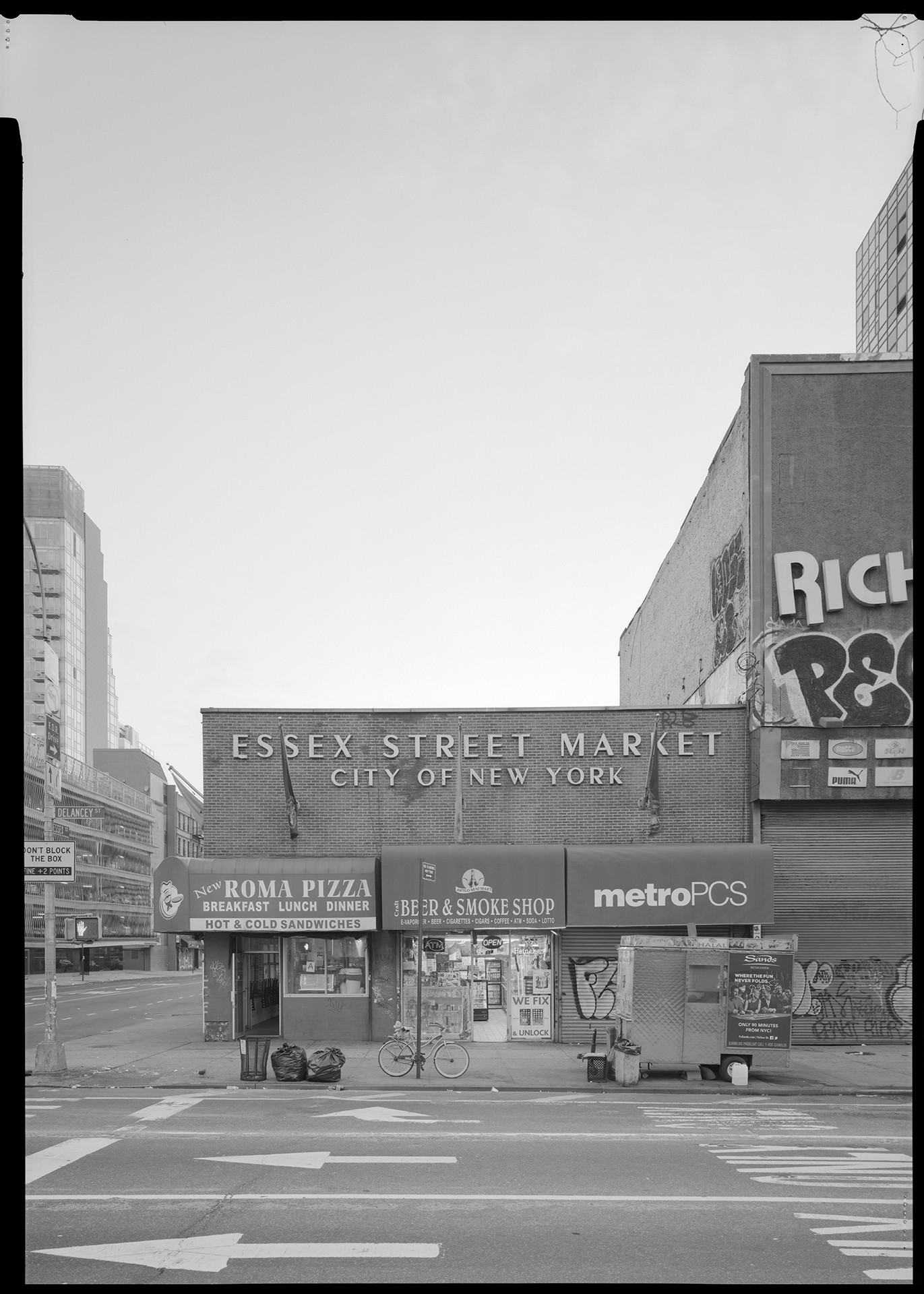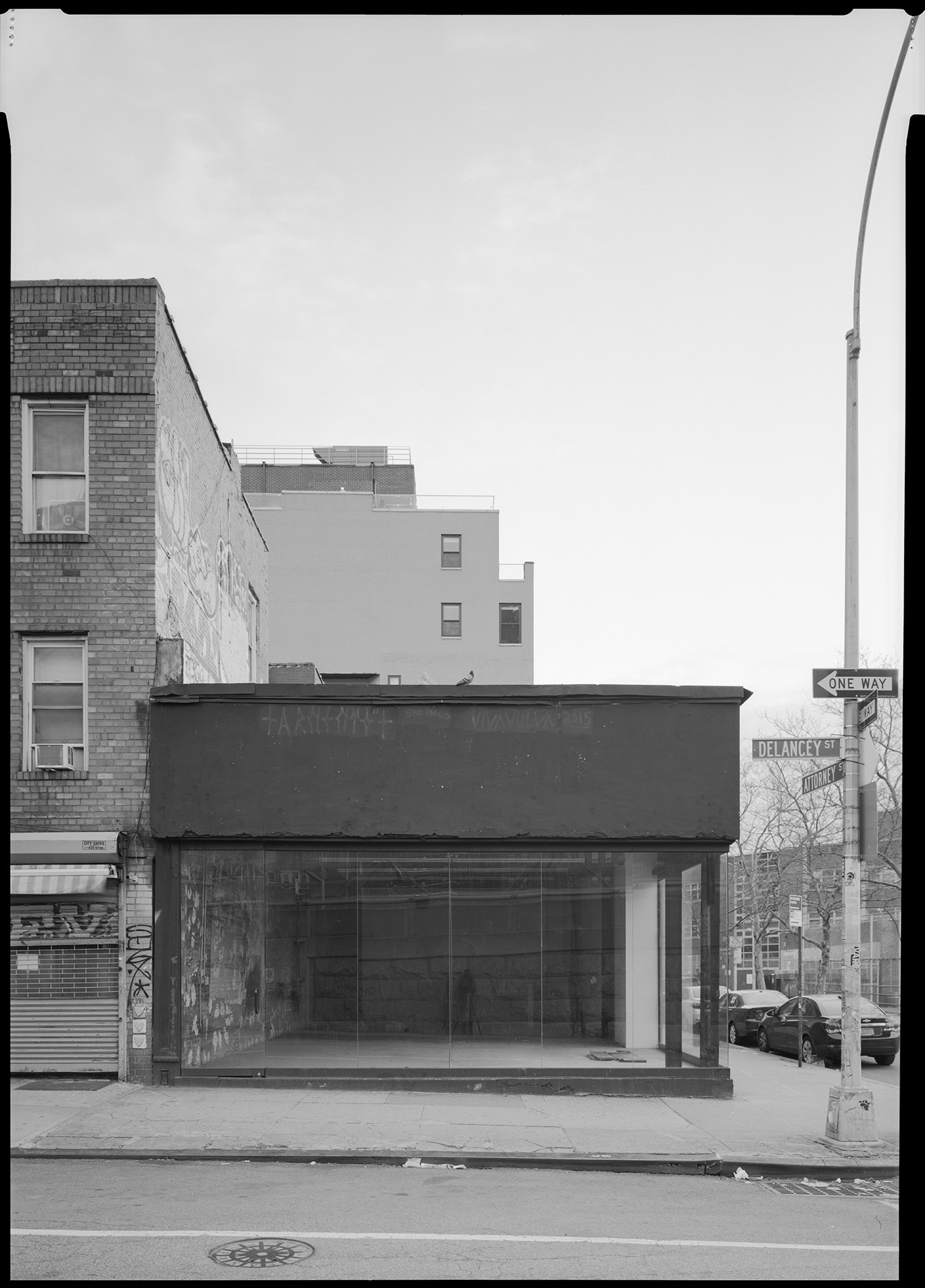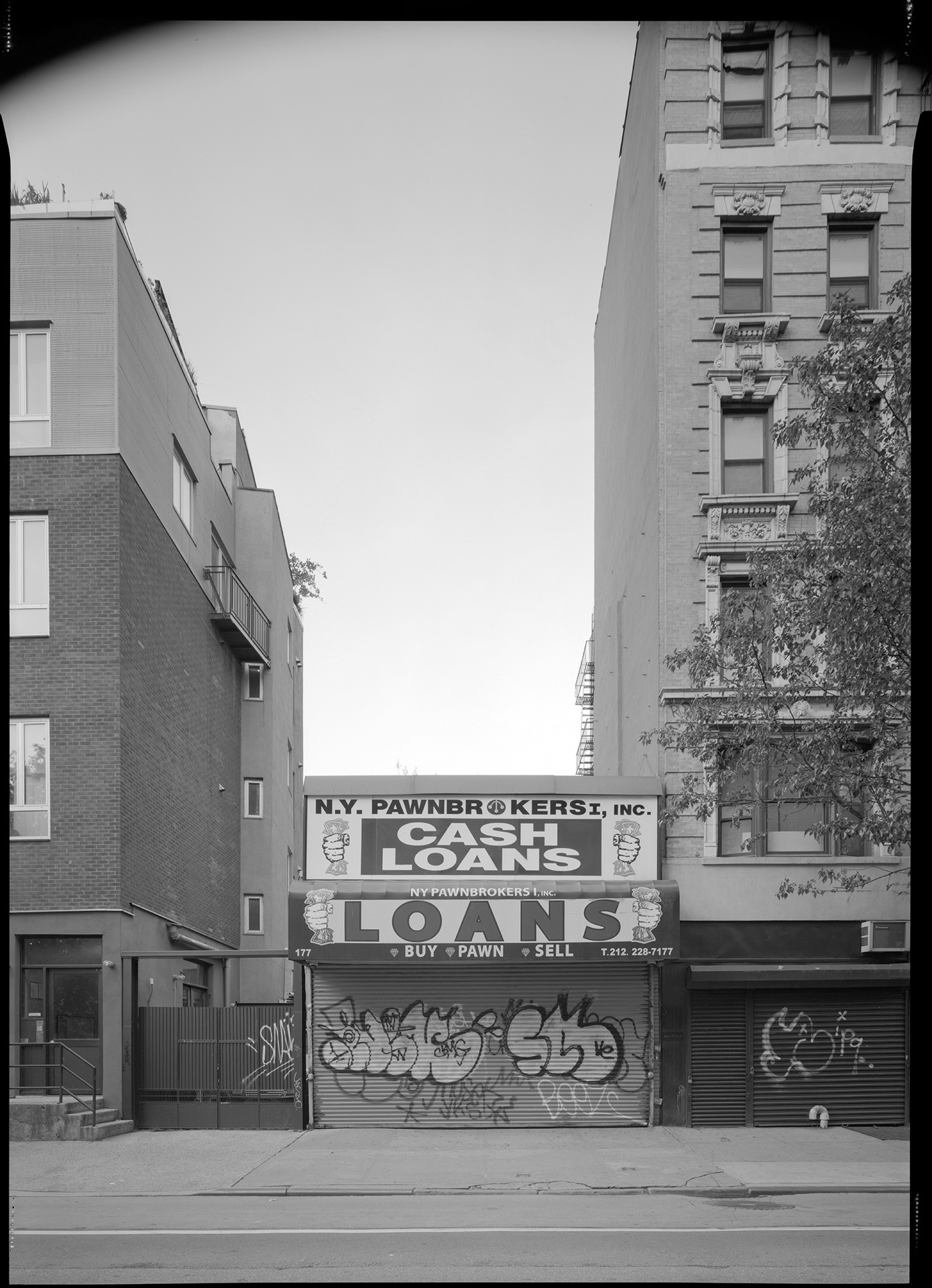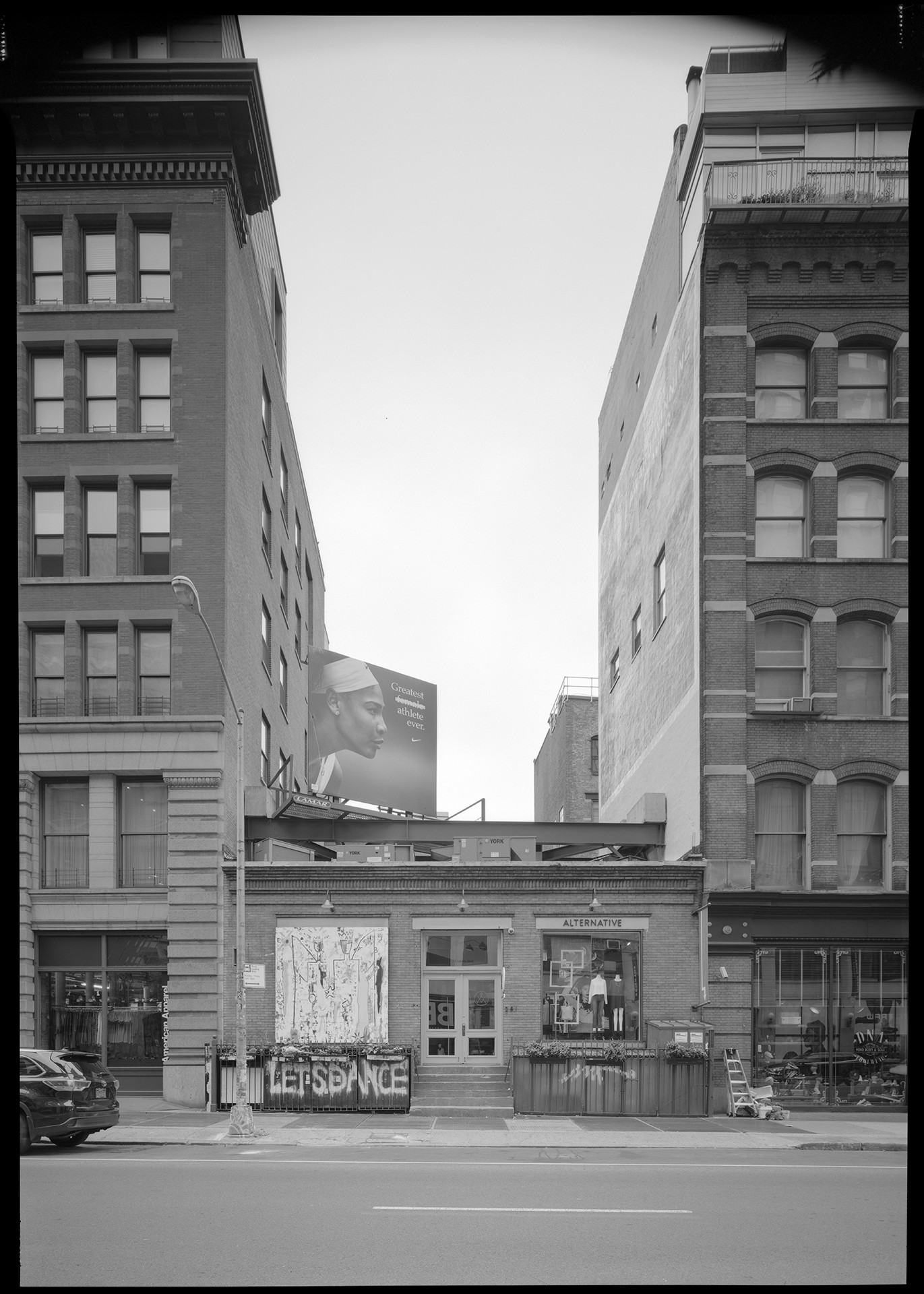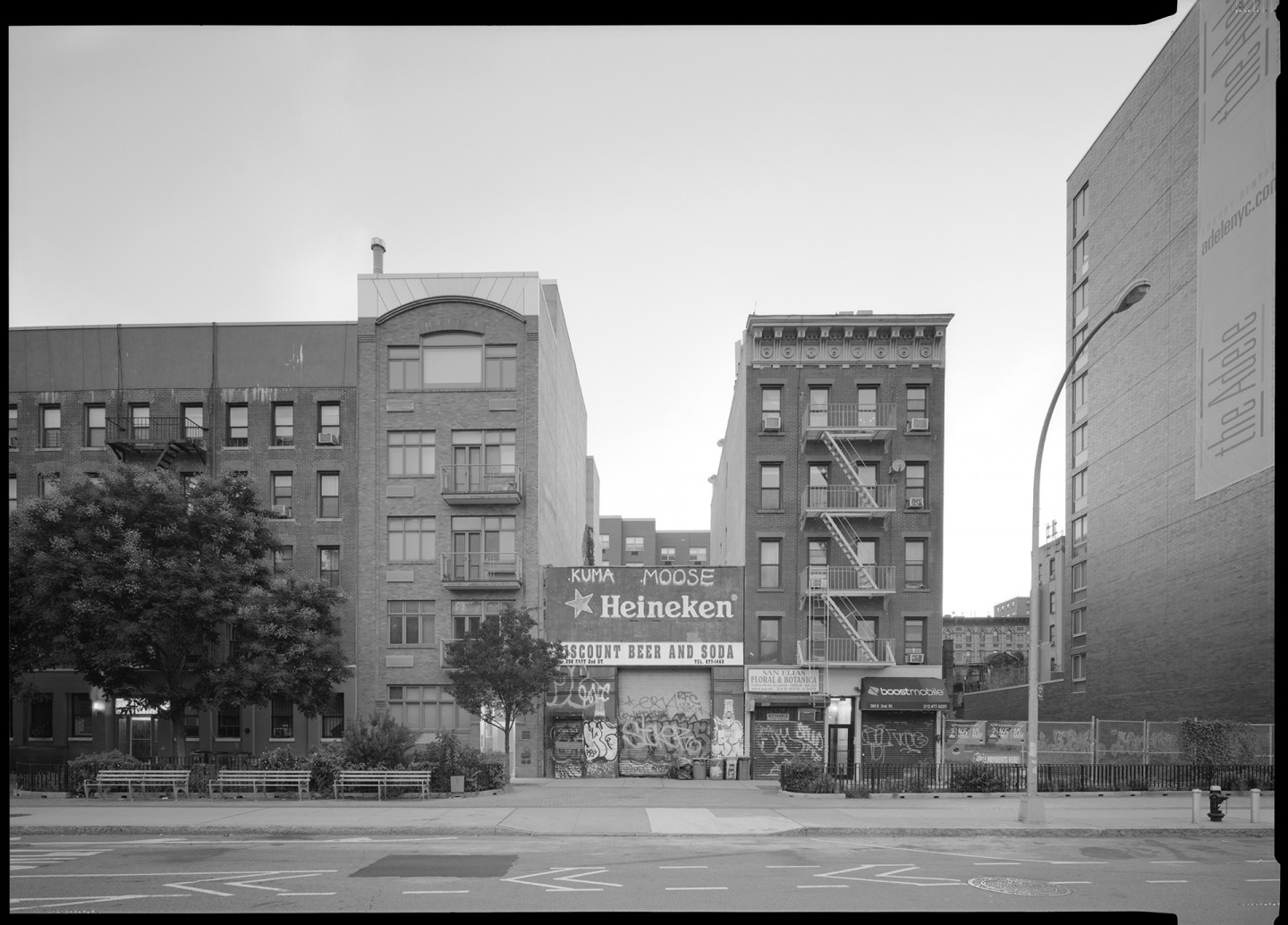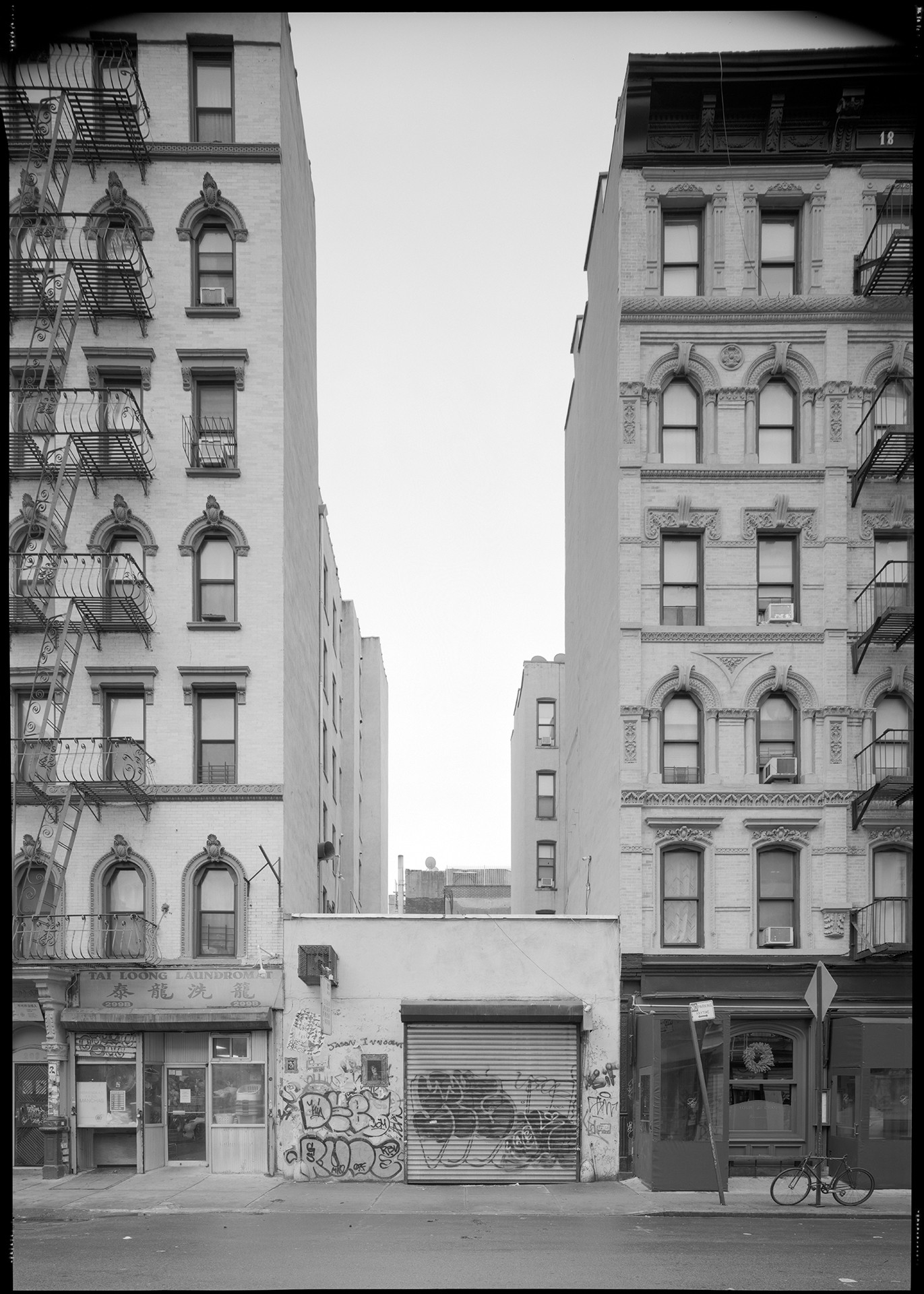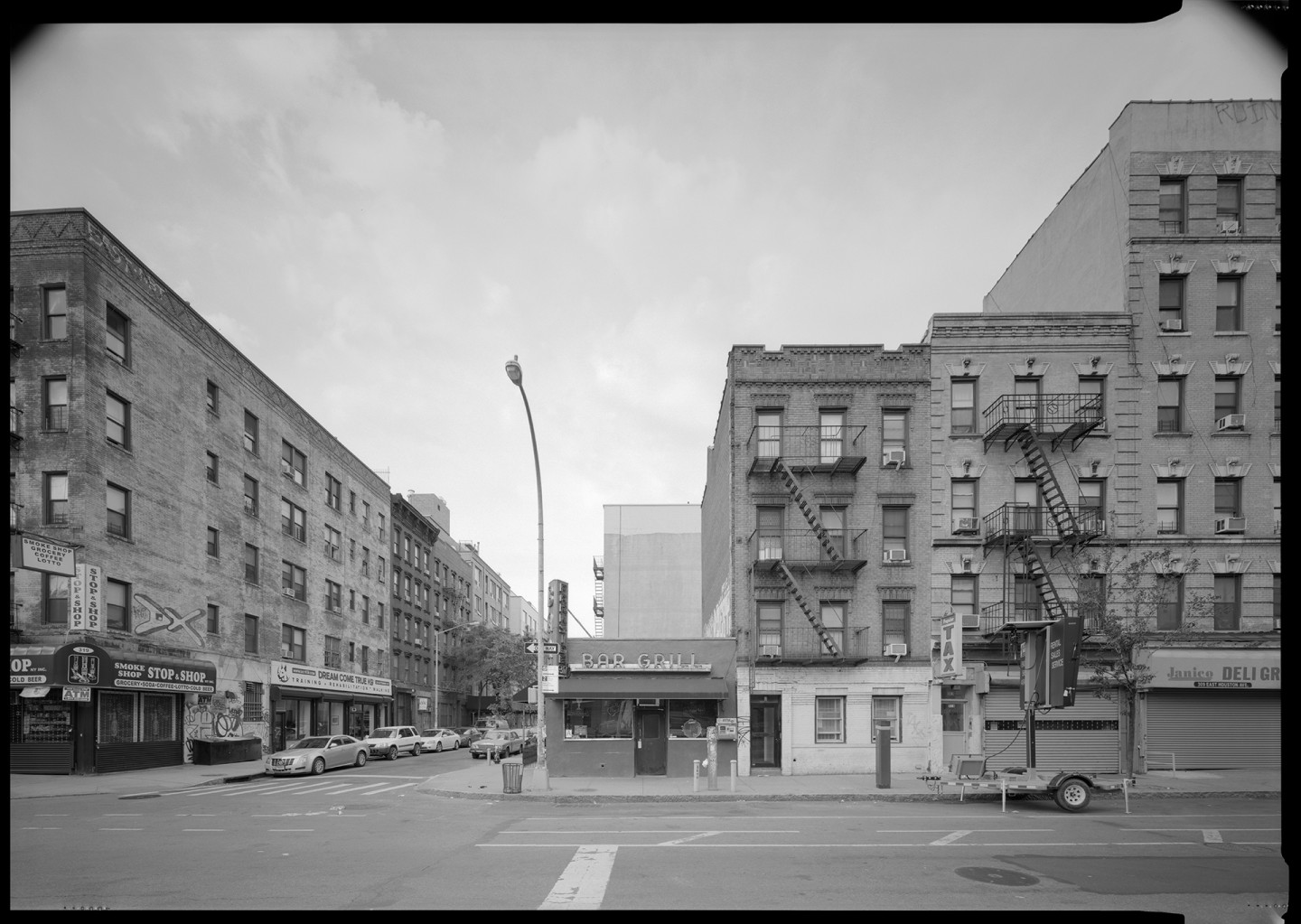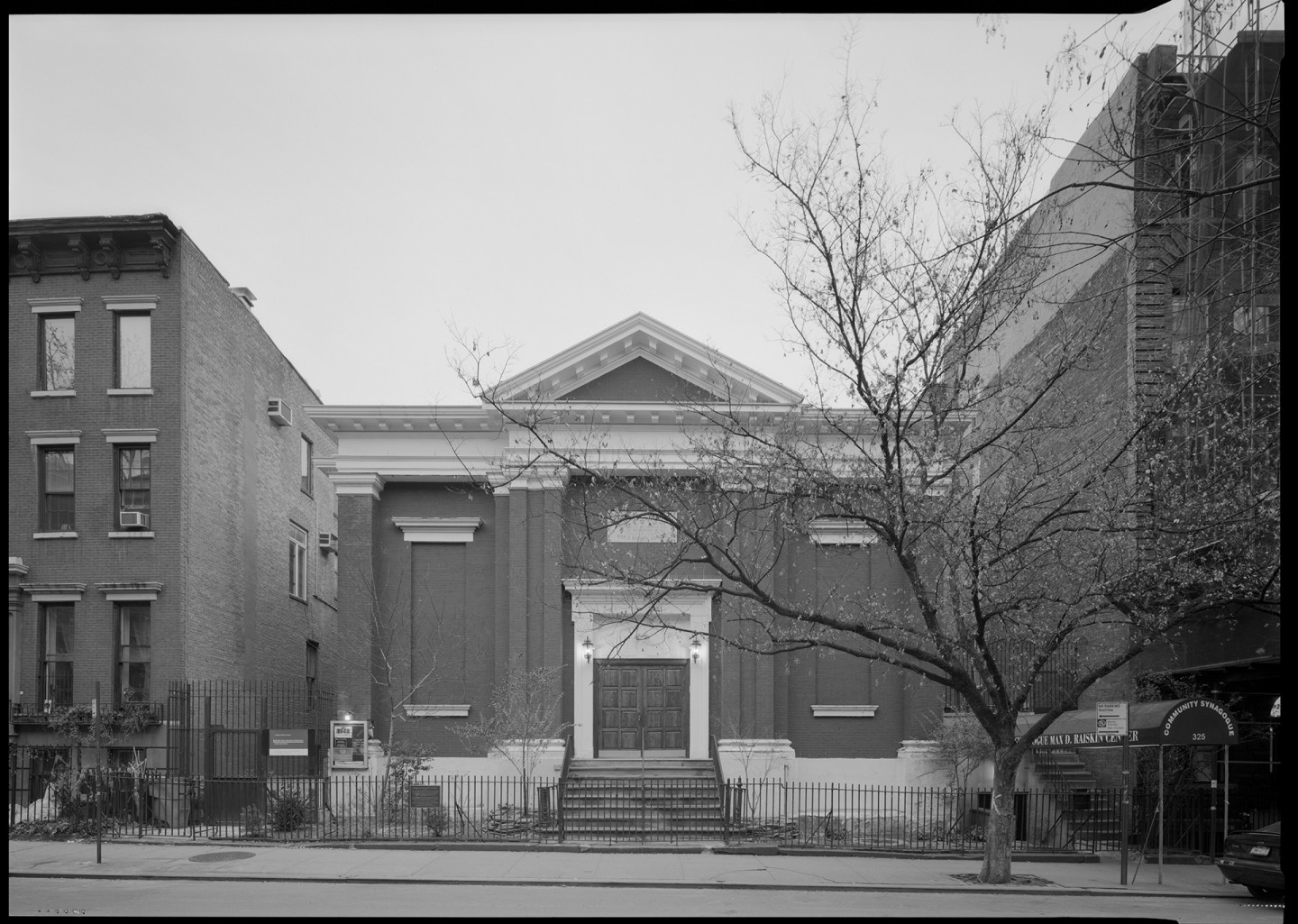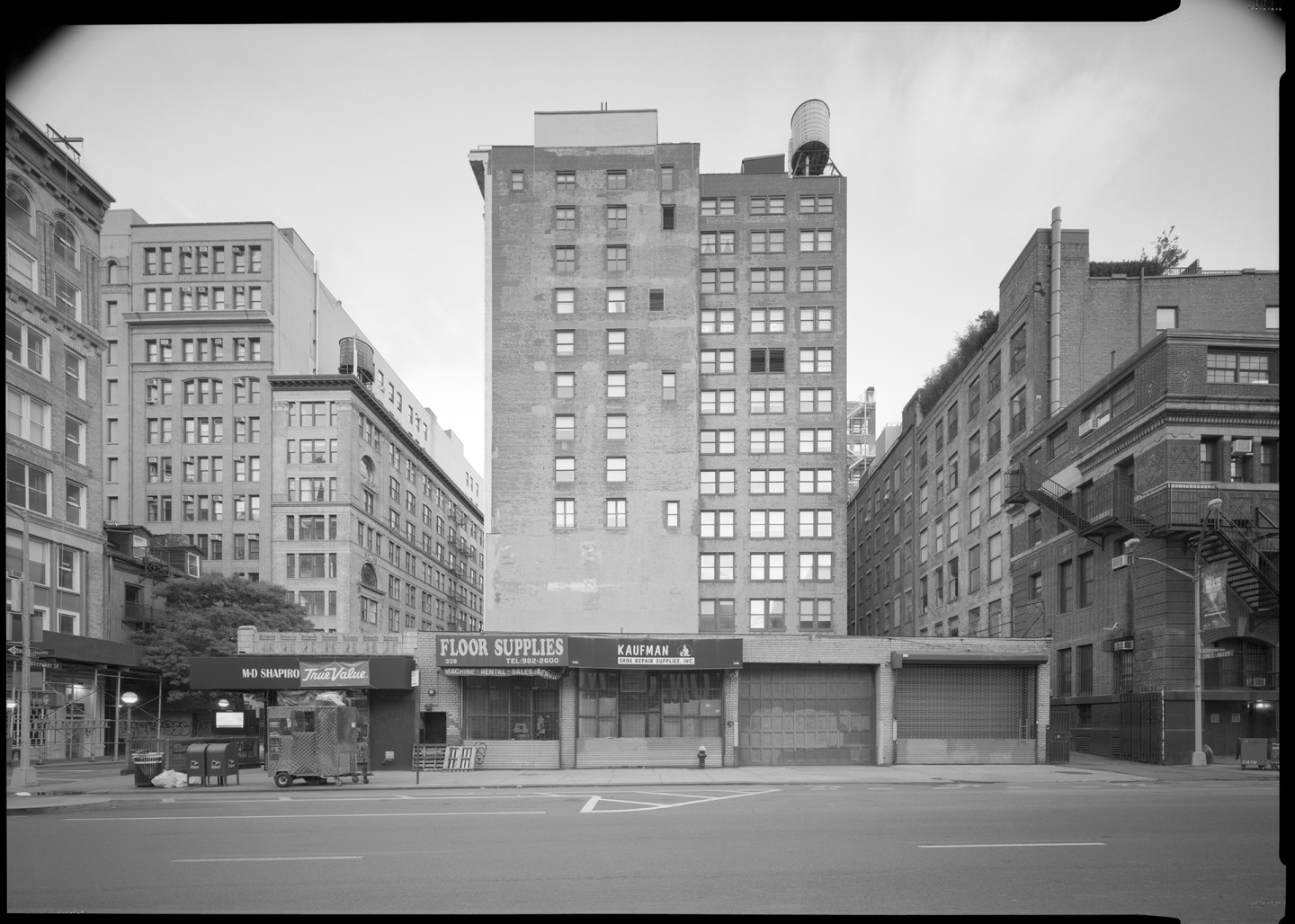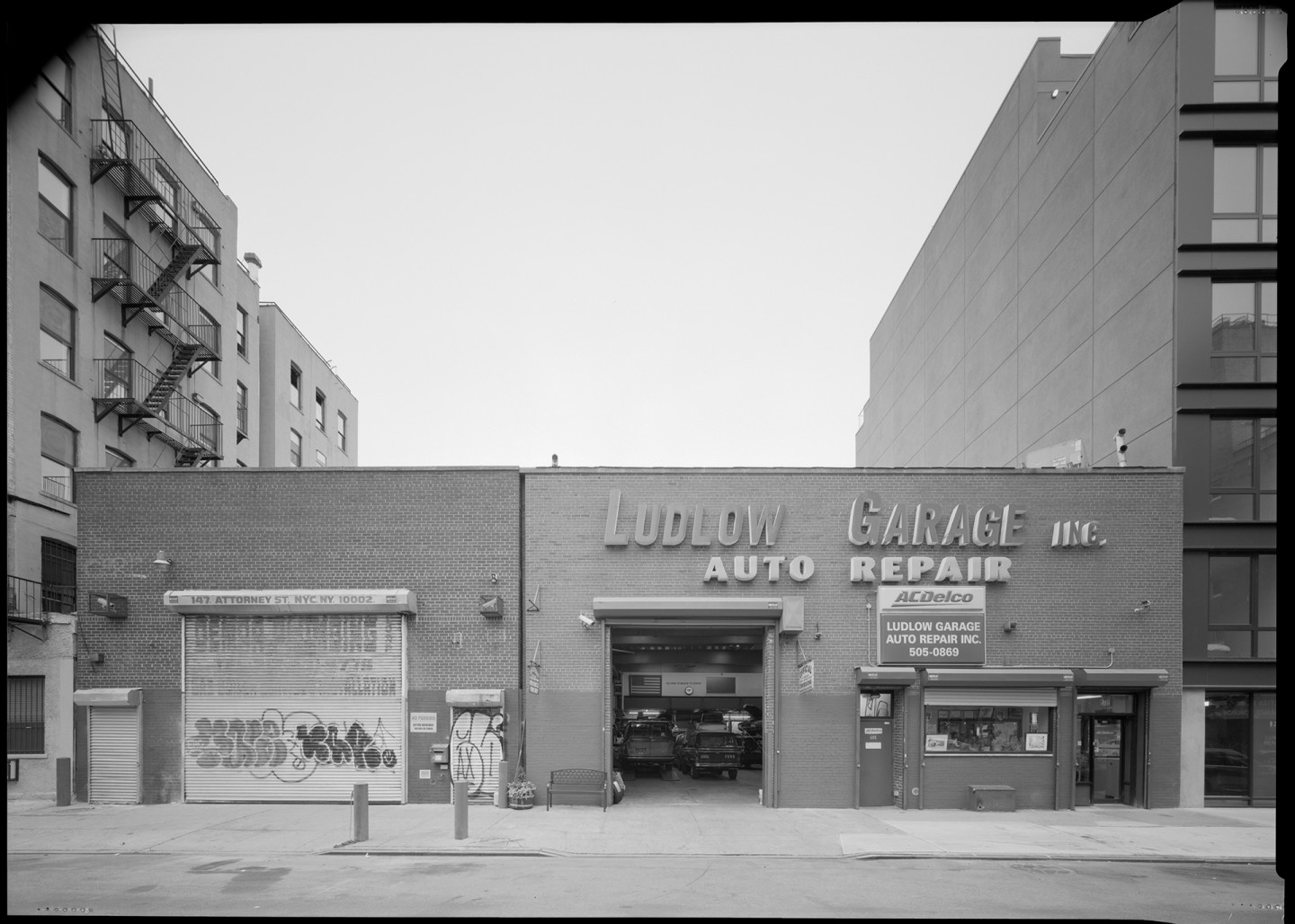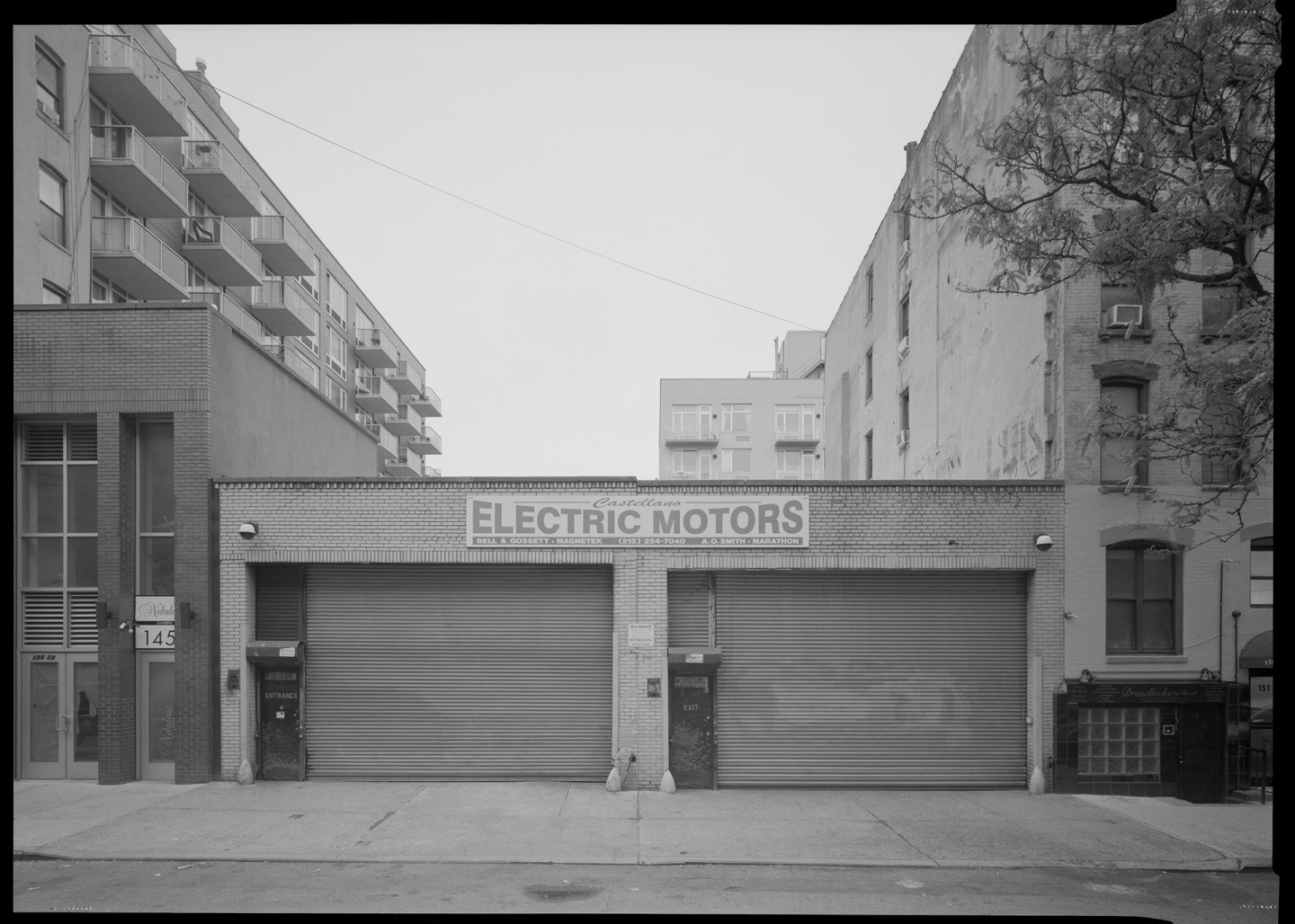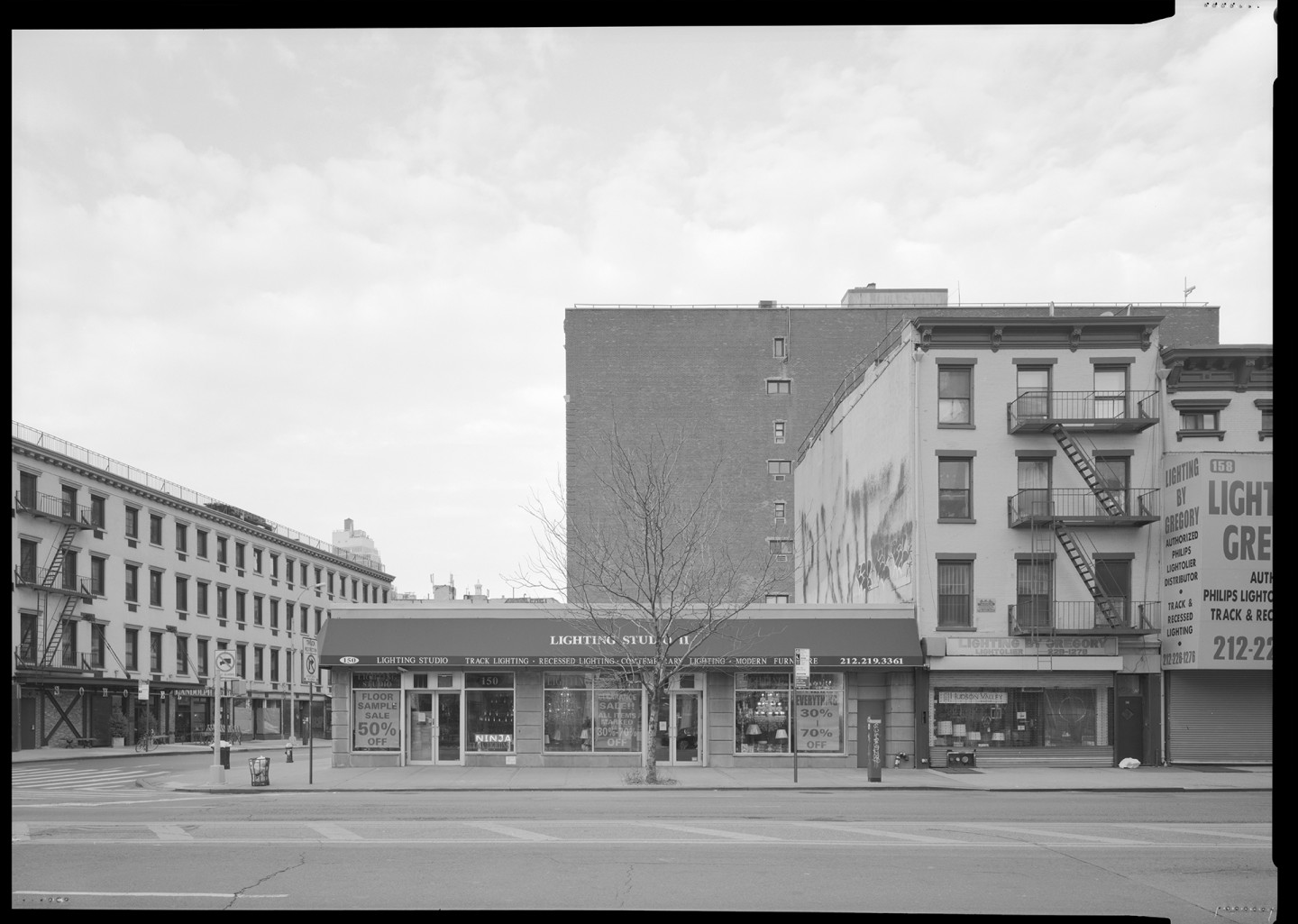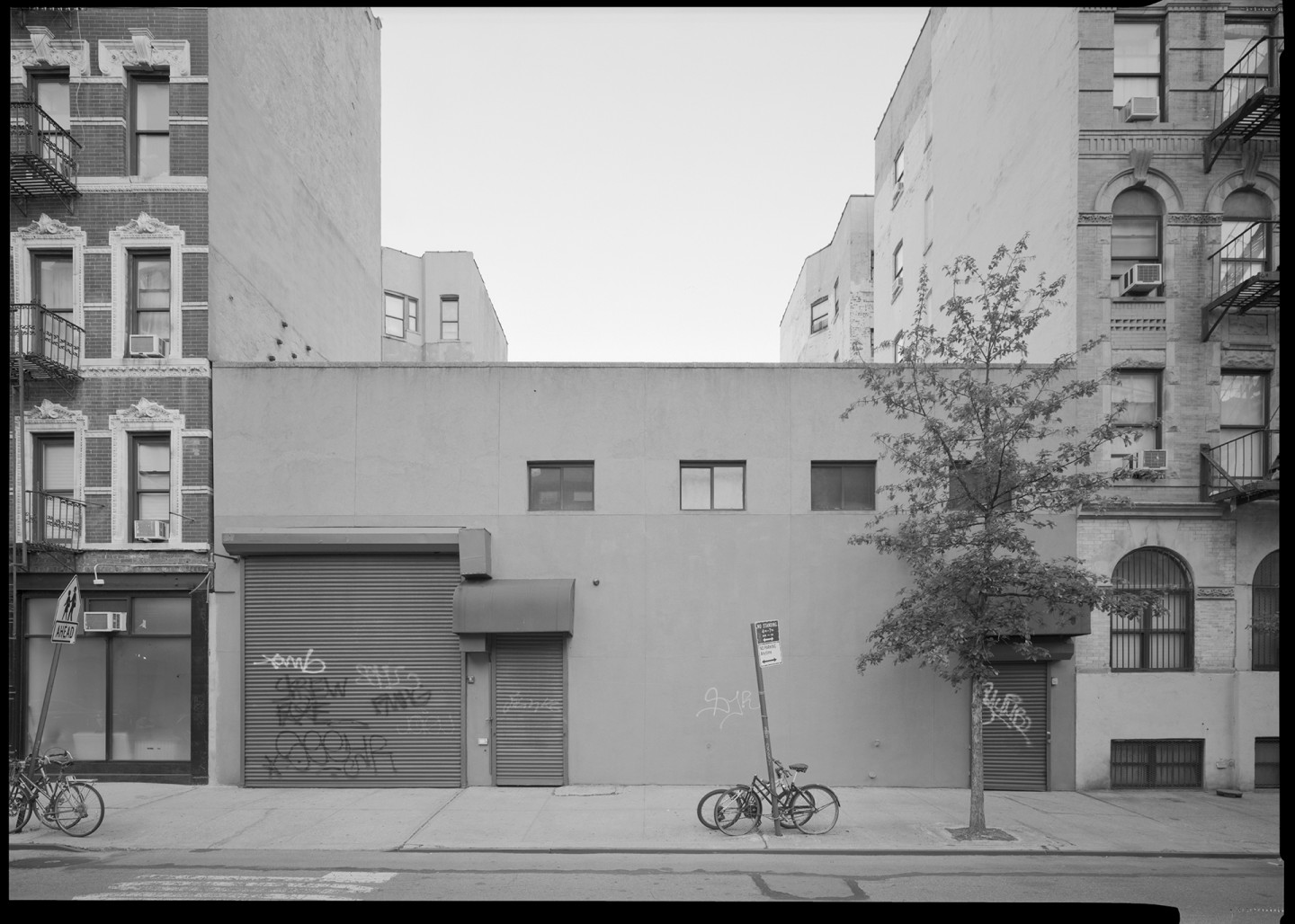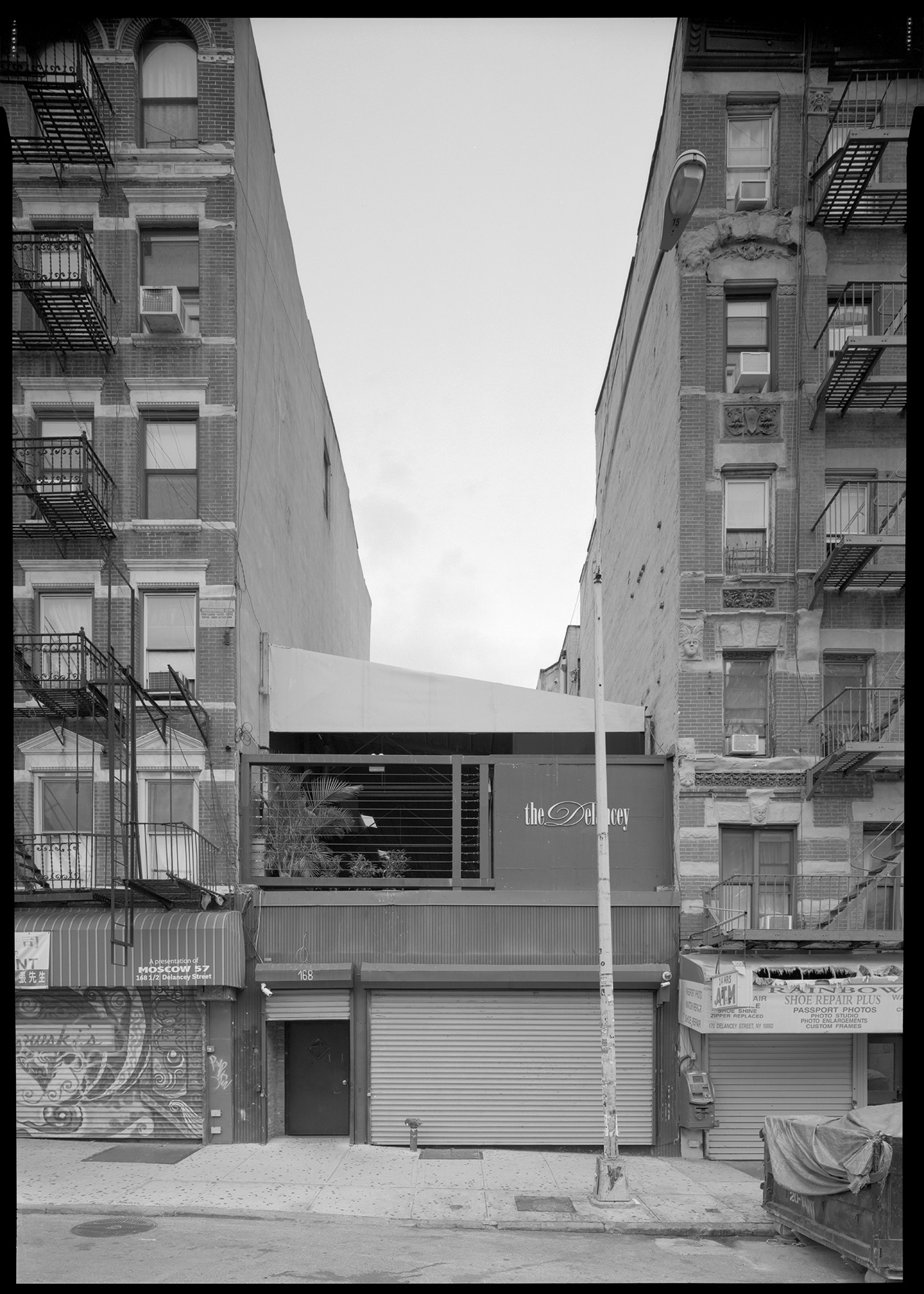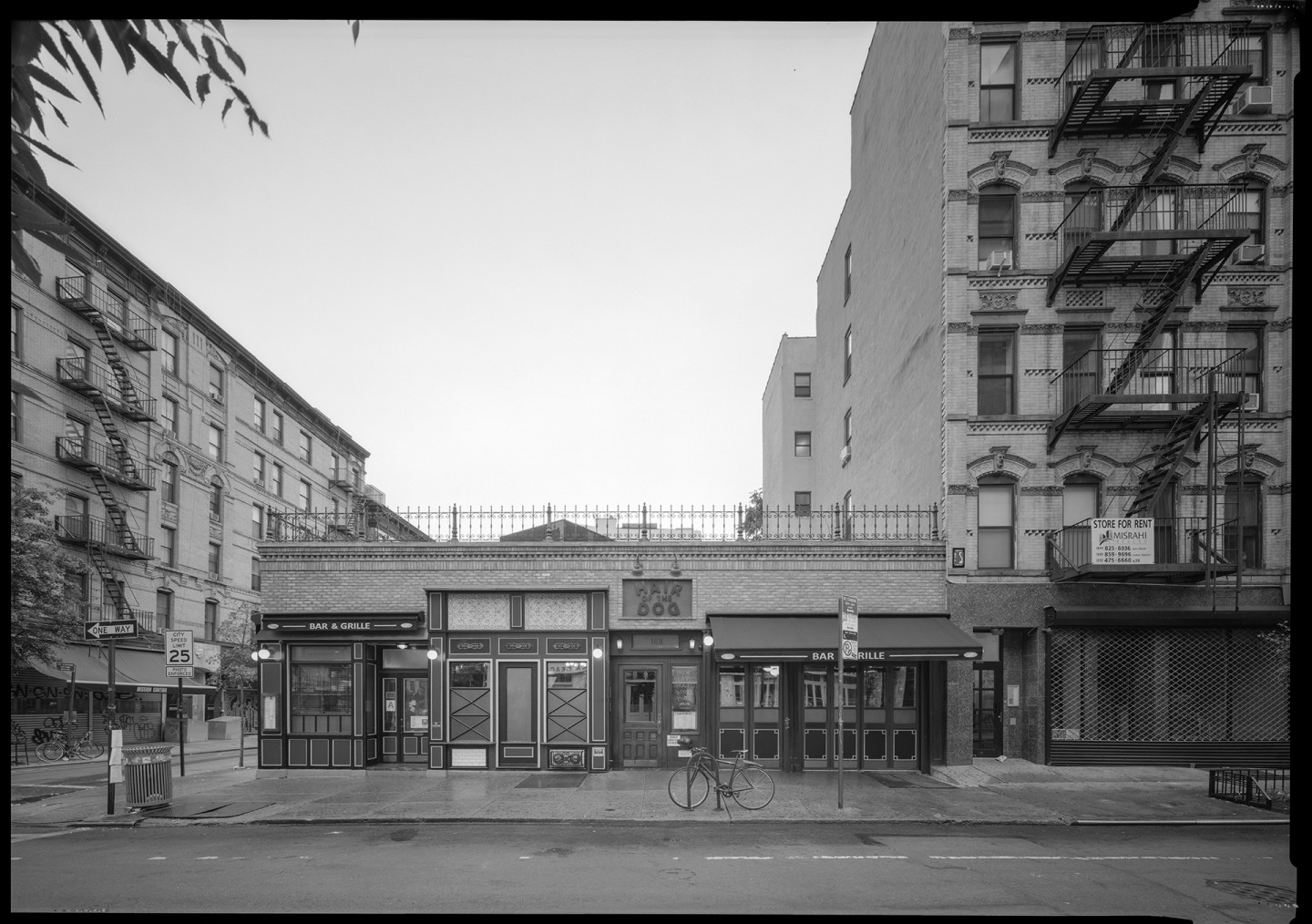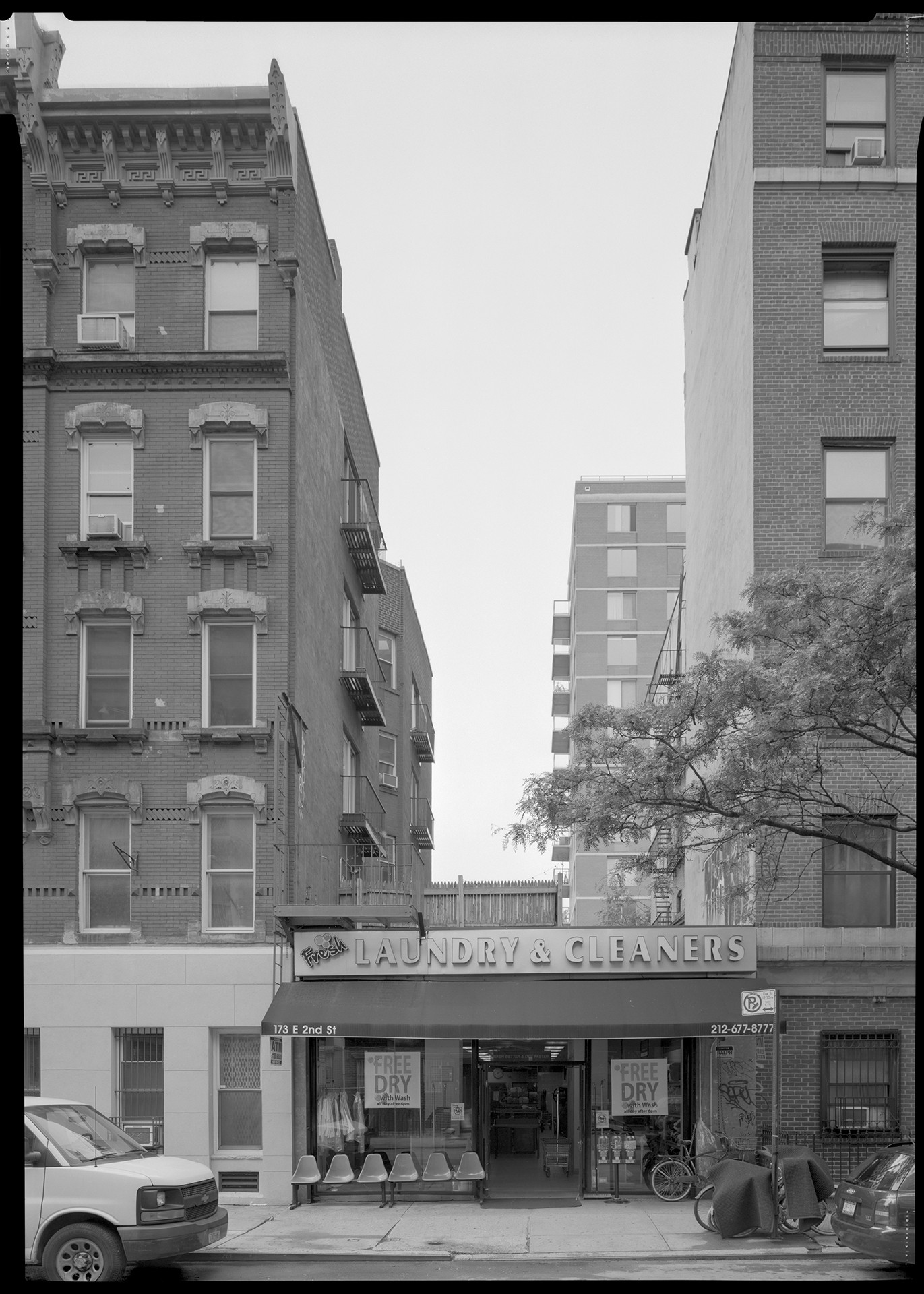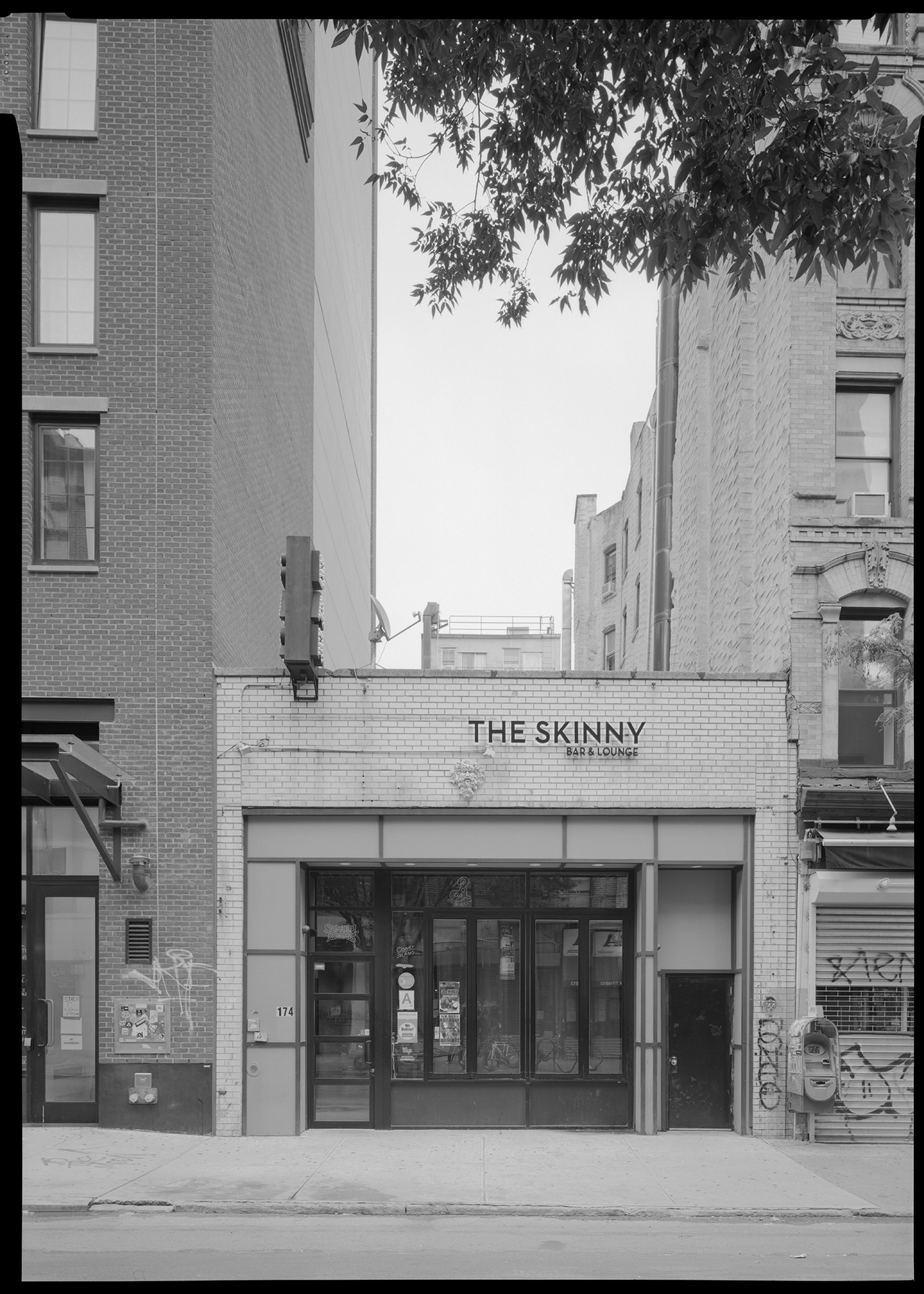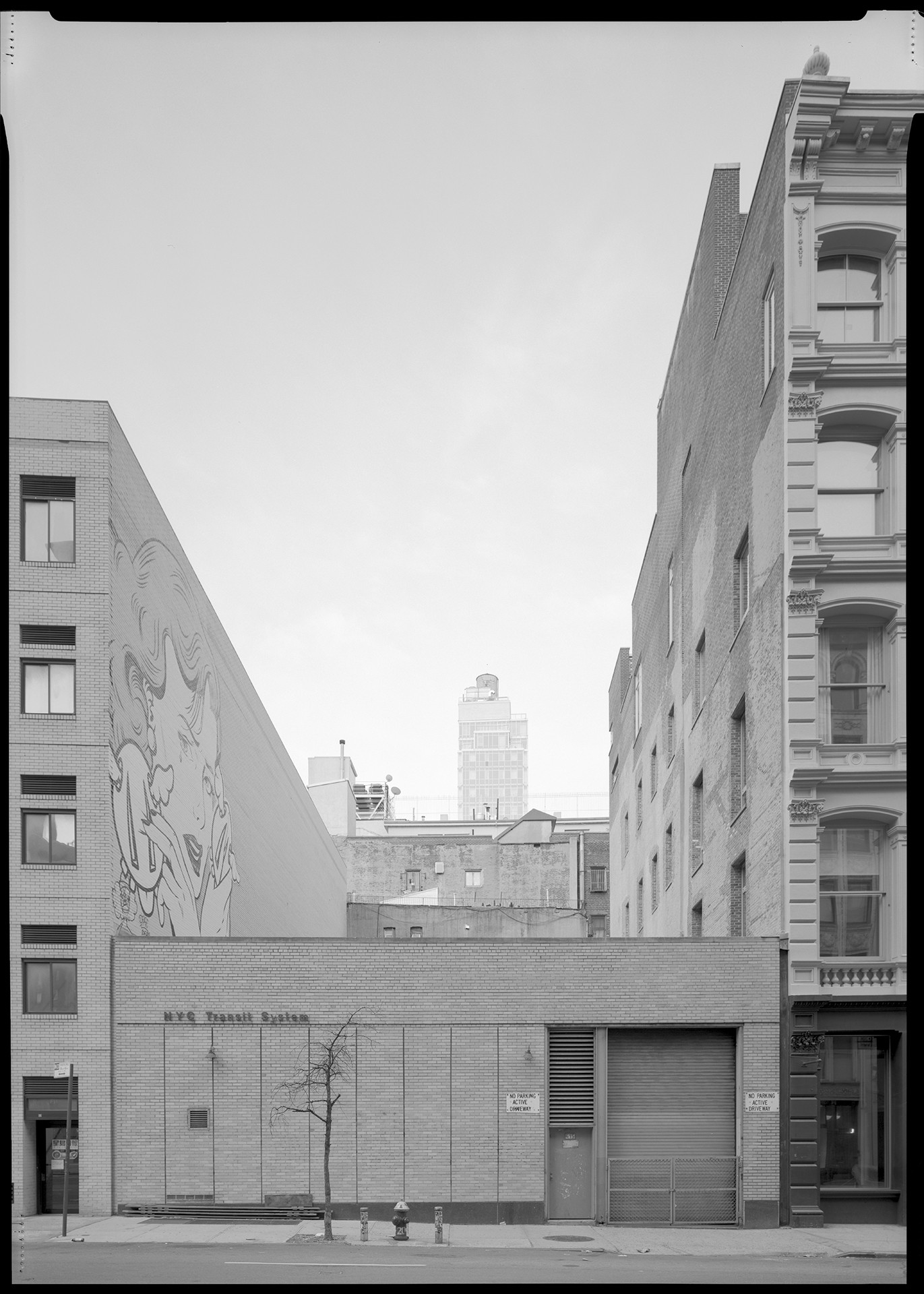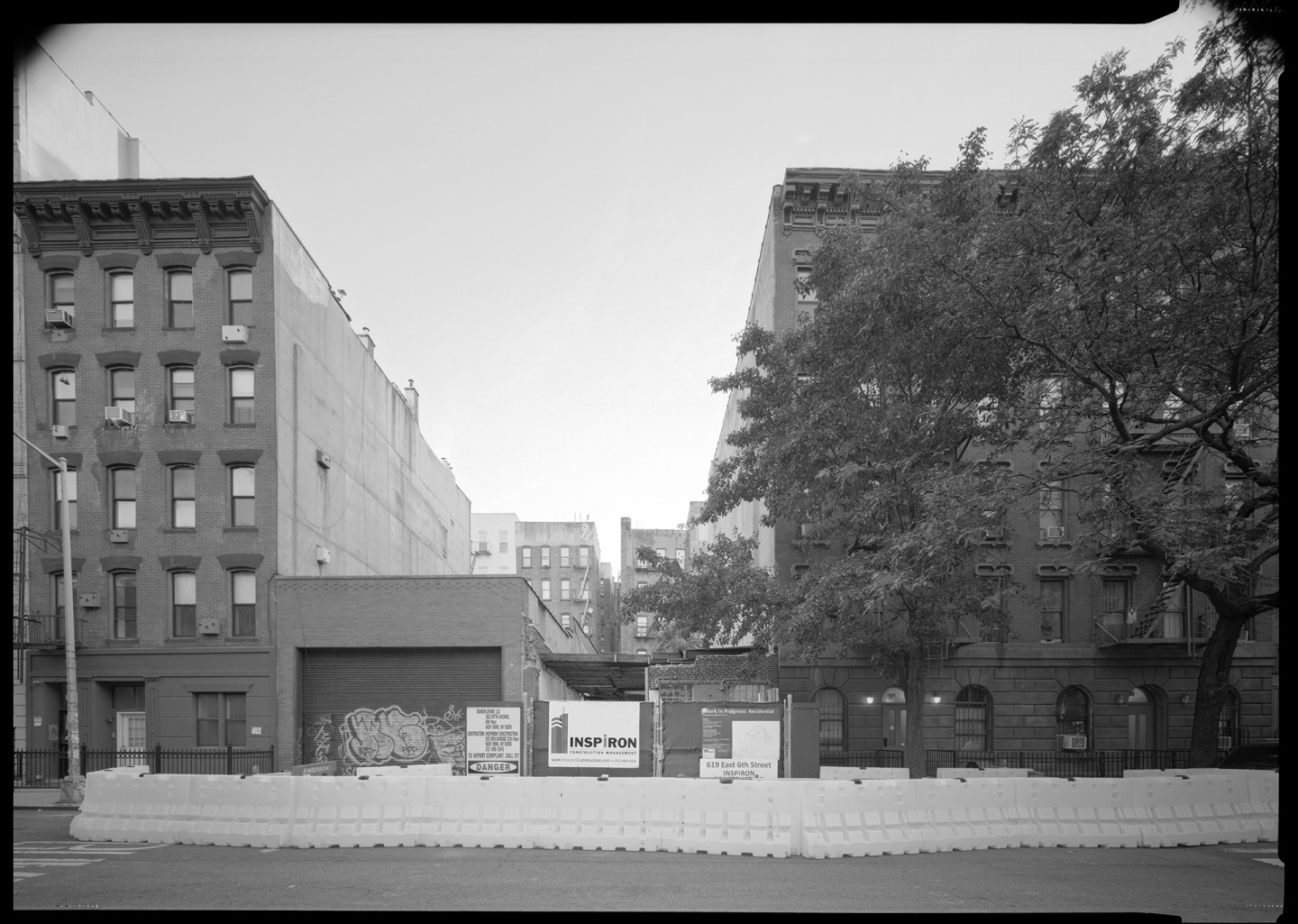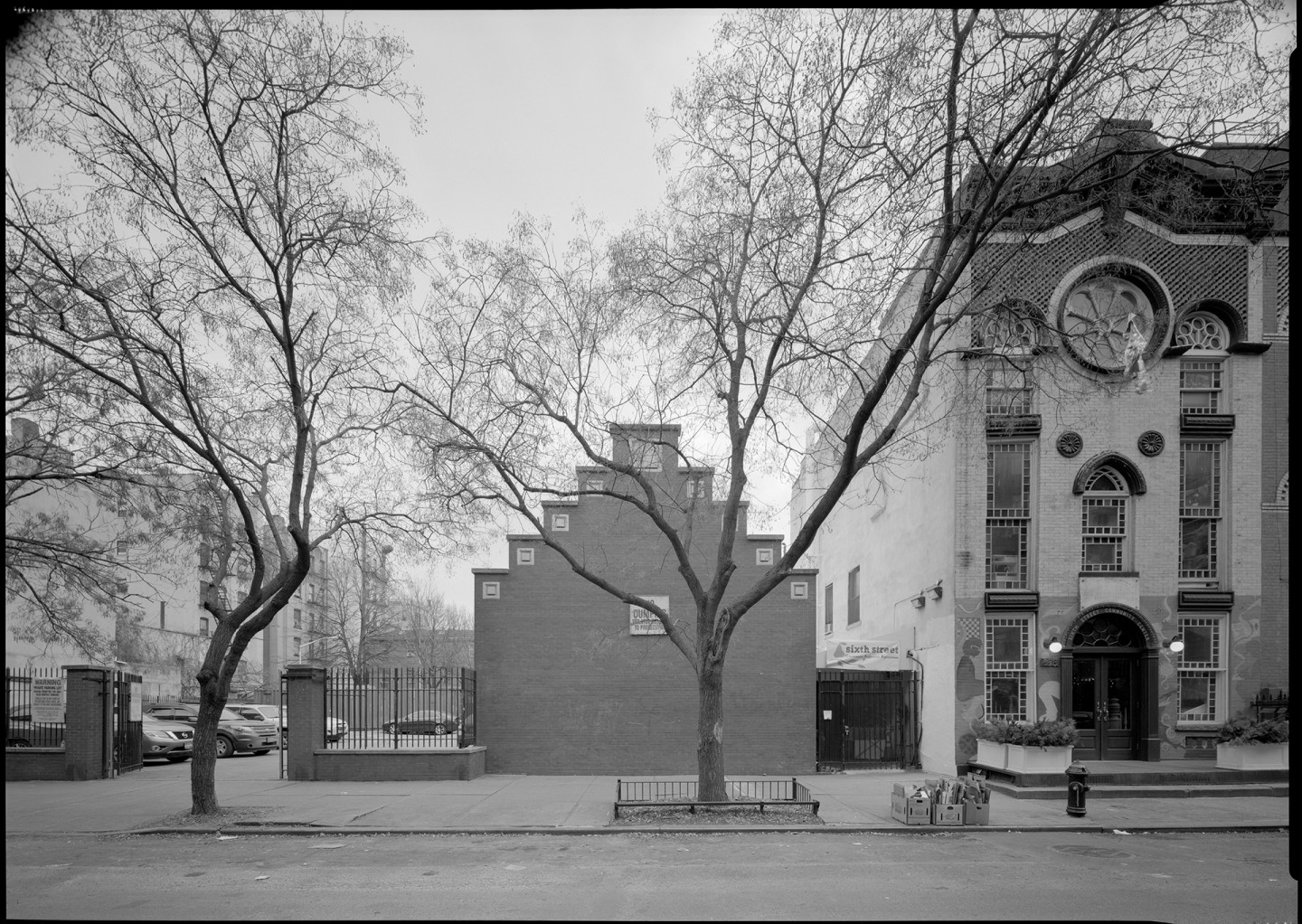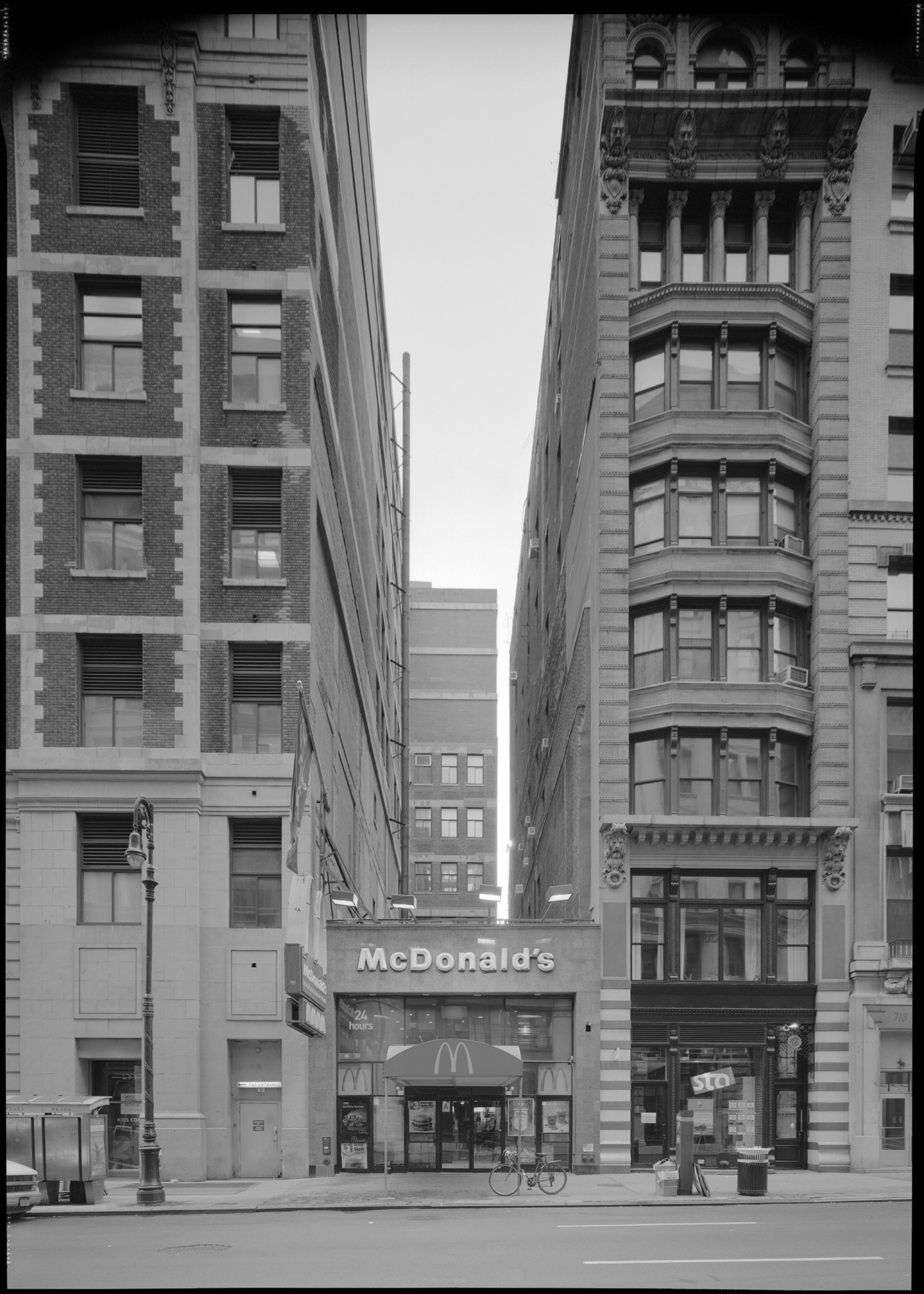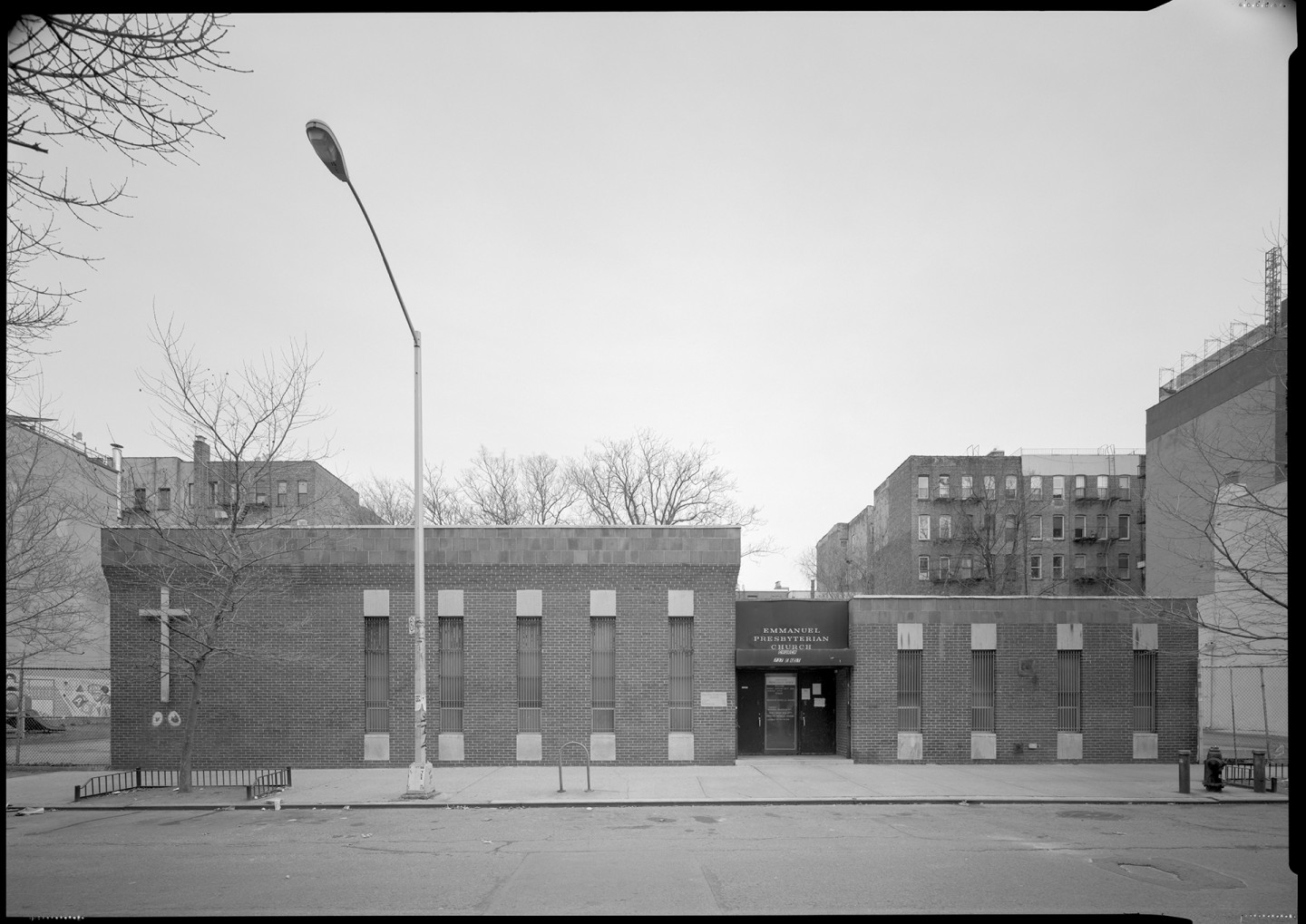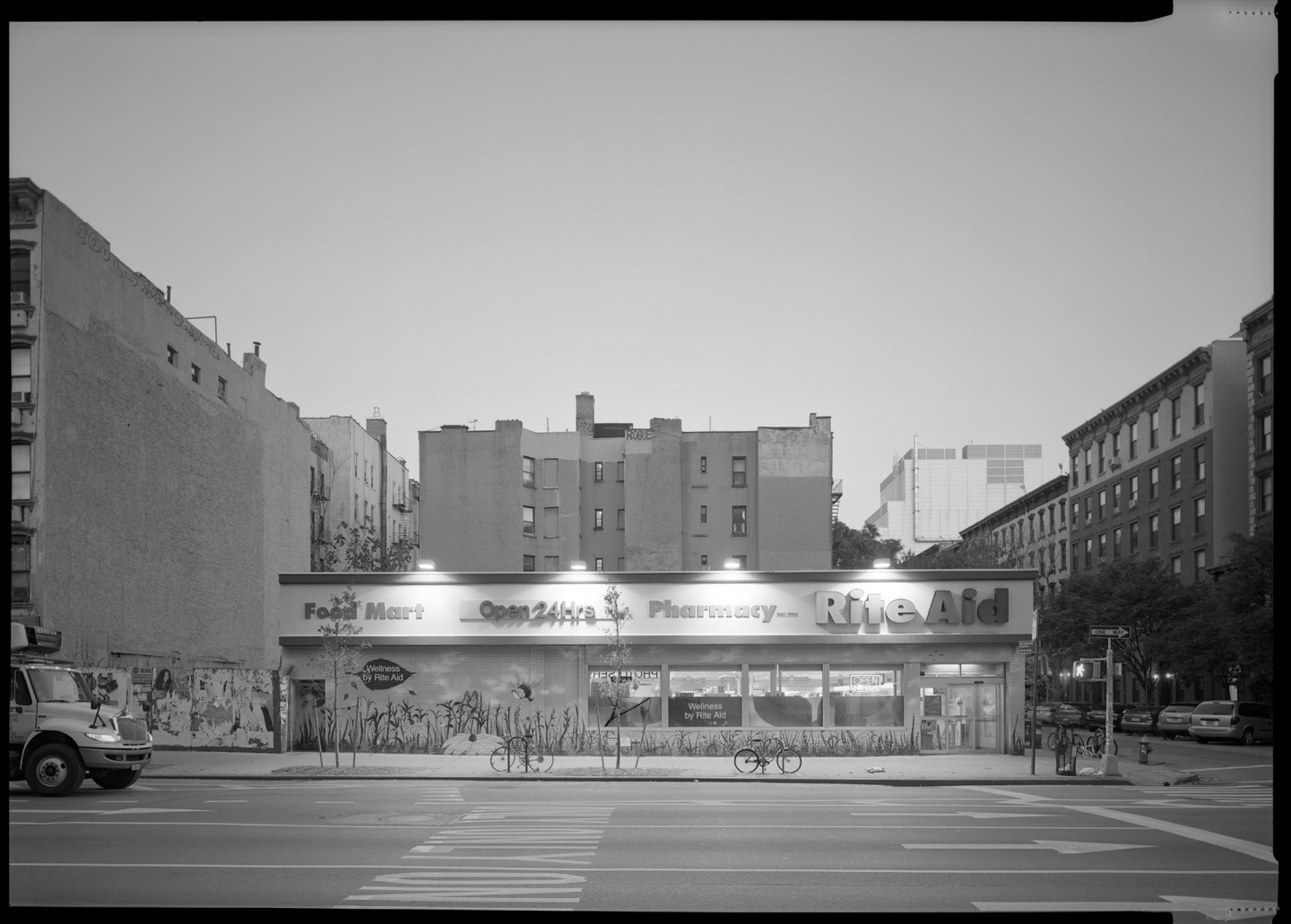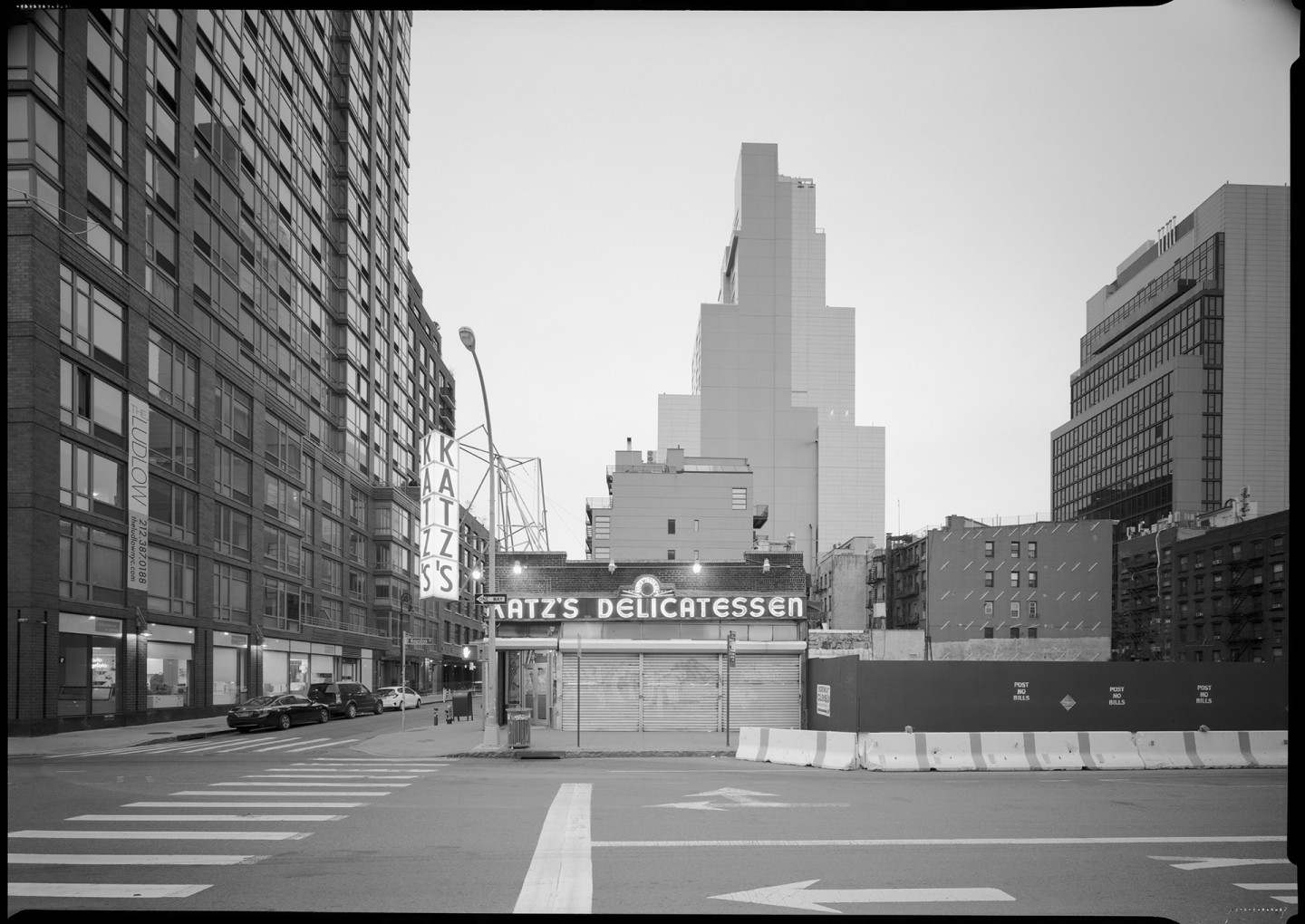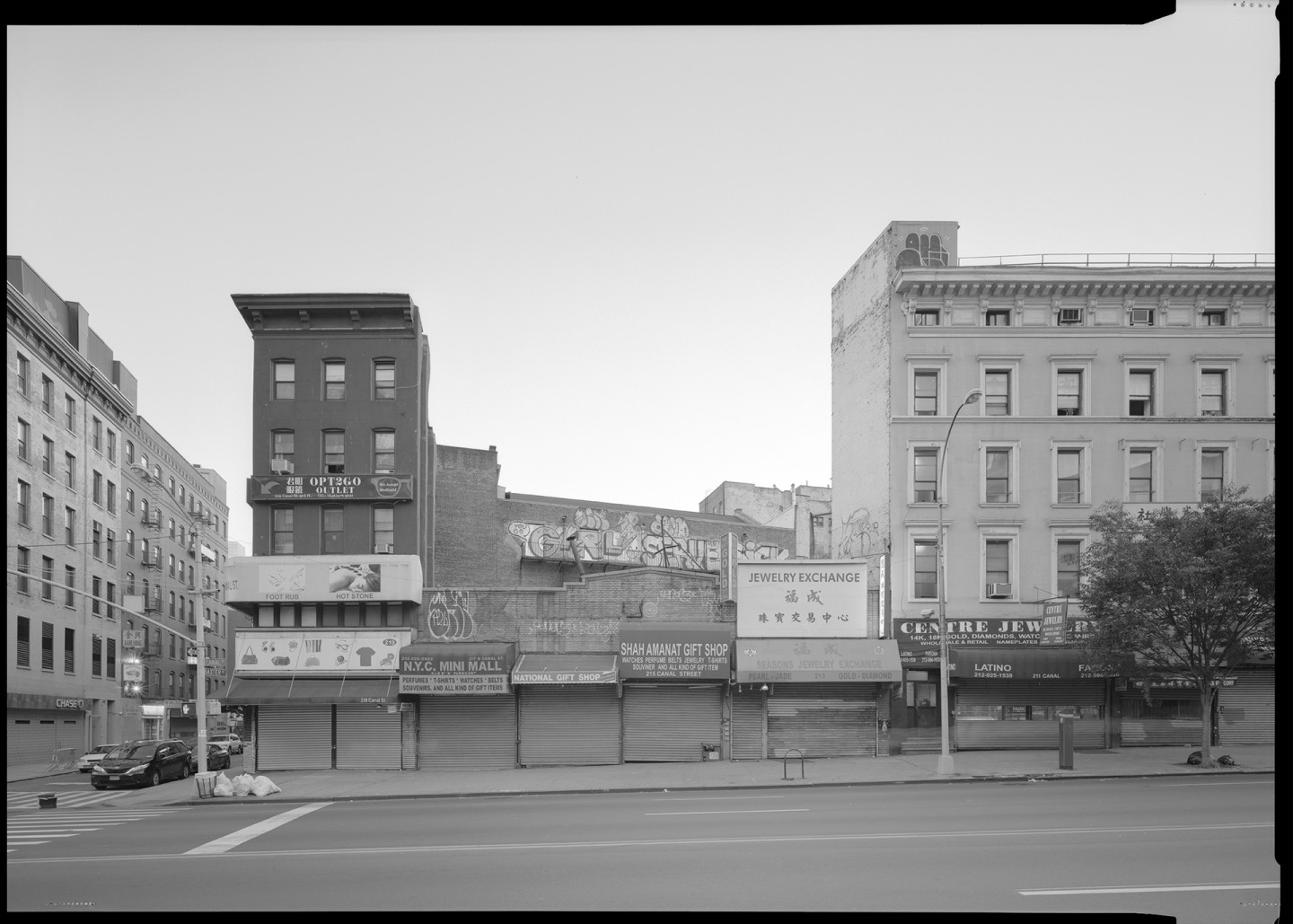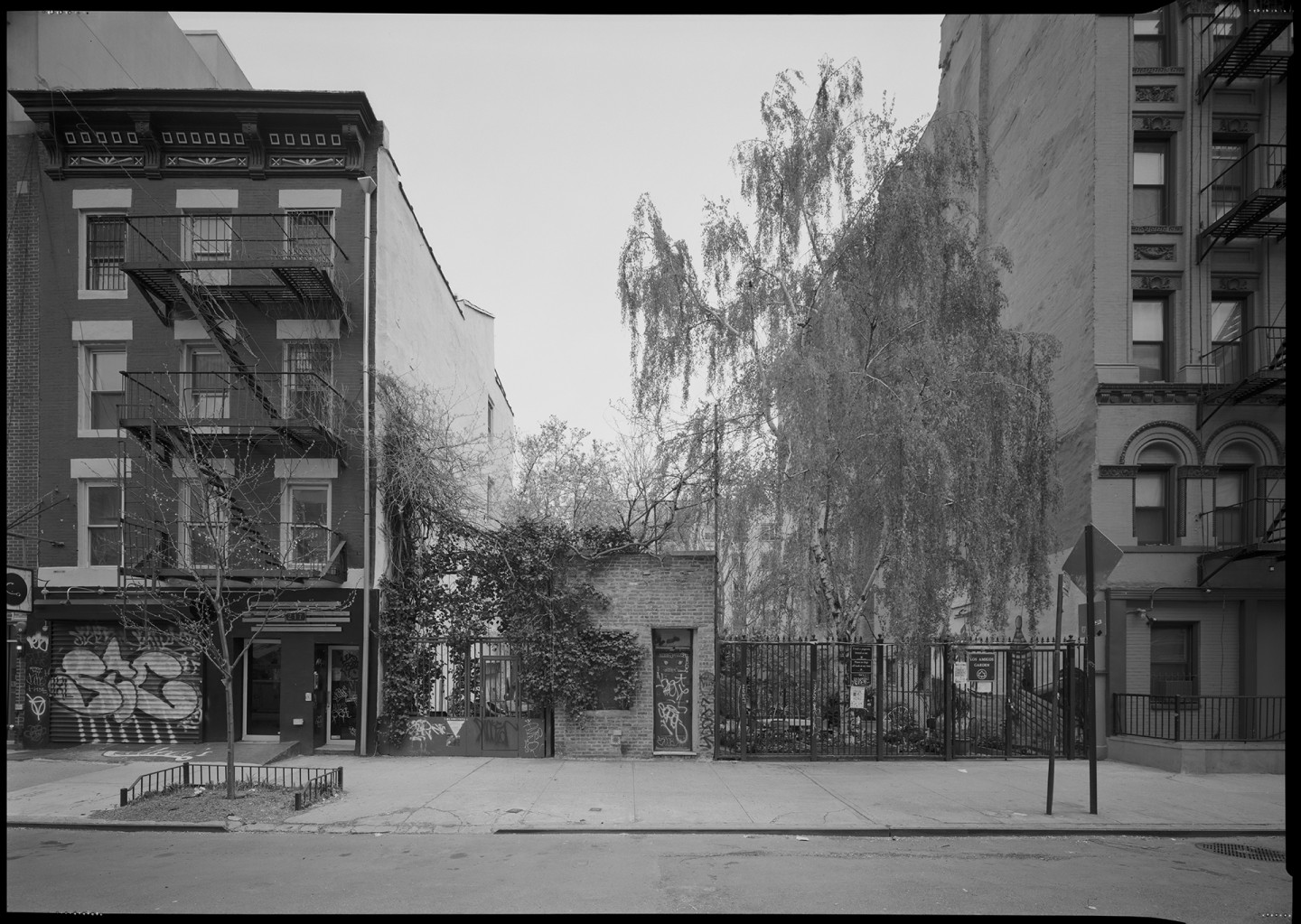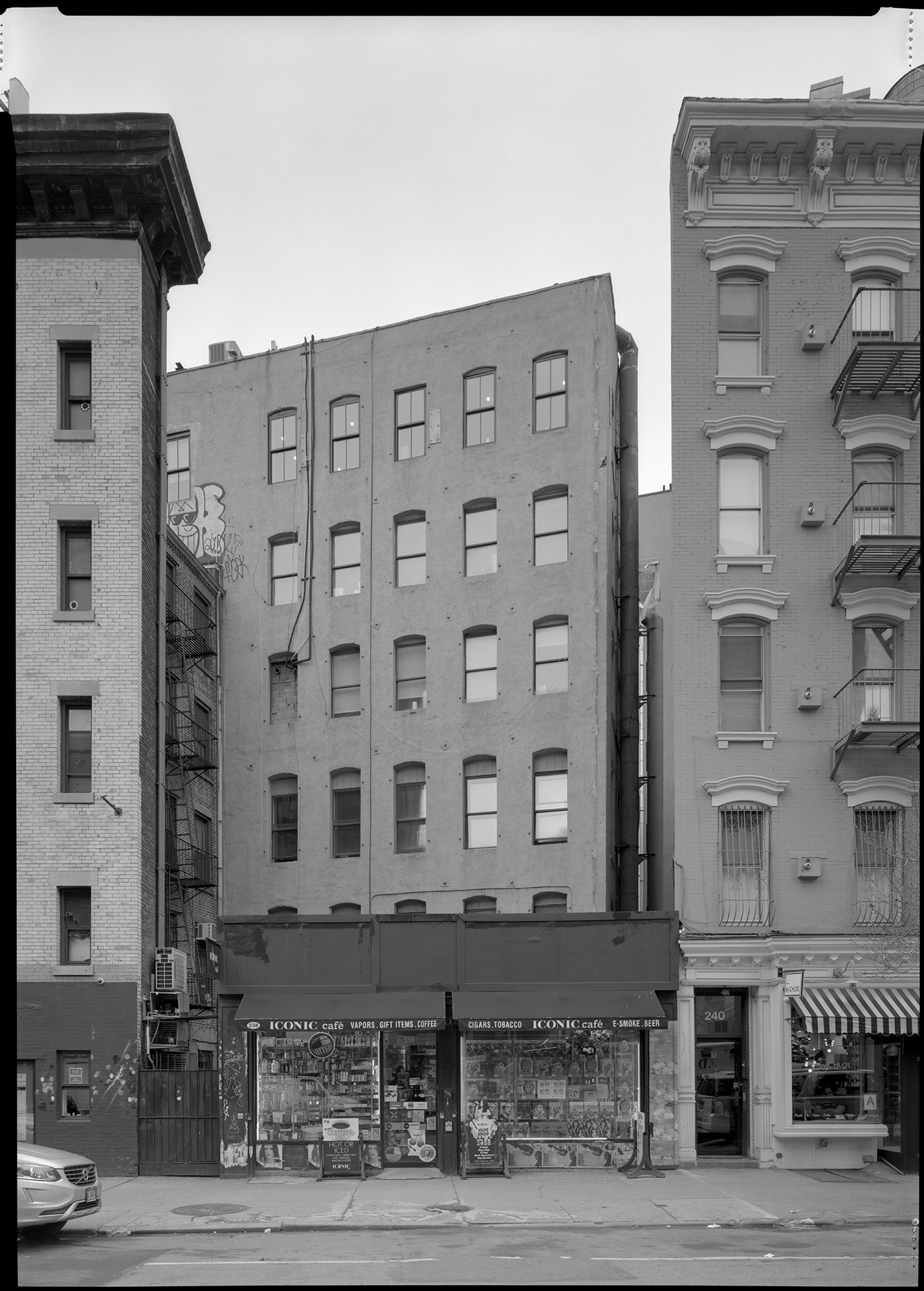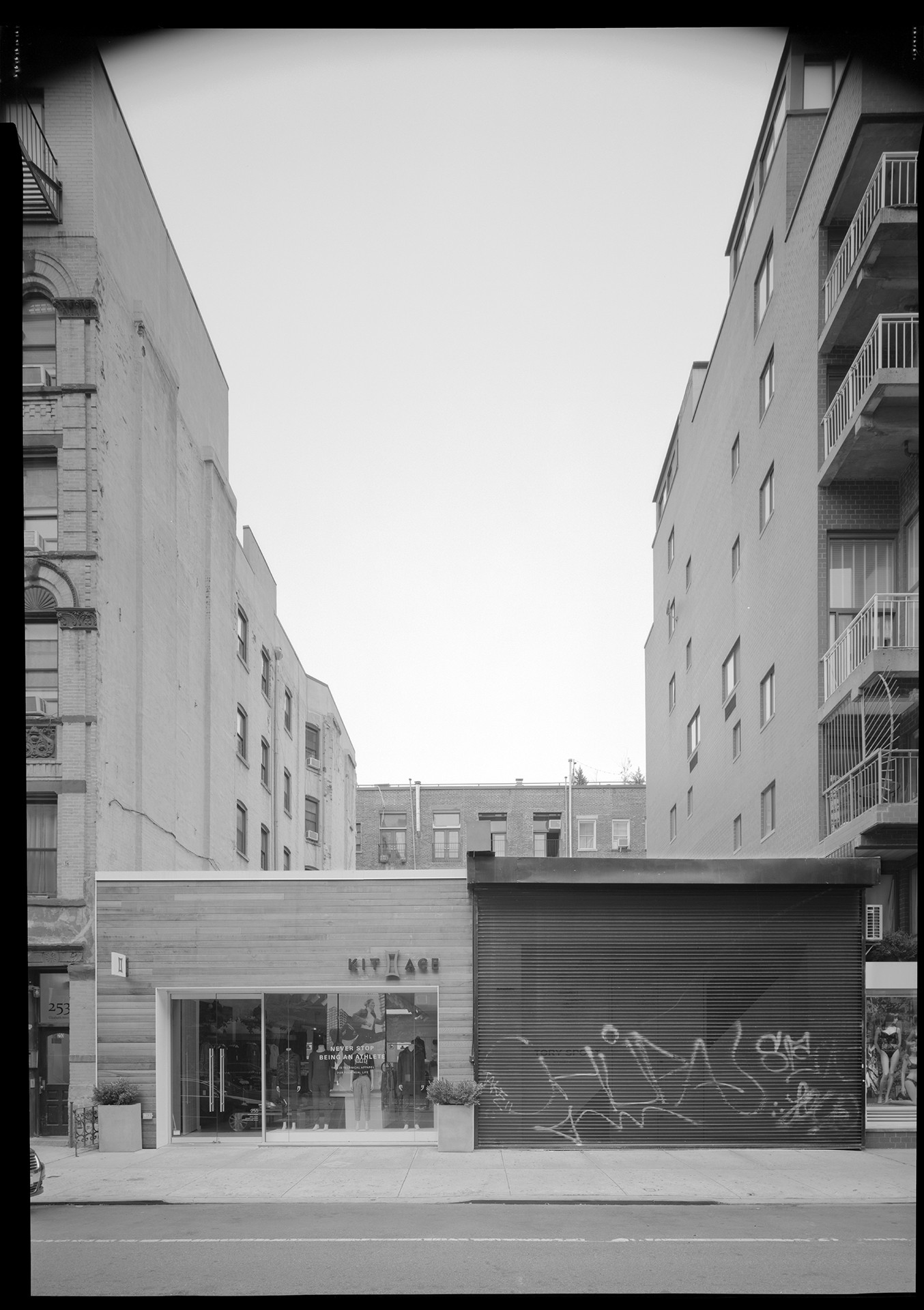In 2015, photographer Adam Friedberg began documenting each remaining single-story building on the Lower East Side and East Village, having noticed how rapidly these structures were disappearing from the landscape. As a longtime resident of the area, and as an architectural and environmental photographer, Friedberg was compelled to document these vanishing structures, offering both an alternative geography and historical document through the logic of negative space. In recent history, the area has been subject to swift, large-scale real estate development and subsequent gentrification, yet it remains the vibrant home of innumerable galleries, cultural stalwarts, and local economies now caught in a perpetual cycle of transformation and erasure.
Friedberg’s project configures the photographer’s own response to these changes, formulating a direct method of research and documentation. Friedberg captured each building using an analog, large-format camera (which he has used since becoming a photographer) from a street-level view, unobstructed by vehicles or foot traffic, by visiting very early in the morning light. During the process, he met many of the residents, owners, and workers in these buildings, learning about their history and impending fate, each located in a transitional moment between steadfast existence and disappearance from this once working-class community.
Single Story is bound by Broadway to the west, Avenue D-Houston Street-Pitt Street to the east, 14th Street to the north, and Canal Street-Essex Street-Delancey Street to the south. Also included in this presentation are sites that the photographer revisited, as well as those that disappeared before he could shoot them. In Friedberg’s words: “These low-riders now stand as outliers—oddballs even. They no longer ‘fit’ their surroundings. Of particular interest to me, and in many ways this project’s point of germination, is the negative space these single-story buildings create. They open the street to the sky, providing a vista that can be enjoyed by all of us. With air rights, sunshine, and city views so valuable, and with the polarization of wealth having a direct impact on the area’s demographics, how much longer can these squat buildings stand?”
Friedberg’s work has appeared in Vogue, Vanity Fair, The Wall Street Journal, The New York Times Magazine, The Architect's Newspaper, W Magazine, Wallpaper, and Conde Nast Traveler, among many others.
For further inquiries, please contact Katrin or James at info@jamesfuentes.com.
A note on architect attributions:
Information on these buildings was collected by the Center for Architecture for the exhibition Single Story Project (https://www.centerforarchitecture.org/exhibitions/single-story-project/) on view at the CFA November 2019–February 2020. Record keeping for vernacular architecture of the sort featured in this exhibition is sparse and inconsistent. Where known, we have indicated the original architect or architect(s) of notable renovations. If you have information regarding the architect for any of the buildings featured, please reach out to exhibitions@centerforarchitecture.org.

